Space
What is the aurora and where can you see them?
Published
2 months agoon


What is the aurora and where can you see them?
The energetic particles of the sun collide with the upper atmosphere of the earth at a speed of nearly 27 million kilometers per hour, but the earth’s magnetic field protects us from this attack. The magnetic field of the earth directs the particles towards the poles and auroras are created during a process. This impressive atmospheric phenomenon has amazed scientists and skywatchers for years.
-
What is the aurora?
-
How is the aurora formed?
-
Why does the aurora borealis consist of different colors?
-
Northern and Southern lights
-
When will we see the aurora borealis?
-
Where can we see the aurora borealis?
-
Auroras on other planets
-
Conclusion
What is the aurora?
The northern lights or aurora borealis are the colorful and eye-catching display of light in the night sky of the Northern Hemisphere. Of course, the auroras of the southern hemisphere are known as the southern lights. The northern and southern lights are both auroras or auroras; Because they appear near the Earth’s magnetic poles.
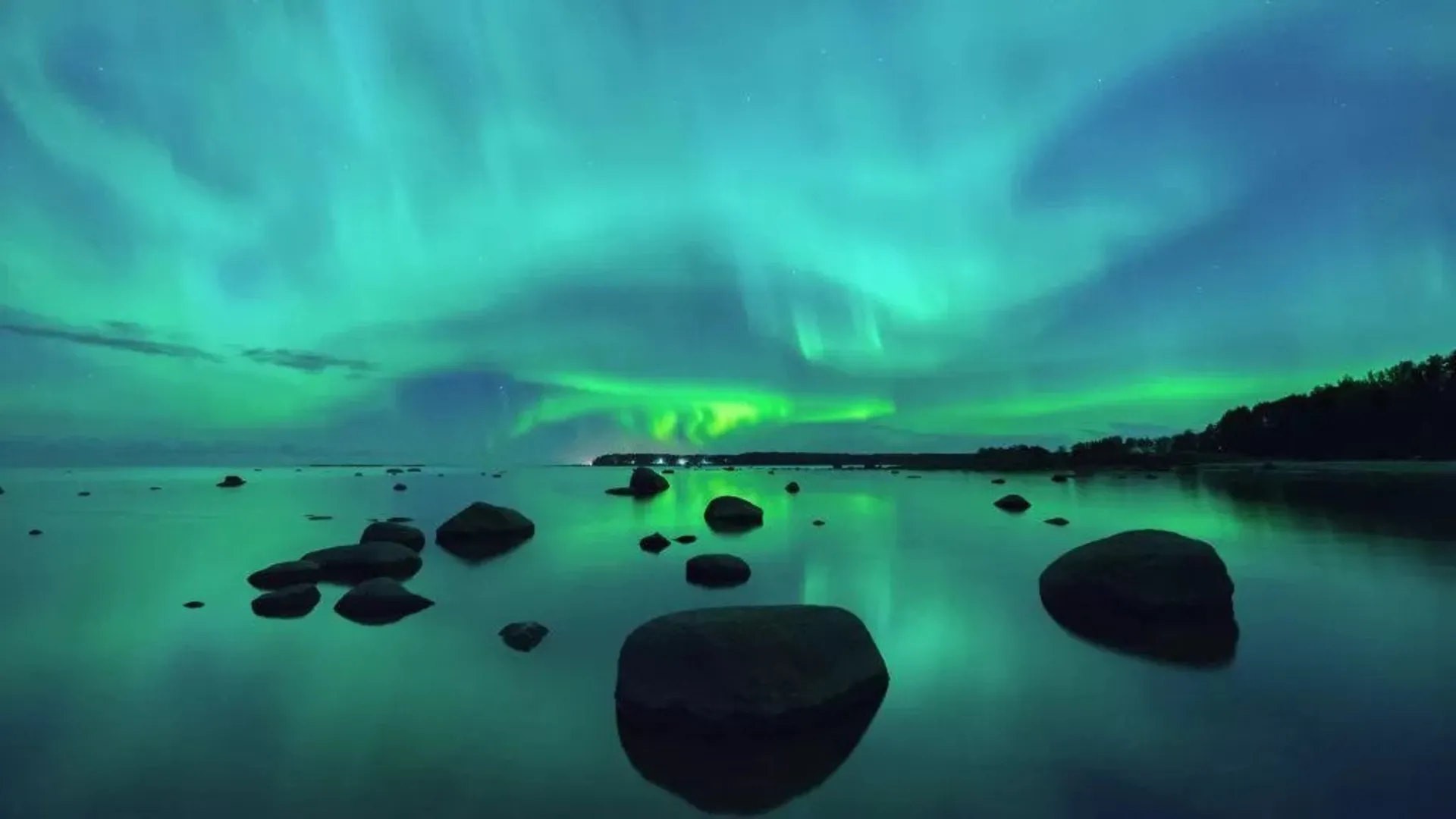 The Northern Lights (Aurora borealis) have lit up the sky of the Gulf of Finland.
The Northern Lights (Aurora borealis) have lit up the sky of the Gulf of Finland.
How is the aurora formed?
At certain moments, the Sun ejects charged particles from its corona or upper atmosphere, causing the formation of the solar wind. The solar wind collides with the ionosphere, or Earth’s upper atmosphere, and these collisions create tiny sparks that fill the sky with colored light. Auroras move or dance across the sky as billions of sparks form in succession. In the northern hemisphere, this phenomenon is called the northern lights (aurora borealis), while in the southern hemisphere, it is known as the southern lights or aurora australis.
Solar charged particles are guided by the Earth’s magnetic field towards the poles and collide with the Earth’s atmosphere. The shape of the Earth’s magnetic field creates two aurora ellipses above the north and south magnetic poles.
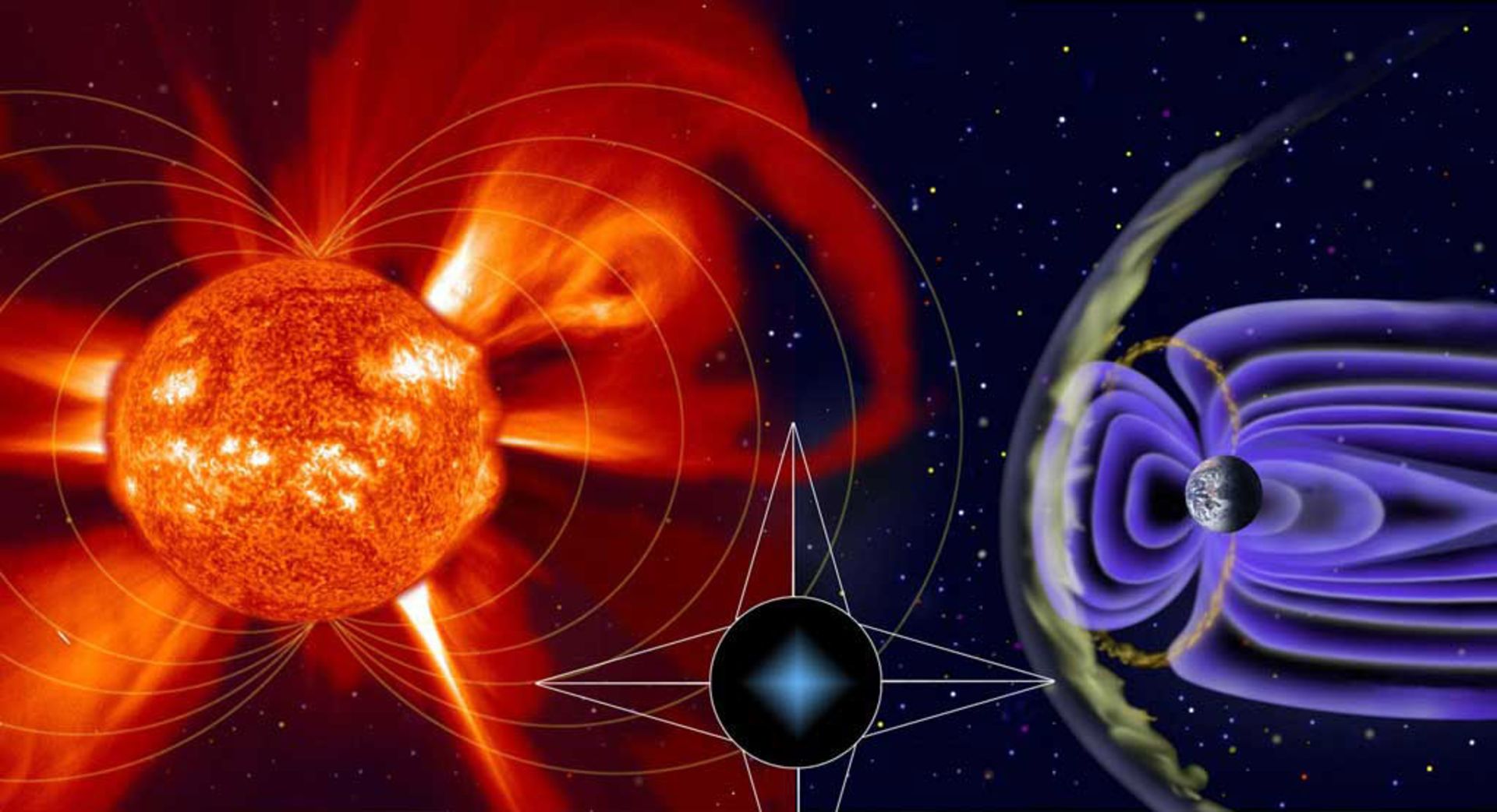 Earth’s magnetic field protects us from the solar wind.
Earth’s magnetic field protects us from the solar wind.
Why does the aurora borealis consist of different colors?
Each type of atom or molecule absorbs and emits a unique set of colors. This feature can be compared to the unique fingerprint of humans. In general, the following colors can be seen in the northern lights of the sky:
- Green: Green is the most common color seen from Earth and is usually created when charged particles collide with oxygen molecules at altitudes of 100 to 300 km.
- Dark red and pink: Sometimes, the lower edges of the aurora are pink or dark red. This color is the result of nitrogen molecules at an altitude of almost 100 km.
- Red: At a higher altitude than the Earth’s atmosphere (300-400 km), the collision with oxygen atoms leads to the production of red auroras.
- Blue and purple: Hydrogen and helium molecules can form blue and purple auroras; But it is usually difficult for the human eye to distinguish these colors from the night sky.
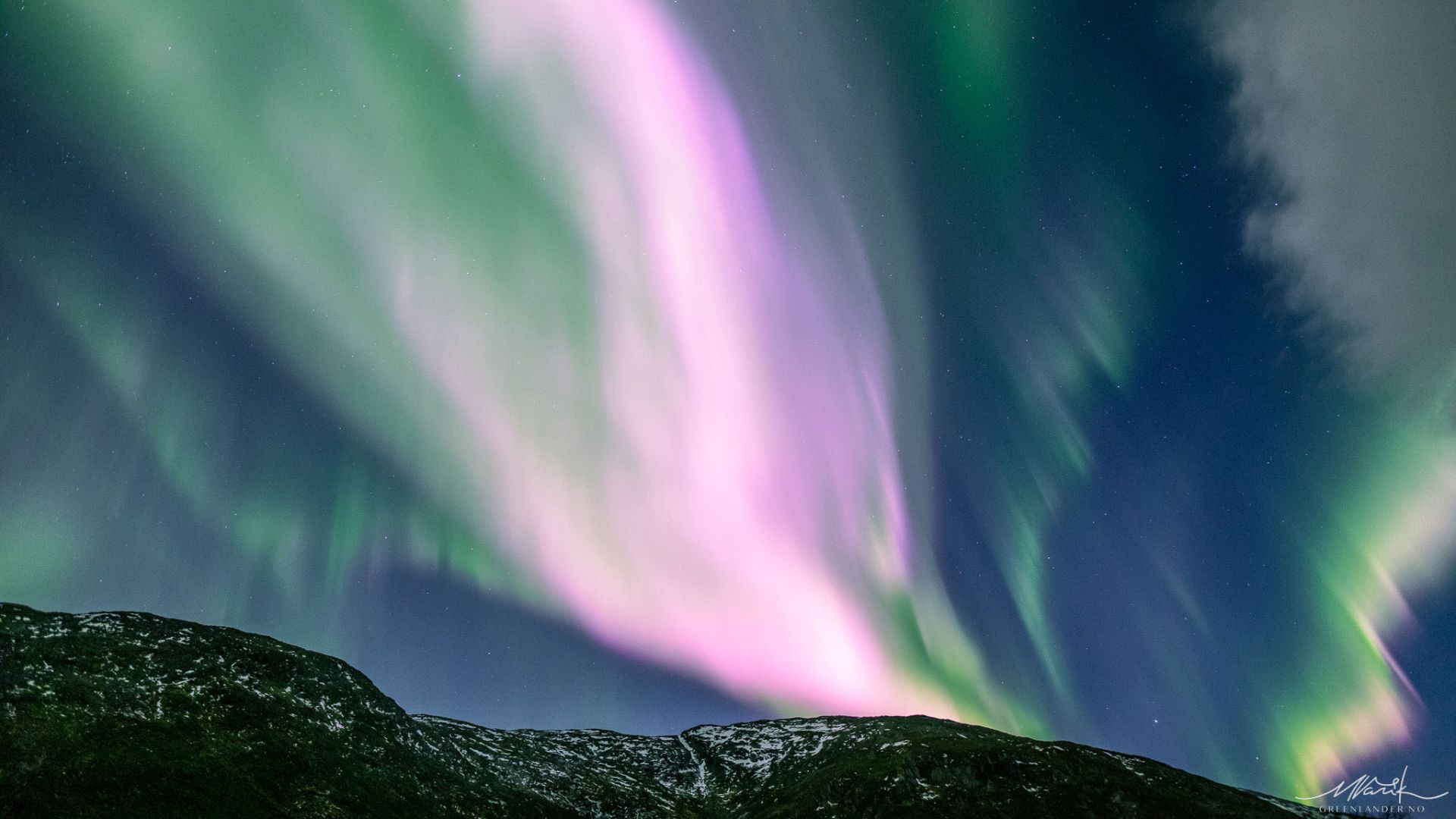 A rare pink aurora in the Norwegian sky
A rare pink aurora in the Norwegian sky
Northern and Southern lights
On Earth, the Northern Lights counterpart in the Southern Hemisphere is called the Southern Lights. The southern and northern lights have the same physical characteristics and the only difference is in their geographical location. Scientists expect the northern and southern auroras to occur simultaneously during a solar storm, but sometimes they appear delayed.
One of the most difficult aspects of the aurora borealis is comparing the northern and southern lights. The hemispheric asymmetry of the aurora is partly due to the interference of the magnetic field of the sun with the magnetic field of the background, but researches is still ongoing in this field.
An aurora-like event is STEVE (Strong Thermal Ray Enhancement). Like the northern and southern auroras, STEVE is a bright atmospheric phenomenon but slightly different from its auroral counterpart. These rays appear as narrow, discrete curves, are often violet in color, and have a green spike-like structure. STEVE is also seen at lower altitudes near the equator.
According to a study published in 2019 in the journal Geophysical Research Letters, STEVE is the result of two mechanisms: the purple streaks that result from the heating of charged particles in the upper atmosphere, and the spike-like structure that results from the fall of electrons into the atmosphere. The second process is the same as the cause of the aurora borealis, that’s why the STEVE phenomenon is considered a special and combined type of aurora borealis.
 THE STEVE PHENOMENON
THE STEVE PHENOMENON
When will we see the aurora borealis?
If you’re looking to see the auroras, try not to do it in the summer. You need darkness to see the aurora borealis, and usually, the summer months have the least darkness; The good news is that the 11-year cycle of solar activity is at its peak, and we will likely see sunspots, flares, and coronal mass ejections more frequently than in previous years.
The phenomenon of mass ejection from the solar corona is the most powerful source of pregnancy particles that leave the solar corona or the upper atmosphere of the sun. When the Sun emits these plasma eruptions towards the Earth, amazing auroras are created; But knowing the solar weather alone is not enough to predict the aurora borealis. But you need a clean and clear sky. In the Northern Lights region, the spring and winter seasons are less cloudy than the fall season, so planning a trip between December and April is a good idea. Ideally, it is better to travel at the time of the new moon and make sure you are far enough away from the city lights.
Dress warmly and go watch the Northern Lights between 10 pm and 2 am local time. Periods of aurora activity usually last 30 minutes and occur every two hours. Aurora is an intermittent phenomenon and occurs randomly for short intervals.
You can use Geophysical Institute’s aurora forecasts to find out the extent of aurora activity in your area. It also provides instant information for aurora enthusiasts for a website called Aurorasaurus.
You can even see the aurora borealis without leaving your home. The Canadian Space Agency provides live sky feedback over northwestern Canada during the fall, winter, and spring seasons.
 Aurora over the radar facility, Mount Murphy Dome, April 2012
Aurora over the radar facility, Mount Murphy Dome, April 2012
Where can we see the aurora borealis?
But where exactly should we go to see the auroras? People living in Europe can go to Norway, Sweden and Finland. Many of the native people of these regions are fluent in English and there are numerous tours to see the Northern Lights.
Iceland is also a good choice, although the country’s cloudy skies make it difficult to see the aurora borealis on some nights. Also, the country of Russia has a part of Shafaqi in the northern areas, but it is difficult to reach these areas because they lack tourist infrastructure. If you are lucky, you can see aurora borealis in Moscow or St. Petersburg; But you must get away from urban light pollution.
In North America, there are many options for seeing the aurora borealis. Of course, eastern Canada is usually cloudy. Alaska Tours also provides visitors with different types of trips and options.
Read More: The planet Neptune; Everything you need to know
Auroras on other planets
Auroras can also occur on other planets. The prerequisites for the aurora to appear are the atmosphere and the magnetic field. Auroras can be seen in the atmosphere of all gas giant planets like Jupiter and Saturn, which is not strange; Because all these planets have very strong magnetic fields. Surprisingly, auroras can be seen on Venus and Mars despite their weak magnetic fields.
Astronomers have also observed glimpses of auroral activity in other systems. For example, two studies in 2021 reported the discovery of radio waves emitted by red dwarf stars, which are stars smaller and fainter than the Sun. These waves are likely related to a type of inverted aurora that occurs near stars and is caused by particles emitted from nearby planets. Auroras are probably also common in the sky of exoplanets, but we need more detailed and clear observations of these planets.
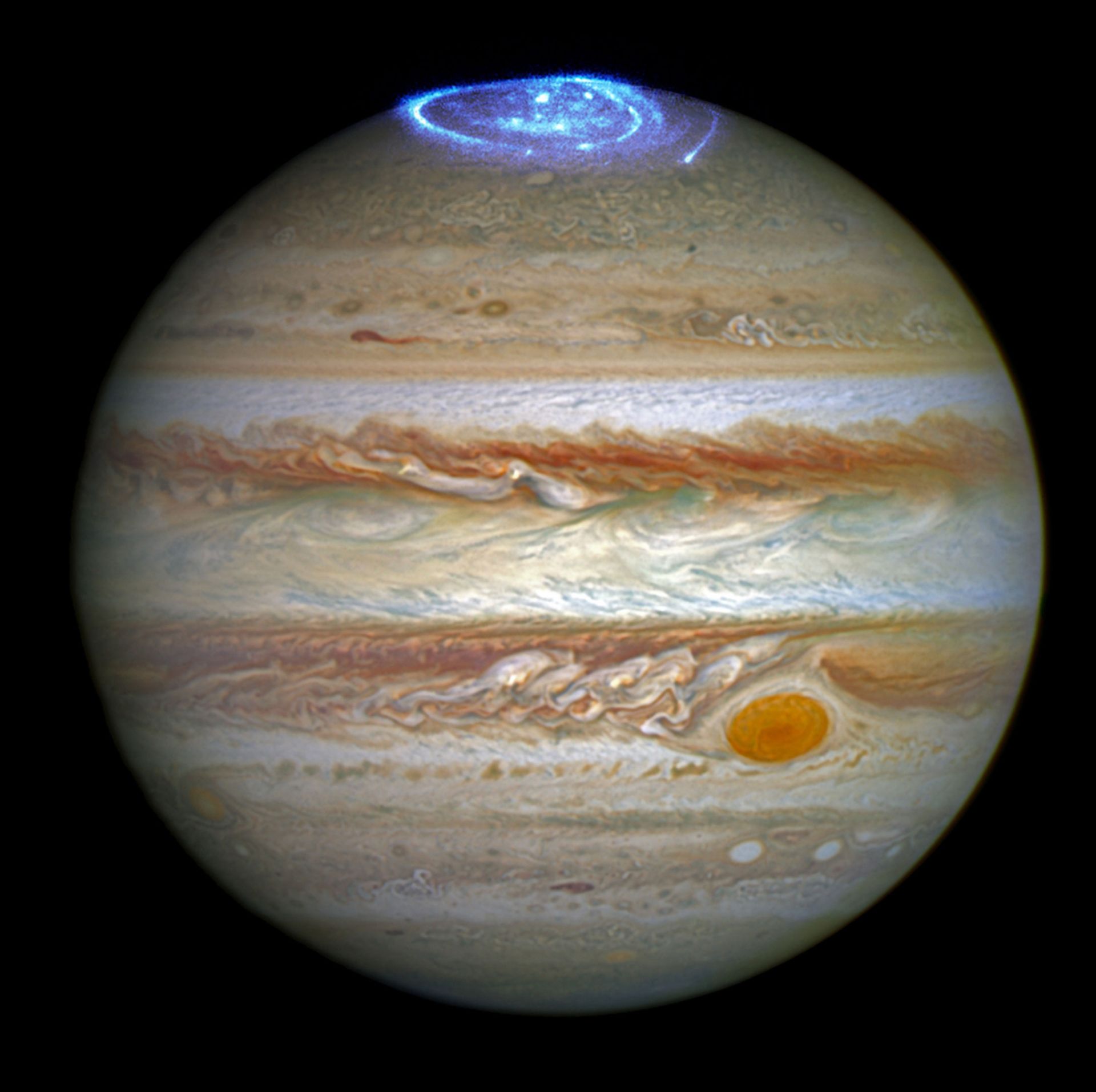 Jupiter’s aurora borealis
Jupiter’s aurora borealis
Conclusion
Aurora Borealis is an atmospheric phenomenon that occurs due to the collision of energetic particles with gases in the Earth’s atmosphere. Auroras have different colors based on air molecules and can be seen in both North and South Poles. The best times of the year to see the Northern Lights are spring and winter because the sky is clearer and less cloudy at these times, and the best countries are the Nordic countries like Canada, Norway, Sweden, and Finland. However, during rare conditions, auroras can also be seen at lower altitudes, such as England. Northern lights do not occur in Iran due to the great distance from the pole.
Auroras can also be seen in other planets of the solar system, such as gas giants. The possibility of auroras occurring on these planets is high due to the presence of a strong magnetic field. However, auroras have also been observed on planets such as Mars and Venus, which have weak magnetic fields.


You may like
-

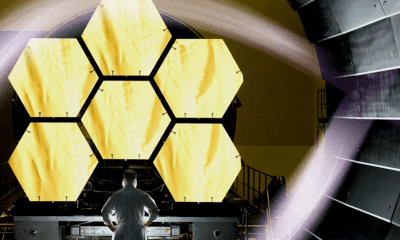


The James Webb Space Telescope; A look at the vastness of the universe
-

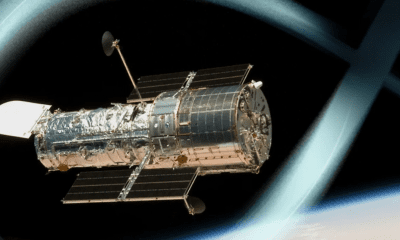


Hubble Space Telescope; A portal to the mysterious depths of the universe
-




Moons of Jupiter; Features and Explorations
-

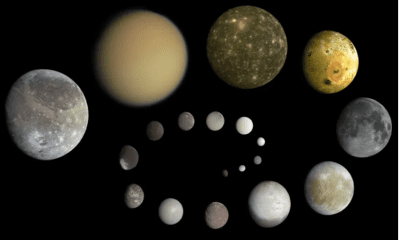


Ten strange moons of the solar system
-

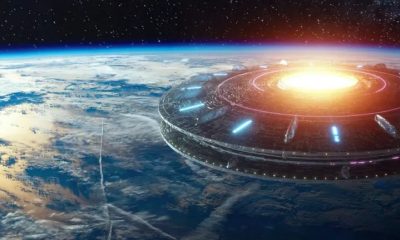


Extraterrestrial civilizations may be too advanced to detect
-

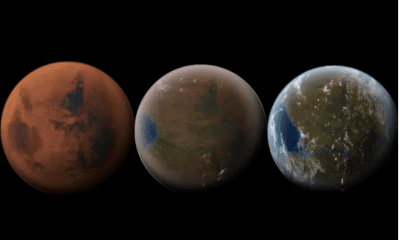


Landing Mars may be easier than scientists think
Space
The James Webb Space Telescope; A look at the vastness of the universe
Published
3 days agoon
02/09/2024

The James Webb Space Telescope; A look at the vastness of the universe
About 400 years have passed since Galileo first looked into space with his telescope. During this time, we humans have made significant progress not only in astronomy but in all scientific fields. Our knowledge in the field of arranging mirrors and lenses and using new technologies in making tools has given us the power to see the world we live in and to be aware of our place.
-
History of James Webb Space Telescope
-
James Webb space telescope design
-
James Webb Space Telescope Instruments
-
Near-infrared camera (NIRCam)
-
Near Infrared Spectrometer (NIRSpec)
-
Middle Infrared Instrument (MIRI)
-
Precision guidance sensor near-infrared imager and slitless spectrometer (FGS/NIRISS)
-
Satellite bass
-
The mirrors of the James Webb Space Telescope
-
The launch of the James Webb Space Telescope
-
the first hour
-
the first day
-
first week
-
The second week
-
first month
-
The second month
-
the third month
-
The fourth, fifth, and sixth months
-
After six months
-
Objectives of the James Webb Space Telescope
-
James Webb Space Telescope photos
-
summary
Perhaps many of us remember the moment when the Hubble Space Telescope sent the first image of the universe to Earth; It was at that exciting moment that the science of astronomy entered a new era and took a step in the path of progress. Hubble was a telescope that helped us a lot in understanding the universe and by recording amazing images from different parts of space, it reminded us that we are nothing in this world and we should appreciate every moment of our life. The modern science of astronomy is somehow indebted to Hubble; A powerful telescope that has now been replaced by the world’s newest multi-purpose space telescope.
Sometime after the completion of the Hubble construction process, the idea of building a telescope that could replace Hubble was proposed. At first, this telescope was limited to ideas and theories; But gradually it became serious until finally, scientists decided to make it. This telescope is called James Webb, which after years of delay and expense was finally launched in the last days of 2021. James Webb is one of the most expensive and advanced telescopes in the world, and NASA faced various problems in securing the necessary funds for it. This telescope has a complex structure and unlike Hubble, it does not orbit the Earth; Rather, it revolves around the sun in a much more distant orbit. In this article, we are going to get to know James Webb, the newest and most powerful space telescope in the world.
History of James Webb Space Telescope
The idea of developing a telescope to replace Hubble was proposed between 1989 and 1994. This infrared conceptual telescope with a 4-meter aperture was called Hi-Z and orbited the Sun at a distance of 3 AU (three times the distance of the Earth from the Sun). This circuit was very far away, But it also had advantages. The telescope remained an idea until other designs gave it new life. The scientists gave the initial name of this project NEXUS, which was very innovative at the time; But NASA had a different opinion. In the mid-1990s, the US space agency announced that it would invest in a project that would be done quickly, be the best, and have the lowest cost; So NASA’s top managers focused on building a low-cost space telescope. The result of this decision was the NGST concept telescope with an 8-meter aperture that orbits the Sun in Lagrangian 2 (L2) orbit, But it only cost 500 million dollars.
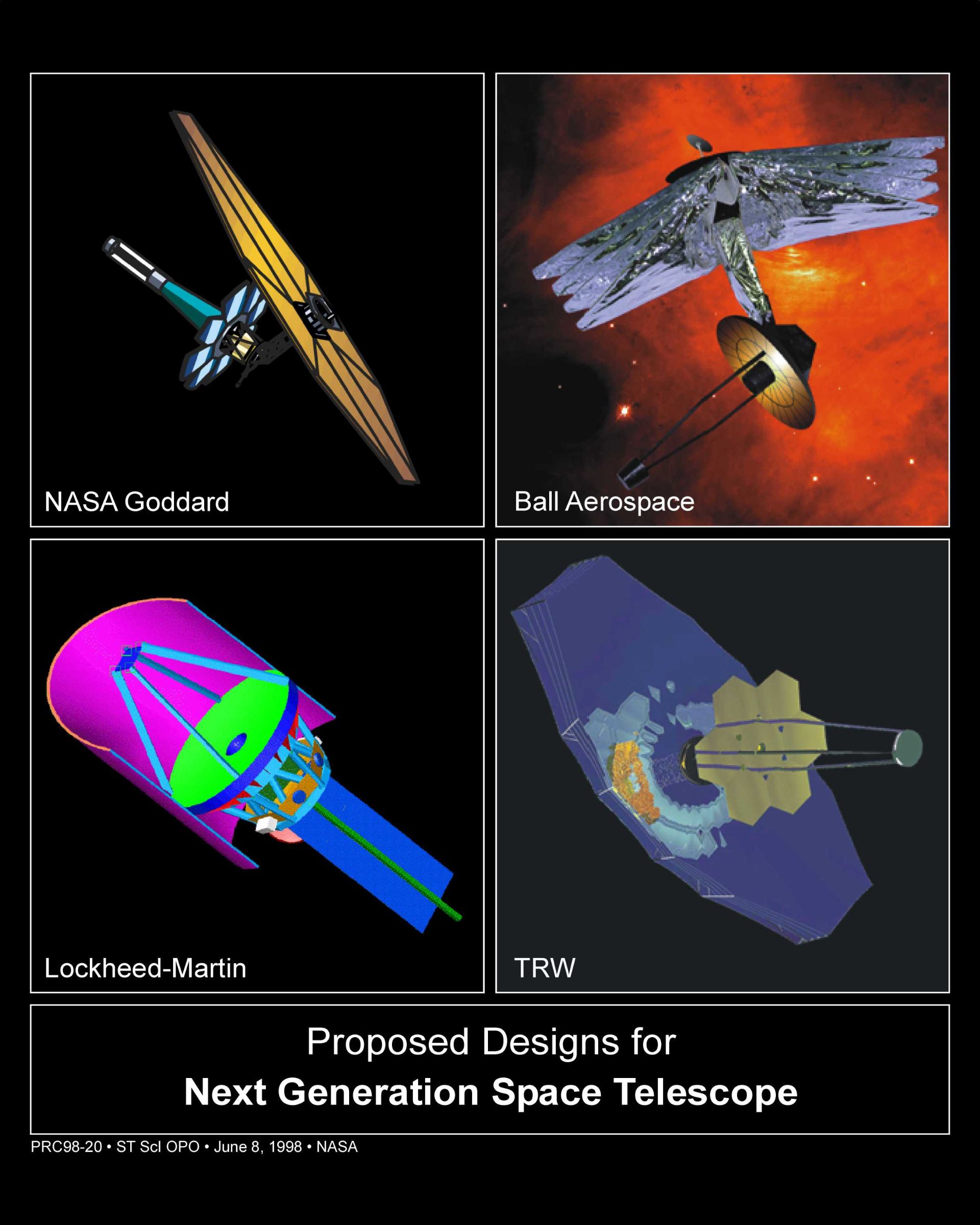
Early proposed designs for the James Webb Space Telescope.
NASA accepted the project and immediately signed a contract with Goddard Space Flight Center, Bal Aerospace, and TRW to conduct studies on the technical requirements of the project as well as its various costs. In 1999, NASA contracted Lockheed Martin and TRW to build an early version of its concept telescope. In 2002, a conceptual telescope was built and TRW agreed to fully build the NGST, now known as James Webb, and deliver it to NASA by 2010 in exchange for $824.8 million. At the end of 2002, TRW was acquired by Northrop Grumman, and the James Webb project was also assigned to this aerospace company.
The initial conceptual design of the James Webb telescope was created in 1996
Northrop Grumman has a long history in the field of aviation equipment, and the F-14 Tomcat (also known as the Grumman legend) is one of the most successful products of this company. According to Grumman’s brilliant history, NASA chose this company as one of the main employers of the project and entrusted it with the task of manufacturing the main parts, including the satellite bus and solar shield, and some small parts of James Webb. Bal Aerospace Company also undertook the task of manufacturing the optical parts of the telescope or OTE for short. OTE consists of a 6.5 m diameter main mirror (including an array of 18 hexagonal mirrors), a 74 cm circular second mirror, a third guiding mirror, and telescope optical structures. On the other hand, the design and construction of the protective tower (DTA) of the telescope was also assigned to Northrop Grumman. The DTA is responsible for protecting the solar shield and the satellite bus during launch and makes the telescope structure as small as possible to fit into the rocket. NASA announced that at the Goddard Space Flight Center, it will develop advanced solar panels that will be responsible for supplying energy to the telescope’s systems and equipment.
NASA later announced in 2005 that there were changes in the program and some of the telescope’s equipment had to be changed, which caused the telescope’s launch to be delayed by 22 months and the launch date was postponed from 2011 to 2013. NASA also announced that it will no longer test systems at wavelengths shorter than 1.7 micrometers to focus on other areas. In 2006, the program had to be revised again; But this time the matter was not only in the technical field, but NASA also had to make a series of changes in the financial field so that the budget it had was distributed correctly.
That same year, NASA estimated that the cost of building and supporting the James Webb Telescope over its life cycle would be about $4.5 billion. Of this amount, $3.5 billion will be spent on design, manufacturing, launch and placement into orbit, and $1 billion will be the cost of supporting the telescope over the decades of the mission. The European Space Agency announced that it will provide 300 million dollars of this funding and will also accept the cost of the launch. On the other hand, the Canadian Space Agency also provided 39 million Canadian dollars from this budget. According to this information, the main cost of the project fell on NASA.

A full-scale model of the James Webb Space Telescope in Battery Park in Manhattan in 2010.
In January 2007, engineers announced that nine of the telescope’s 10 science instruments had successfully passed unshielded tests. In March 2008, the telescope successfully passed the initial design review test. By 2011, the telescope had successfully passed all tests and inspections and entered the final stage of structural design and body design. Since it was not possible to change the design and structure after the project was finalized and the launch time was approaching, the engineers had to use their utmost precision and examine the structure and tools with complete delicacy. From the 90s, when the idea of the telescope was proposed, until 2011, new scientific achievements were achieved that were used in the telescope. For example, in the 1990s, scientists did not know how to design a large telescope with lightweight.
High costs and lack of funds pushed the project to the point of cancellation
Unfortunately, things did not go well, and NASA found that the cost of building the telescope would be almost double what it had been estimated in 2006. This means that the cost of developing and supporting the telescope is about $8.8 billion, which is almost double the $4.5 billion projected in 2006. It was at this moment that there was a risk of canceling the project at any moment, America had just gone through an economic crisis, and NASA was having trouble asking for more funding. Until 2011, the launch date of the telescope was changed 10 times, each time for technical and financial reasons. NASA announced in 2011 that it is not possible to launch the telescope until 2018, and due to the high cost of the project, more tests should be done so that the possibility of error is almost zero.
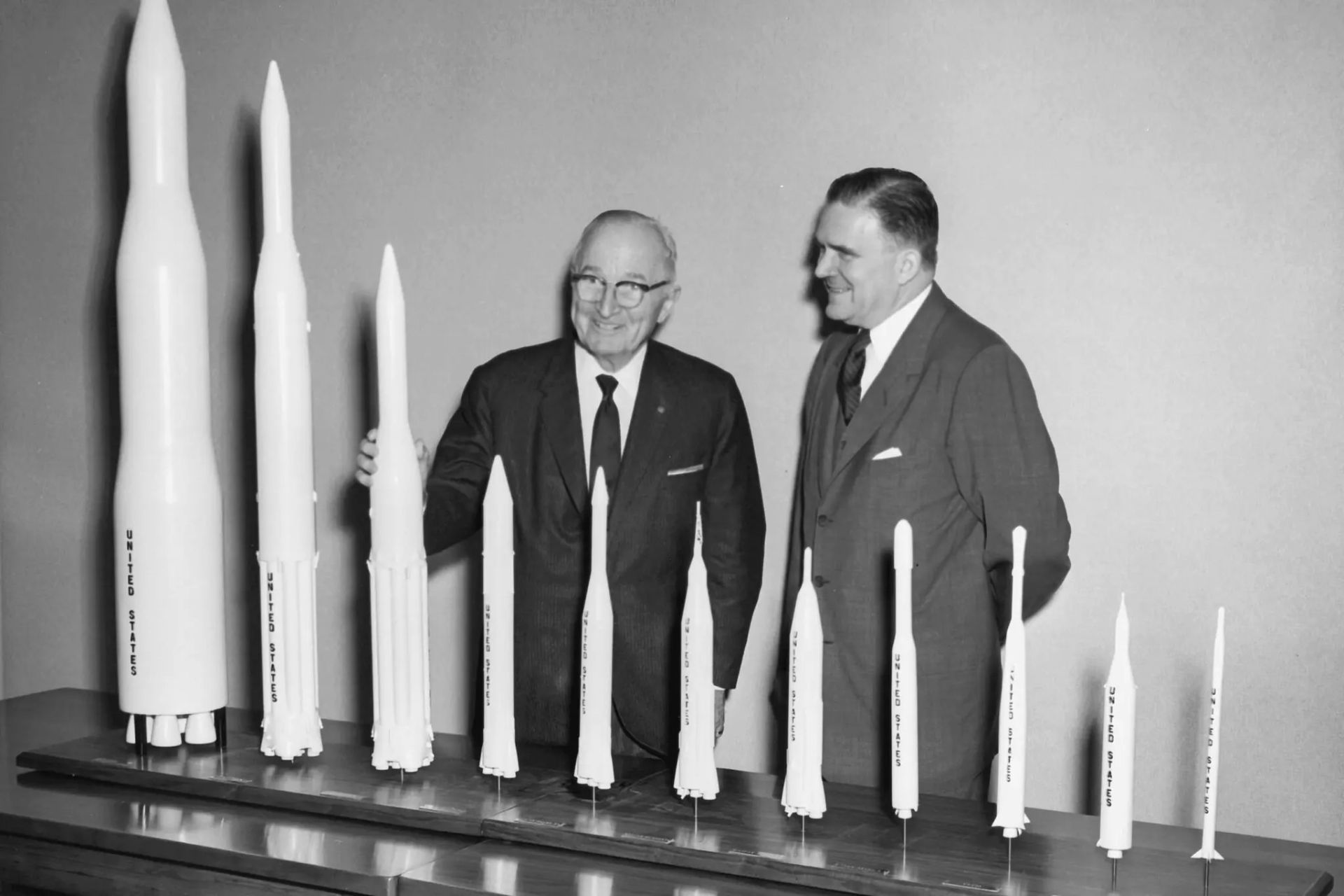
James Edwin Webb (right), former NASA administrator, with former US President Harry Truman in 1961. In 2002, in an unprecedented move, NASA chose the name of a non-scientist for one of its scientific missions.
In 2017, NASA again changed the launch date and postponed it to 2019; Because some instruments needed more testing and the simulation of the placement of the telescope in the rocket had to be done accurately. At the same time, Eric Smith, director of the James Webb project, said:
The spacecraft carrying the telescope and solar shield are larger and more complex than most spacecraft. The process of assembling and integrating some parts is more time consuming than we had planned. For example, we have more than 100 solar shield curtain releasers to test; Also, a while ago we increased the duration of the vibration tests and according to the information we obtained from it, we must say that the integration and testing process will also be time-consuming. Considering NASA’s huge investment in this project and the good and satisfactory performance to date, we have decided to put more sensitivity on these experiments so that everything is ready for the telescope launch in the spring of 2019.
However, the problems seemed insurmountable. On March 27, 2018, it was announced that due to problems with the propulsion system and the solar shield, the telescope would not be launched until at least May 2020. Shortly after, NASA announced the exact launch date of James Webb as March 30, 2021 (April 10, 1400). Then in early 2020, due to the problems caused by the spread of COVID-19 and technical challenges, the launch was postponed to October 31, 2021 (Aban 9, 1400). Various problems appeared one after the other, and the launch date was repeatedly postponed until, after almost 25 years of protracted construction, the strange terrestrial object, which for decades had only appeared in photos and videos, finally took to the skies on 4D1400. made way The timeline of James Webb’s development is as follows:
- 1996: The idea of building a new generation of space telescopes was proposed and its conceptual plan named NEXUS was created.
- 2000: The NEXUS project was canceled.
- 2002: TRW announced that it would cost $824.8 million to build the NGST telescope.
- September 2002: The name of the telescope was changed from NGST to James Webb.
- January 2007: 9 out of 10 science instruments successfully pass unshielded tests.
- April 2010: Testing of critical technical and design sections (MCDR testing) was successfully completed.
- July 2011: The project threatened to be canceled due to lack of funding.
- November 2011: Funding secured and development of James Webb continued.
- 2012: The Mid-Infrared Imaging Instrument (MIRI) was brought to the US by the European Space Agency.
- March 2013: A Full Directing Sensor (FGS) and Near Infrared Spectrometer (NIRISS) were installed on the telescope.
- July 2013: The MIRI component was installed on the telescope.
- March 2014: The NIRCam imager and NIRSpec spectrometer were installed on the telescope.
- June 2014: All instruments were tested in NASA’s cryogenic chamber under simulated space conditions.
- December 2014: The US government added another 650 million dollars to the project budget.
- February 2015: Robotic arms install hexagonal golden mirrors.
- December 2015: The lease contract for the French Guiana launch pad and Ariane 5 rocket was signed.
- March 2016: The cryogenic testing of all equipment and mirrors was successfully completed.
- March 2016: The second mirror was installed on the OTE complex.
- November 2016: The construction of the telescope is officially finished; But more tests were needed.
- January 2017: James Webb is still healthy after experiencing an abnormality in the experiment.
- June 2018: Based on the recommendation of an independent review board, James Webb’s launch is postponed to March 30, 2021.
- July 2020: The global coronavirus pandemic and technical problems caused the launch to be postponed until October 31, 2021.
- December 25, 2021: The James Webb Space Telescope is launched aboard an Ariane 5 rocket from French Guiana.
- January 24, 2022: James Webb reaches its final orbit around Lagrangian Point 2, 1.5 million kilometers from Earth.
- July 11, 2022: Completion of all commissioning activities and preparation for full commencement of scientific activities.
- July 12, 2022: Release of the first full-color images and spectroscopic data.
James Webb space telescope design
The biggest challenge in designing space telescopes is their size. A space telescope is launched into space by a rocket; Therefore, the designers had to do the design in such a way that it is possible to assemble and place the James Webb telescope in the upper part of the rocket. Also, this design should be in such a way that it can be opened in the space as easily as possible.
The James Webb Space Telescope is huge. The main mirror of this telescope has a diameter of 6.5 meters, and none of the current launch devices have the ability to accommodate a device with these dimensions. For example, the main mirror of the Hubble Space Telescope has a diameter of 2.5 meters, which made the process of transferring it to space easier. The dimensions proposed for the James Webb telescope made it impossible to transport it into space; But engineers and designers had to think of a solution for this problem. The main mirror of the Hubble telescope, due to its small diameter, was one piece and circular in shape; But since the main mirror of the James Webb telescope has a diameter of 6.5 meters, it could not be designed in one piece.
In this way, the engineers divided the telescope’s main mirror into three parts, which, when opened, are placed next to each other and form a single mirror; But this single mirror could not be any shape because it would cause optical aberration. The task of designing the shape of the mirrors was entrusted to the optical engineers. According to the simulations, the best case for the mirrors was to design them as a set of smaller, hexagonal mirrors. The main mirror of the James Webb telescope is made of a total of 18 smaller hexagonal mirrors that are placed next to each other in a special way, and there is a hole in the center of this mirror.
James Webb is a telescope designed by Casgreen and does not feature a coma
This hole, which is located in the center of the central mirror, plays a very important role. The James Webb telescope is a Korsch telescope. Korsh is a special type of Casgreen design. When a relatively large primary mirror is used in a Newtonian telescope, an optical aberration known as a coma occurs. In this case, points farther from the optical axis are seen as teardrops. In Cassegrain telescopes, this problem is significantly reduced. In these telescopes, the primary mirror or mirrors, which are concave, receive light from the sky and reflect it to the secondary mirror, which has a convex and hyperbolic surface. This light is then reflected from the secondary mirror and reaches the eyepiece. In these telescopes, which are known as Cassegrains, the distance of the coma is significantly reduced.
The James Webb telescope is also of the Casgreen type, and the center of its main mirror is perforated so that the secondary mirror sends the reflected light to the eye placed behind the central hole. Casgrain design has many advantages, including the compactness of telescopes that use this design. In Cassegrain telescopes, the focal length is long and the image distortion is reduced. The Hubble telescope uses this type of design; In fact, many research telescopes have a similar design.

Another challenge faced by the designers was the telescope’s solar shield. The James Webb Telescope can observe infrared and near-infrared lights. In order to receive and observe these thermal signals, the temperature of the telescope must be extremely low. To protect the telescope from light and heat sources (such as the Sun, Earth, Moon and the body of the observatory itself), engineers designed a 5-layer solar shield made of a very thin material called Kapton, which is the size of a tennis court. This solar shield acts like an umbrella or shade to prevent heat and light from reaching the telescope. This shield has a length of 21.197 meters and a width of 14.62 meters, which is large enough to completely cover the telescope. This layer causes the telescope to be placed in an environment with an average temperature of -223 degrees Celsius.
The interesting point in the design of the solar shield is its multi-layered nature. Scientists could produce this shield as a thick layer, But being 5 layers has its advantages. In this solar shield, each layer is cooler than the outer layers. There is a space between these layers that is a very good insulator; Therefore, the heat is spread between the layers and out. If the solar shield was made of a thick layer, the heat would cover the shield from the top to the bottom and it would be difficult to get it out.
The design of the layers of this solar shield could be any shape, But the engineers found that the best case is the kite-shaped design. This particular design as well as the number of solar shield layers play a key role in the telescope. The distance of these kite-shaped layers has also been determined with high precision and delicacy to have the best performance in the field of cooling. The kite-shaped design of the layers causes the heat to be directed to the sides and the remaining part is transferred between the layers until it finally exits between the layers. This unique design ensures that the heat from the satellite bus is instantly transferred by the layers so that it does not reach the optical equipment.

James Webb Space Telescope Instruments
The main equipment installed on the telescope is integrated and placed on a module. This module, known as the “Integrated Scientific Equipment Module” or ISIM for short, is actually a one-piece scaffolding structure that engineers call the heart of the telescope; Because almost all scientific instruments of the telescope are installed on this chassis. 4 scientific instruments of the telescope are installed on this ISIM and work in an integrated manner. Placing this equipment on a chassis is a very difficult task, and engineers have divided the ISIM into three main areas to simplify the task.
In Area 1, there is a cooling device that is responsible for regulating the temperature of the sensors. These coolers must always keep the temperature of the sensors at 39 degrees Kelvin or -234 degrees Celsius. It is very important to do this; Because the cooling makes the heat of the telescope body not interfere with the infrared light that is the result of the heat of distant cosmic sources. The ISIM temperature management system and optical components also keep the temperature lower to cool the sensors further.
Four advanced scientific instruments are installed on the main module
In area 2, the electronic equipment compartment is placed. This housing has a prominent body that houses electronic components. The temperature of this chamber is different from the outside temperature and is a suitable environment for electronic equipment. The controlled temperature of this part makes the electronic equipment work in the best possible way and their useful life is also increased.
The third area is actually located in the satellite bus. In this area, the command and data processing unit of the telescope is located; Also, integrated flight software and control electronics are located in this area. As it was said, 4 of the scientific instruments of the telescope are placed in this section, which we will introduce and examine in the following.
Near-infrared camera (NIRCam)
NIRCAM is a highly accurate and advanced imager developed by the University of Arizona, which is installed on the ISIM module. This very important piece has two main tasks: first, it must image light in the 0.6-5 micron spectrum, and second, it acts as a coordinating sensor to adjust all 18 mirrors so that they can act as a single mirror. Nirkam is an infrared camera that has 10 detector arrays of mercury-cadmium-telluride or HgCdTe (one of the cadmium telluride alloys used in fast and sensitive detectors in the infrared sensor) and each of these arrays has a resolution of 2048×2048. The infrared camera itself also has a field of view of 2.2 x 2.2 arc minutes, which has an angular resolution of 0.07 arc seconds at a wavelength of 2 microns, and for this reason, it is known as the best camera currently.
Next to Nirkam is a chronograph (imager of the star crown) that works seamlessly with it. A chronograph can help gather data on exoplanets, and can image anything near a very luminous body; Because it can completely remove the light of the objects so that the objects around them are defined. The Nirkam camera only works at -236 degrees Celsius.
The Nirkam camera can capture objects with an apparent magnitude of +29 in high resolution during a single exposure of 10,000 seconds (2.8 hours). This camera can view and record at the same time and control the mirrors. All observations of this camera are made between wavelengths of 600 nm to 5000 nm. The precision of the sensors that align the telescope mirrors is so high that they can move the mirrors by less than a human hair. In other words, the movement accuracy of these sensors is at least 93 nm; But during the tests, this accuracy reached 52 and 32 nm, which is very surprising.
Nirkam sensors generally consist of the following parts:
- Separate Hartmann sensor (wavefront meter)
- GRISM (combination of prism and diffraction grating )
- Poor lenses
The Nirkam section is also composed of the following sections:
- The killer of mirrors
- Chronograph
- The first reflective mirror
- collimator lenses
- Dichroic beam splitter
- Long wavelength filter wheels (frequency less than 300 kHz)
- A group of long-wavelength imaging camera lenses
- Long wavelength focal plane
- Short wavelength filter wheels
- A group of short-wavelength imaging camera lenses
- Mirror reflecting short wavelengths
- Pupillary lens
- Short wavelength focal plane
Nirkam camera has two separate and complete optical systems that are used for accuracy in imaging. These two systems, known as sections A and B, can work simultaneously and observe two different paths of the sky. The lenses used in the inner parts of these parts are triple refractive lenses. These lenses are made of lithium fluoride, barium fluoride and zinc selenide respectively. These three lenses are parallel and the largest of them has an aperture of 90 mm.
Nirkam has important tasks that are very valuable for science. By exploring the early universe, this camera will examine how the universe’s first luminous objects formed and evolved to tell the history of the reionization of the universe. This camera can predict what the galaxies and galaxy clusters that we see directly look like in today’s universe; Because the sky we see does not belong to the present, but to the past. For example, if you see a star in the sky that is a thousand light years away from Earth, you are actually seeing an image of the star from a thousand years ago; Not the present time! The Nirkam camera can accurately predict the shape of objects near and far. Another important task of this camera is to examine the physical and chemical structure of objects in the solar system. With this work, James Webb can help scientists in understanding the origin of life on Earth.
Near Infrared Spectrometer (NIRSpec)
Niraspec is a multi-mass spectrometer built by the European Space Agency and installed on ISIM. This advanced spectrometer can simultaneously measure the infrared spectrum of nearly 100 objects (such as galaxies, stars, etc.) with low, medium, and high resolution. The field of view of this spectrometer is 3 arcmin by 3 arcmin and it sees wavelengths between 0.6 µm and 5 µm. This spectrometer has a series of unique apertures that can spectrograph objects individually. It also has an integrated field unit called IFU, which is used for 3D spectroscopy. The European Space Agency has been responsible for installing this part on the ISIM chassis.
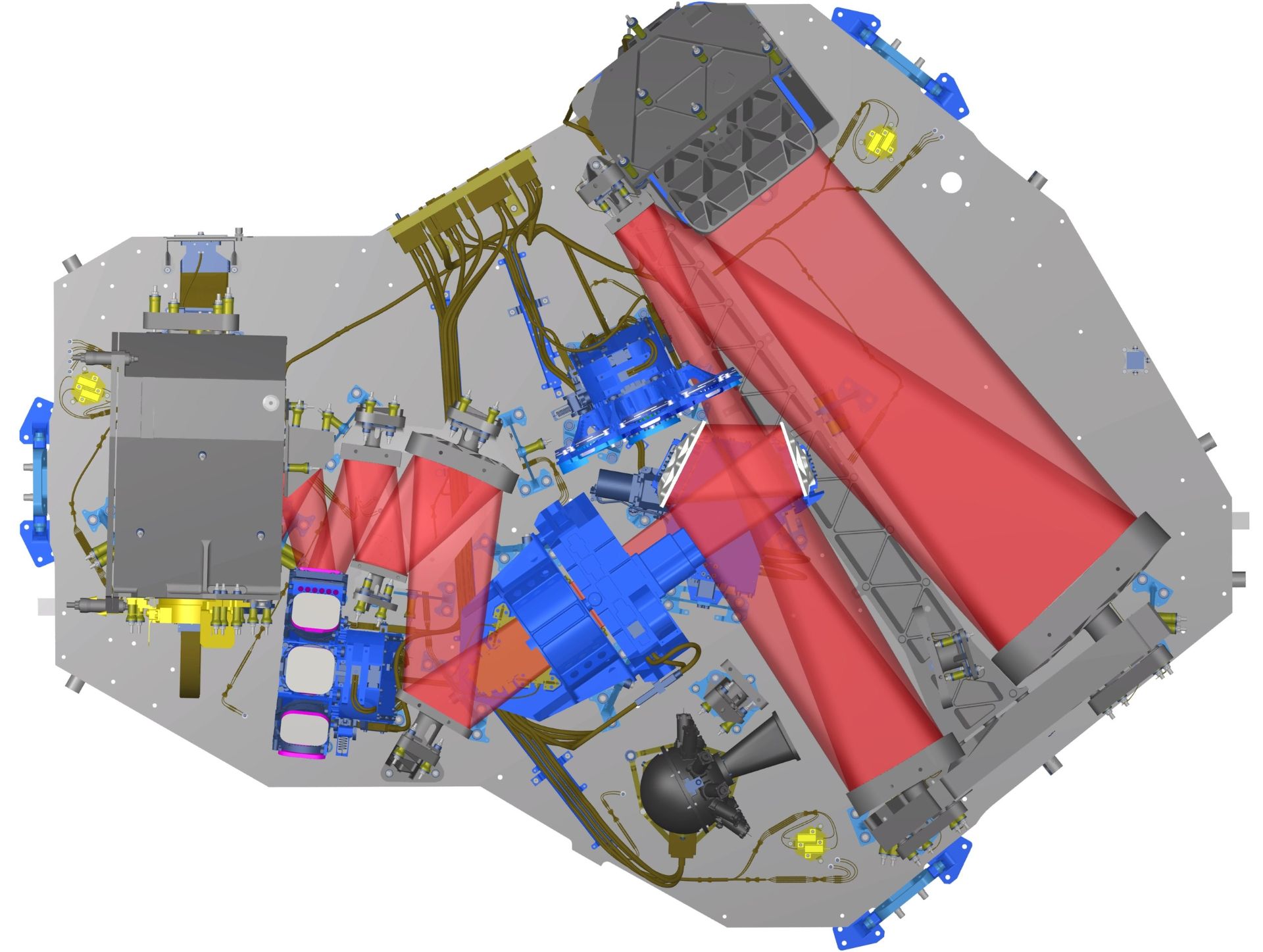
Scientists intend to observe the first light of the universe and the period of reionization with the help of Niraspec. Investigating the formation of galaxies and the birth of stars and non-planetary systems is also one of the goals of this piece. Scientists want to use telescopes to examine planetary systems to find signs of the origin of life.
Optical equipment is all made of silicon carbide
The NIRSpec spectrometer only operates at -235°C, and the task of keeping this temperature balanced is the responsibility of the telescope coolers mounted on the ISIM module. The base of the mirrors in this part, as well as the optical equipment screen, is made of silicon carbide ceramic SIC100, which was used for the first time in the Ariyan space project. The brake disc of the McLaren P1 car is also made of the same ceramic, which has never been used in cars before. Niraspec spectrometer has a length of 1900 mm, a width of 1400 mm, and a height of 700 mm; The weight of this collection is 196 kg, of which 100 kg is only silicon carbide. Four electronic boxes are responsible for controlling this spectrometer.
Niraspec spectrometer has four main mechanisms, which are:
- Spectrum filter wheel
- Refocusing mechanism on the subject (RMA) which has two mirrors
- Microshutter (MSA) equipment used for multiple mass spectrometry
- Diffraction grating wheel (GWA) which has 8 positions. Also, 6 diffraction gratings, a prism, and a mirror are also located in this part.
As mentioned, this spectrometer is responsible for observing the first light of the universe after the end of the dark period as well as the reionization period. Near-infrared spectrometry (NIRS) investigates the earliest light sources in the universe (such as stars, galaxies, and active nebulae) at a spectral resolution between 100 and 1000. These lights indicate the beginning of the reionization period of the world. With the help of a multi-mass spectrometer (objects with a redshift between 1 and 7) at a spectral resolution of 1000, observations of a large number of galaxies are made in order to provide scientists with more information about smaller objects in the early universe.
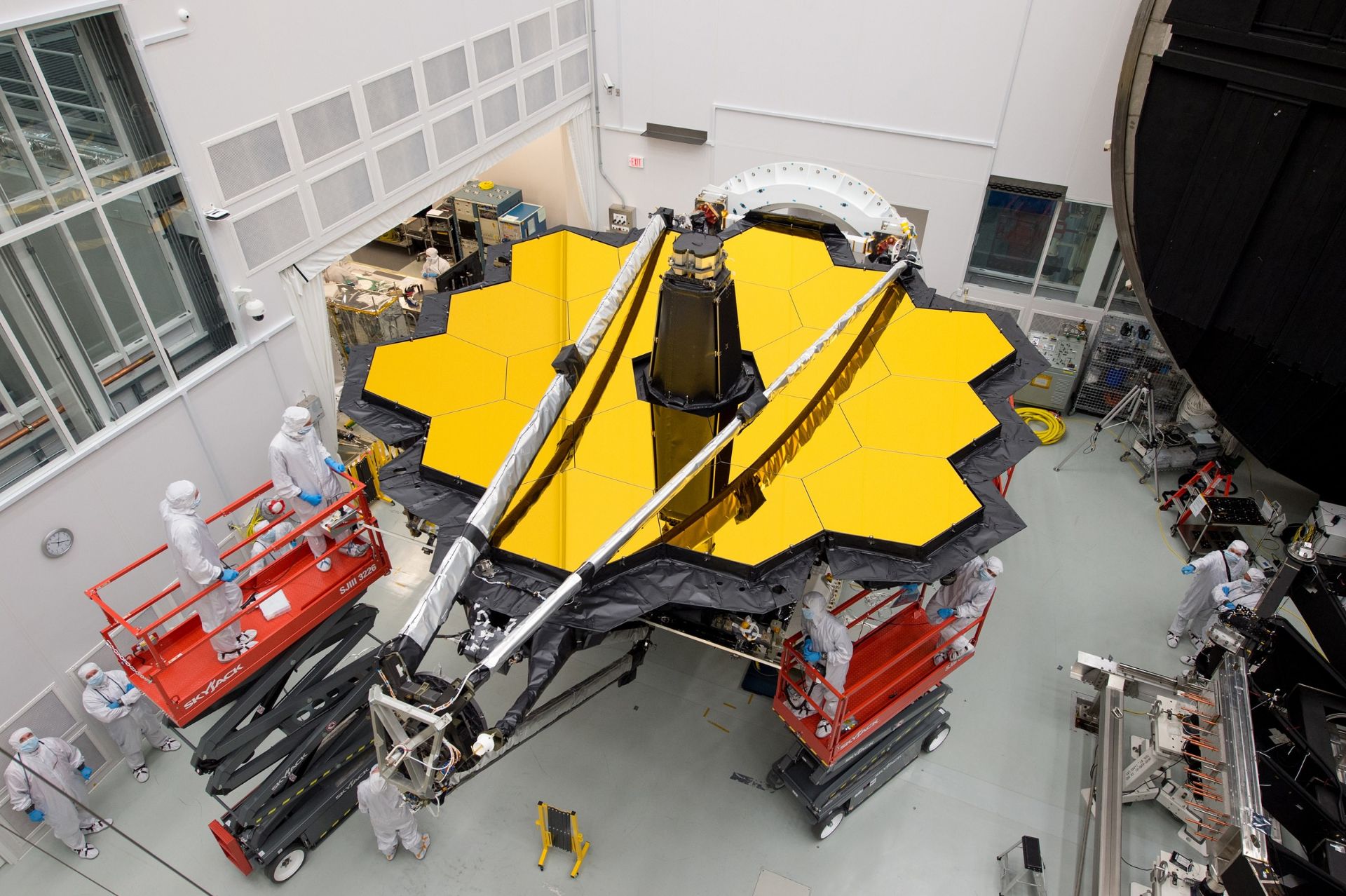
One of Niraspec’s spectrographs takes high-contrast images and can observe objects with a spectral resolution of 100 to several thousand in order to provide scientists with a complete and accurate picture of the formation and evolution of stars and star systems. Another task of this spectrographer is to examine the objects of the solar system in high contrast and medium spectral resolution. Planets, moons, comets, and objects in the Kuiper Asteroid Belt are examined by this spectrograph so that scientists can learn more about the origins of life.
Middle Infrared Instrument (MIRI)
Miri is an advanced spectrometer built by the European Space Agency and NASA’s Jet Propulsion Laboratory. Miri actually consists of a camera and a spectrometer that observes mid-infrared between 5 microns and 28 microns. Miri also has a chronograph, which is specially used for observing exoplanets. Most of the James Webb telescope’s instruments observe the near-infrared spectrum or some wavelengths of visible light; But Miri, through other equipment, can observe longer wavelengths of light. The instrument uses arsenic-doped silicon arrays to observe at long wavelengths. Miri’s imager is designed to have a wide field of view, But Miri’s spectrometer is not like this and has a limited field of view.
As you go, you see longer wavelengths; So it needs to be cooler than other equipment. For this purpose, engineers have considered a special cooling system for this part, which includes a pre-cooling pulse tube and a Joule-Thomson ring as a heat exchanger. This equipment causes the temperature of Miri to drop to 7 degrees Kelvin or -266 degrees Celsius when working in space.
In fact, the spectrograph installed in Miri can observe wavelengths between 4.6 and 28.6 microns and has four separate channels, each with its own diffraction grating and image-cropping tool. The field of view of this spectrograph is 3.5 arc seconds by 3.5 arc seconds. In early 2014, sensors were installed on the ISIM module and their integrity was tested. Miri is mounted by a plastic hexapod structure and carbon fiber mounts on the ISIM and next to the satellite bus; But it is isolated so that it has a certain and constant temperature and is not affected by the temperature of the surrounding environment and the bass, which heats up a lot.
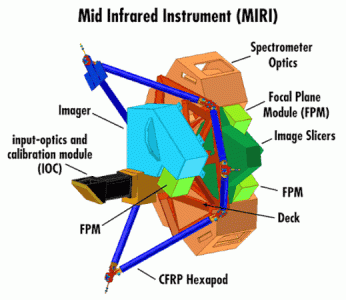

The main parts of Miri are:
- spectroscopic optical equipment (including main spectrographs and prerequisites)
- Arrays of focal planes
- Input light calibration module (including mirrors, imager calibration source and pollution control cover)
- Plastic hexapod and carbon fiber legs
- The main cameraman
- Image cropping tools
- The main page where the equipment is located
Most of Miri’s parts are placed in the main structure of ISIM; But the cooler is located in zone 3, which is near the satellite bass. Miri’s main imager has a special low-resolution spectrograph that can perform cut-free spectroscopy between wavelengths of 5 to 12 microns. The prisms of this spectrometer are made of germanium metal and zinc sulfide to cause more light scattering.
Dysfunction detectors can detect the redshift of distant galaxies, newborn stars, faint comets, and objects in the Kuiper Belt. The spectrometer can also image with medium resolution, which provides scientists with new information about distant objects; Information that Hubble is unable to collect.
Precision guidance sensor near-infrared imager and slitless spectrometer (FGS/NIRISS)
FGS/Nyris is another scientific instrument installed on the Canadian Space Agency’s ISIM module. These instruments are actually a combination of a full-conductivity sensor and a near-infrared imager and spectrometer. FGS/Nyris can observe wavelengths between 0.8 and 5 microns. These instruments can perform observations in four different modes. Physically, the FGS and Neris are combined and housed in one enclosure; But the reality is that they do two completely different things. Neris uses the FGS to keep the telescope fixed on the subject and make the observations, which is why it’s called the FGS (Precise Guided Sensor). The near-infrared spectrometer has a special spectroscopic mode that is used only for observing exoplanets. The Neris detector has a mercury-cadmium-telluride or HgCdTe detector array and has a resolution of 2048 x 2048 pixels and a field of view of 2.2 arc minutes by 2.2 arc minutes. The precision guidance sensor helps to keep the telescope fixed on the desired subject; The FGS also sends the necessary data to the position control unit so that the telescope can more easily focus on subjects or rotate around.
In general, Neris is designed to do the following:
- Near infrared imaging
- Wide-field slit-free spectroscopy
- Slitless spectroscopy of a particular object
- Aperture coating interferometry
The aperture cover interferometry mode uses a seven-hole aperture cover plate and can help identify exoplanets orbiting known stars that are in the main light spectra. The FGS unit is designed to focus the telescope on predetermined stars, which makes the targets always worth studying. The action of changing the direction of the telescope is done by other parts, such as the systems in the satellite bus and the telescope mirrors.
Satellite bass
The satellite bass was the last piece to be installed on the telescope. As mentioned earlier, a part of area 3 of the ISIM module is also placed inside the satellite bus. The James Webb telescope satellite bus includes computers, power systems, propulsion, etc., which are needed to control the telescope in space. The structure of the satellite base of this telescope weighs 350 kg and can support the weight of 6.5 tons of the telescope. The structure of the satellite bass is made of graphite composite, which was assembled in 2015 in the state of California. Satellite bass can reduce pointing accuracy to 1 arc second and jitter down to 2 milliarcsecond.
The central computer and solid-state memory are located in the satellite bus
The satellite bass are located in the hotter part of the telescope that faces the sun and operates at a temperature of 27 degrees Celsius. Any equipment placed on the hotter side of the telescope must be able to withstand the constant sunlight as well as the halo of heat produced by the telescope’s solar shield. One of the main parts of the telescope satellite bus is the central computing unit, memory, and communication equipment. The telescope’s processor and software can send data directly to the equipment, receive it, and send it to the solid-state memory unit. Communication and radio systems can then send or receive data back to Earth. The central computer is also responsible for controlling the real-time positioning of the telescope, receiving data from the gyroscopes and sending the necessary information to the motors and wheels.

The fully assembled James Webb Space Telescope at the Northrop Grumman facility.
The satellite bass along with a series of other important equipment is placed inside a carbon fiber box. Before launch, solar panels are also placed in this box to open in space. The MIRI cooler and some ISIM electronics are also inside this box. As mentioned, in the computer processing part, there is a solid-state memory. The capacity of this memory is 59.9 GB, which is known as SSR. A small satellite dish is also placed under the bass, which is responsible for sending and receiving information. The telescope is designed to be able to communicate with NASA’s deep space communication network. The telescope’s main communications center is located in Maryland, USA.
The mirrors of the James Webb Space Telescope
The first thing you need to know is that telescope mirrors are bigger than they look. 18 hexagonal mirrors are used to form the main mirror, each of which is 1.32 meters in diameter. These mirrors were assembled before launch to be placed inside the rocket. After launch and landing in space, they unfolded to form a single mirror. The pattern of placing these mirrors next to each other is inspired by the structure of the beehive. The main mirror of the telescope has a diameter of 6.5 meters, which is 7 times larger than the main mirror of the Hubble telescope. The James Webb telescope is supposed to be located at a distance of 1.5 million kilometers from the Earth and orbit around the Sun.
Telescope mirrors are made of beryllium and have a thin coating of gold
James Webb telescope mirrors are very special. They are golden, and you may think to yourself that they are made entirely of gold; But you are completely wrong! Gold, along with silver and copper, are among the most conductive materials that increase the temperature of the telescope; Therefore, these 18 mirrors should be made of a material that has the least temperature change in them. These mirrors are not made entirely of gold; Rather, it is beryllium that constitutes a high percentage of the material of these mirrors. Each mirror was a beryllium ingot (beryllium ingots are produced in the form of a cylinder) that was cut into hexagonal shapes by special equipment. Each beryllium ingot weighs 250 kg; But after cutting and changing the shape, this weight was reduced to 21 kg. Overall, the James Webb telescope is 45 percent lighter.
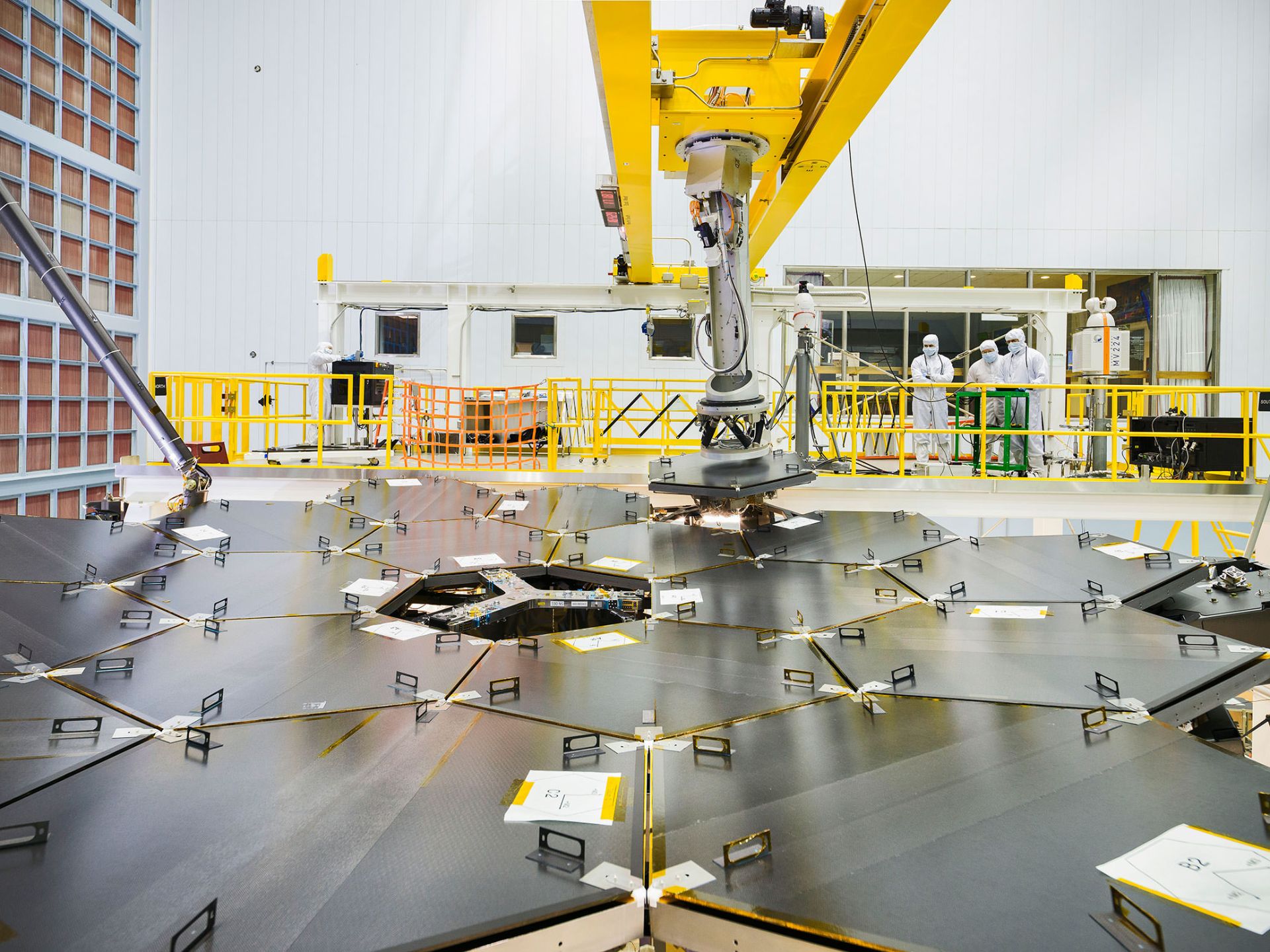
Installation of 18 parts of the main mirror of the James Webb Space Telescope.
In the first stage, the mirrors had to be polished well through different levels and stages; Because the earth’s gravity causes them to bend and they have different performances at different temperatures. First, a polishing step had to be done, and then the mirrors were sent to the freezer room, stayed there for a while, came out again, and the polishing process was repeated. The surface of the mirrors should remain shiny when exposed to low temperatures in order to have maximum efficiency; Therefore, the mirrors should be polished many times and at different temperatures to achieve an acceptable gloss and to be able to maintain their original state at low temperatures. When the beryllium was completely polished and polished, then the gold coating was added.
The reason for using gold is its high percentage of reflectivity and it can have the maximum reflectivity when the telescope is in infrared light. This gold coating must be thick enough to cover the entire surface of the mirror; But at the same time, it should be thin enough not to damage the original beryllium mirrors. The process of placing the gold coating on the mirrors is known as ” vacuum heater coating “. During this process, the mirrors were placed in a vacuum chamber and then all the air in the chamber was evacuated to create a vacuum. Then, a very small amount of gold was vaporized under certain conditions and injected into the chamber. The back layers of the mirror, which are not going to be covered with gold, are protected by layers so they don’t get damaged. After injecting evaporated gold into the chamber, the gold atoms slowly settled on the shiny surfaces of the beryllium mirrors and this process continued until the thickness of the gold coating layer reached 100 nm.
Gold is very soft and flexible, and a very thin coating of it acts like transparent glass to protect the very delicate beryllium surface and provide a highly reflective surface.

A NASA technician works on the mirrors of the James Webb Telescope at the Marshall Space Flight Center.
The launch of the James Webb Space Telescope
As mentioned in the beginning, the launch of the telescope was postponed many times and the final date was finally set for December 25, 2021. As a very sensitive telescope, James Webb had to be launched by a reliable rocket. The European Space Agency announced that it will finance the launch of James Webb and launch it into space on an Ariane 5 rocket. Ariane 5 is one of the most successful and reliable rockets in the world today, and various companies use it to transport their space cargo to Earth orbit. NASA also agreed to launch its new space telescope using this rocket from the French Guiana space base.
Ariane 5, with 108 successful launches out of 113 launches, was considered a suitable and safe option for launching James Webb. The ELA-3 telescope launch pad is located in French Guiana (located in South America) and takes advantage of its proximity to the equator. Near the equator, the rotation of the Earth can create more propulsive force and launch the rocket faster and easier. The rotation speed of the earth at the equator is 1670 km/h. In order for the telescope to fit in the upper part of the rocket, it must be folded. In the picture below, you can see how the telescope is placed in the upper part of the rocket.
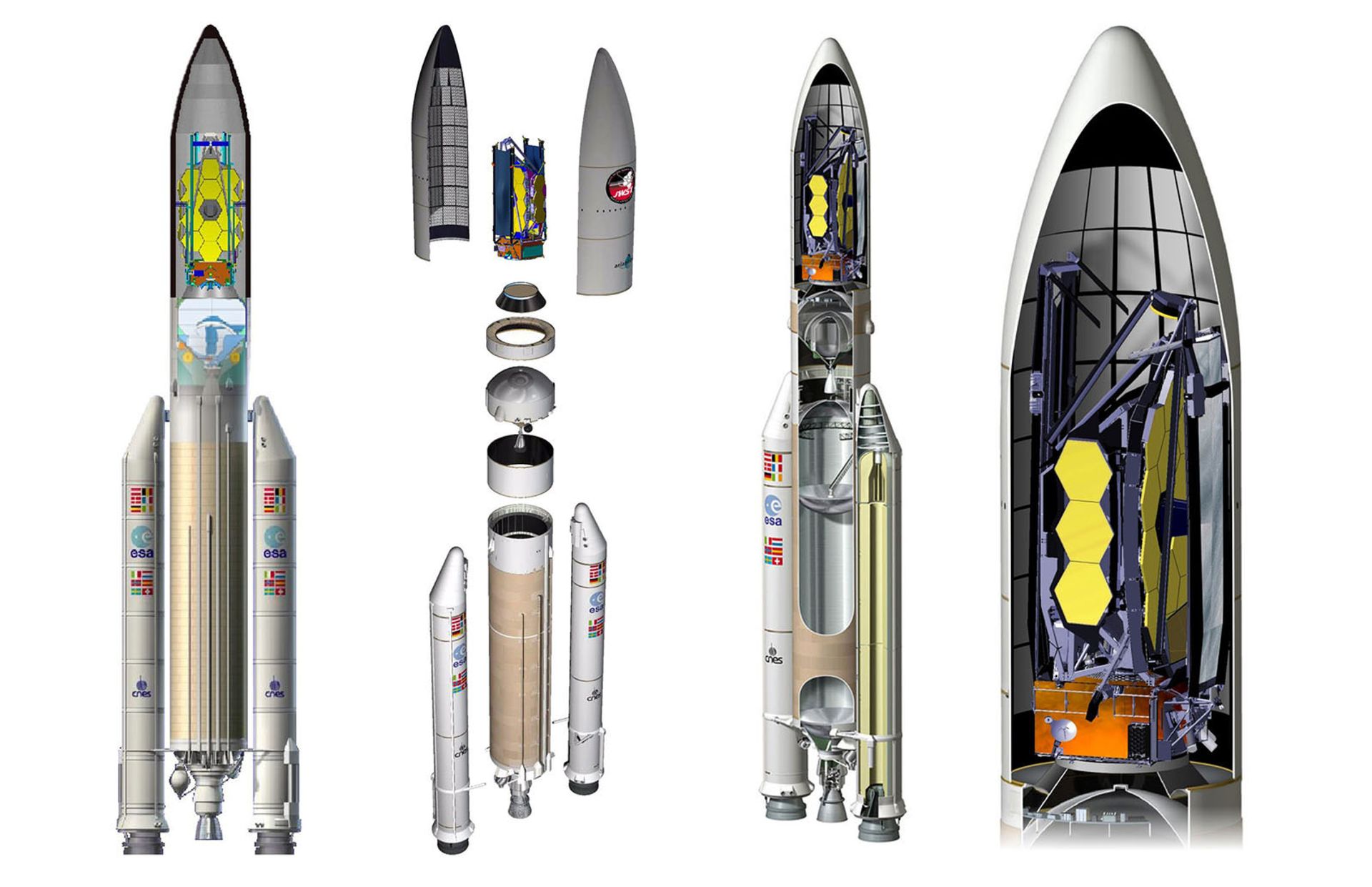
After launching and leaving Earth, the telescope began a 30-day journey to reach a distance of 1.5 million kilometers from Earth. This point is known as Lagrangian point 2. Lagrangian points are five points between two masses where the gravitational force between the two masses is neutralized. The Earth and the Sun also have 5 Lagrangian points that place satellites and space telescopes at these points. Lagrangian point 2 has an interesting feature. If any mass is located at this point, it will be in line with the earth and it will go around the sun together with the Earth. James Webb’s placement at this point makes the solar shield able to repel the heat and light of the sun, earth, and moon at the same time.
The James Webb telescope orbits the Sun at Lagrangian point 2 at the same time as the Earth
The gravity of the sun and the earth is neutralized at the Lagrangian point 2; Therefore, even if the telescope has a small propulsion force, it can always maintain itself at this point and go around the sun together with the earth. The interesting thing is that the James Webb telescope will travel around the Lagrangian point 2 in a specific orbit and will not stay still. James Webb’s orbit around Lagrangian 2 is the same as the moon’s orbit around the Earth! Traveling in this orbit makes the telescope constantly away from the shadow of the Earth and the Moon.
From the point of view of communication, being at the L2 point has advantages. Since the telescope revolves around the sun at the same time as the earth; Communication with it will be simple and it will never leave the radar point. There are three terrestrial antennas in Australia, California and Spain that communicate with James Webb. The Hubble telescope is not like that and every 90 minutes, it is placed in the shadow of the earth and it is not possible to communicate with it permanently; But the James Webb telescope is always available. The timeline of post-launch events is as follows.
The first hour
At this moment, the launch operation was carried out and the Ariane 5 rocket was able to insert the telescope into orbit 8 minutes later. After liftoff, the remaining rocket systems were disconnected from the telescope, and 33 minutes after launch, the solar panels slowly opened.
The first day
Two hours after the flight, the telescope’s large antenna was opened to communicate with Earth. About 10 hours and 30 minutes after launch, the telescope passed the lunar orbit and traveled a quarter of its way to the Lagrangian point 2. 12.5 hours after launch, the small thrusters on the telescope were activated to perform a quick maneuver to put the telescope on track.
First week
2.5 days after launch, the thrusters were reactivated to perform another maneuver. Then on the third day, the solar shield pallets were among the first pieces of equipment to be opened and some other systems were activated and opened as well. On the fifth day, the sun shield covers were also opened.
The second week
On the 10th day, the sun shield was fully opened, marking an important milestone in the telescope’s launch. Then, on the 11th day, it was the turn of James Webb’s secondary mirror to open, and finally, at the end of the second week after the launch, with the opening of the wings of the main mirror, the process of opening the telescope was successfully completed.
First month
On the 28th, with the completion of the multi-day deployment process of the mirror sections, each of these 18 sections along with the secondary mirror were removed from the launch time configuration. Then the next day, the Lagrangian 2 orbital injection maneuver was performed and James Webb successfully reached its final destination 1.5 million kilometers from Earth.
The second month
More than a month after launch, the Precision Guidance Sensor, or FGS, was activated, followed by NIRCAM and NIRSPEC. The first image that Nirkam captured was of very bright stars so that scientists could be sure that the light was properly passing through the telescope and reaching the instruments. Since the main mirrors were not yet aligned with each other, this image was out of focus and blurry. The sixth week after the launch, the process of aligning the main mirror began and they tested it by recording an image of a bright star.

The third month
During the third month, the telescope was aligned over the fields of view of all instruments, and then several days later, the near-infrared instruments, including NIRCAM, NIRSPEC, and FGS/NIRIS, were passively cooled to the minus 234-239°C temperature range.
The fourth, fifth, and sixth months
More than 120 days after the launch, the telescope mirror alignment process was successfully completed and the first high-quality image was recorded with NIRCAM. With the mirror alignment phase complete, James Webb’s team turned their attention to setting up the telescope’s science instruments.
After six months
On July 11, the commissioning of the various modes of operation of all instruments was completed and the telescope officially began its scientific activity. On July 12, during an event at the White House, NASA released James Webb’s first full-color image, the ” Deep Webb Field .” A few hours later, three more images were released to the public along with spectroscopic data of an exoplanet.
Objectives of the James Webb Space Telescope
As mentioned many times, James Webb is going to replace Hubble; So everything we’ve seen from Hubble so far, plus countless more, we should expect from James Webb. James Webb is a very powerful telescope that can observe the lights of the early universe and help us understand this important period. Scientists have already set goals for James Webb that take precedence over others. These targets include exoplanets, supermassive black holes, protogalaxies (old galaxies that gave birth to newer galaxies), quasars, watery terrestrial planets, the early universe and the reionization period of the universe, Jupiter and its important moons, comets, extragalactic planets. and Kuiper belt objects.
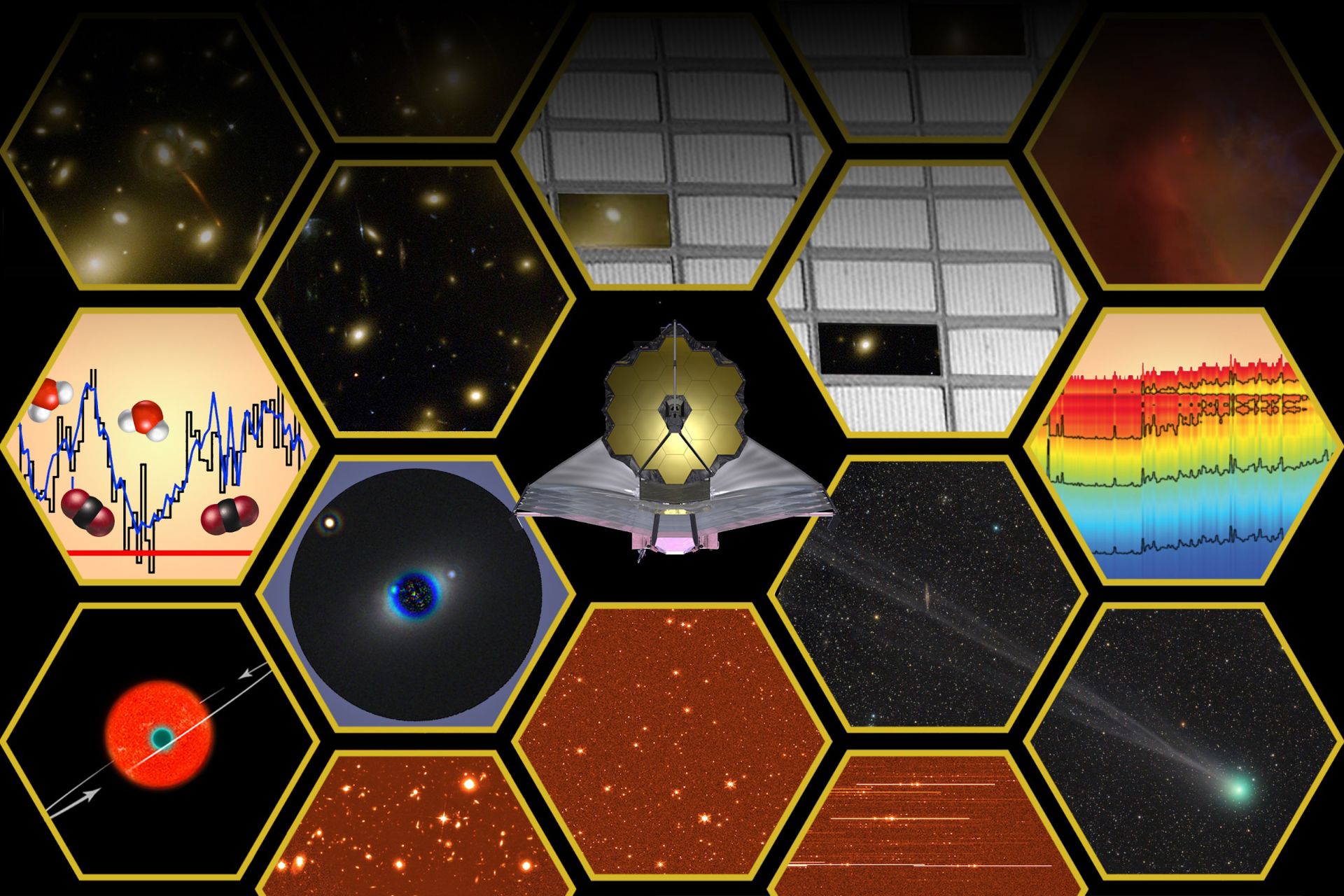
One of the targets that scientists have already begun to observe is the Trappist 1 system. This system has several Earth-like planets, and the James Webb telescope can clearly observe it and provide useful information to scientists. This system is particularly important; Even if none of its planets are habitable, scientists can gain valuable information from them that will help us find other planets.
Investigating the planets of the solar system is also on the agenda of scientists. By studying these planets, scientists can possibly obtain valuable information about the origin of life. James Webb also observes in infrared light; Therefore, we should expect it to discover new exoplanets and extragalactic planets. Due to the high power and the large size of the telescope’s main mirror, in the next few years we will see the release of unique images of galaxies and celestial bodies that we have not seen before.
James Webb Space Telescope photos
NASA has released a total of four full-color scientific images of James Webb to date (July 24, 1401). Additionally, some test images of the star HD84406 and the planet Jupiter have also been released. The objects photographed in the four mentioned images are the galaxy cluster SMACS 0732, Stephen’s quintet group of galaxies, the southern ring planetary nebula and the Carina nebula, which you can see below.
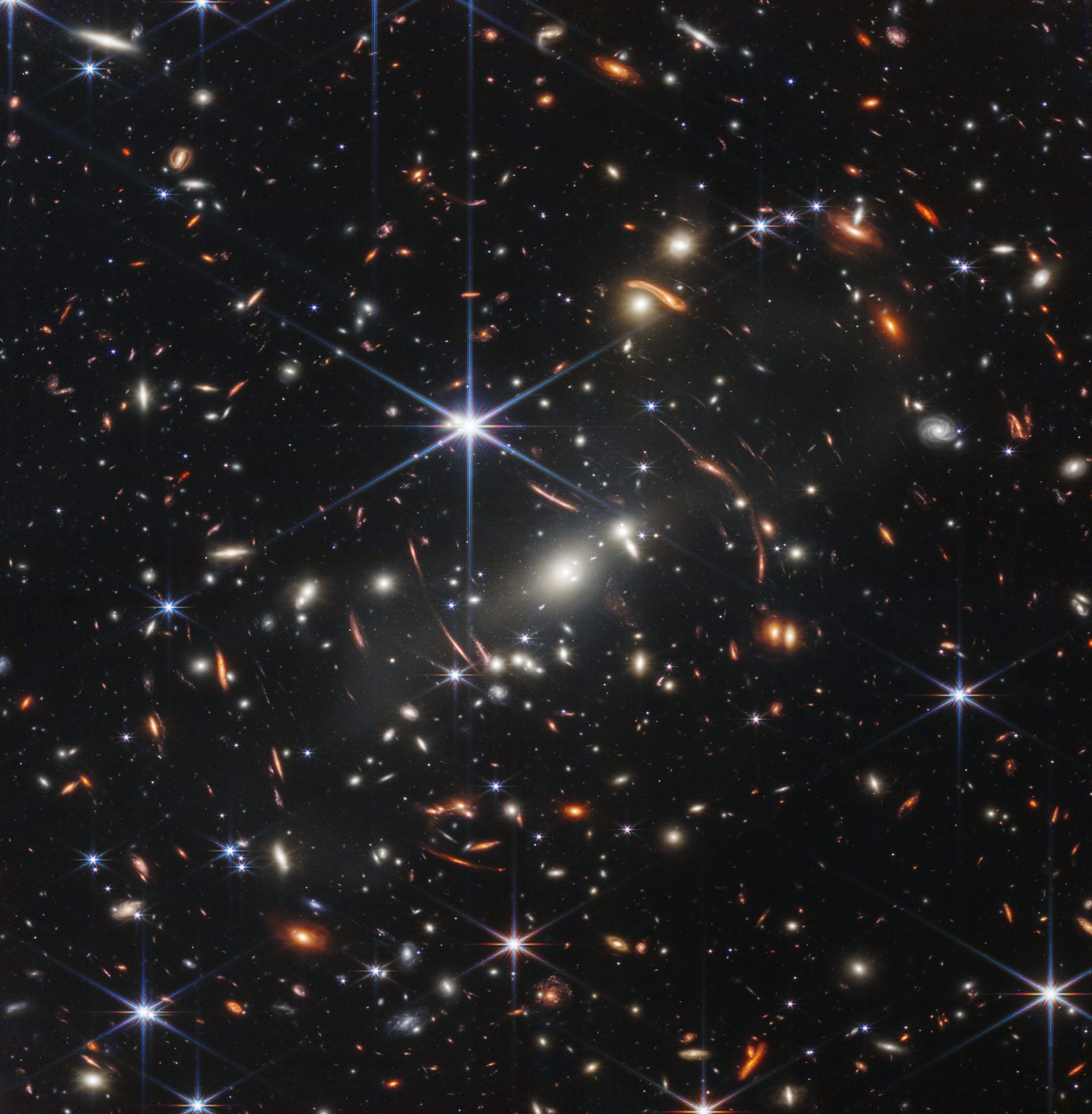

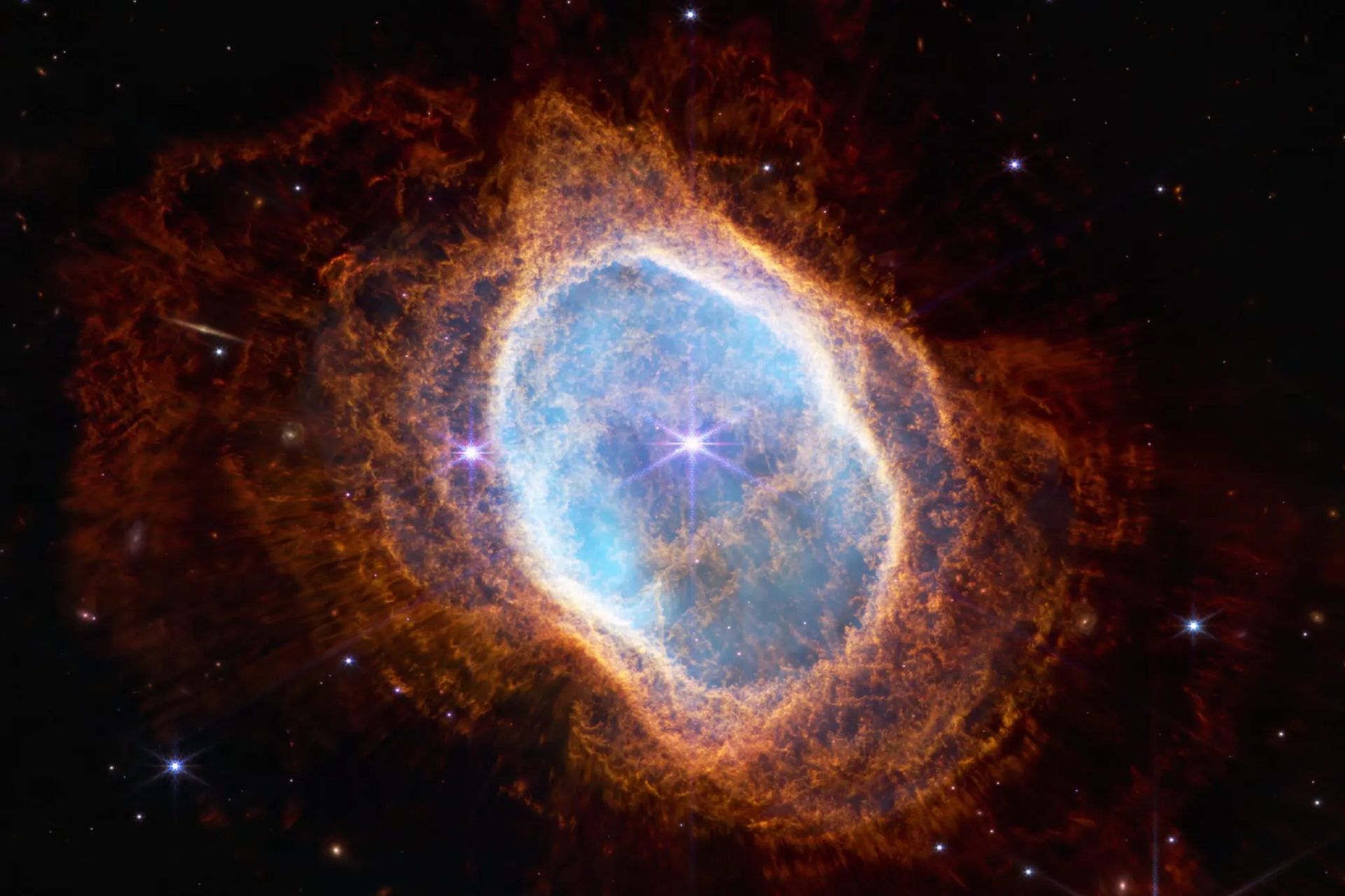

Summary
James Webb is considered the most powerful man-made space telescope. NASA, the European Space Agency, the Canadian Space Agency, and a number of American state universities have been involved in the development of this project and have made countless efforts to advance it and incurred many costs. This telescope has many firsts and uses the most advanced and sophisticated instruments. Nearly 10 billion dollars have been spent on this project, which is a huge amount. From the time of launch to the arrival at the destination, scientists and engineers spent very scary days; Because just one mistake was equal to the failure of the entire mission; But fortunately, thanks to years of testing and efforts, the telescope reached its destination safely and began the mission of observing the universe and uncovering its secrets.
In general, the James Webb space telescope can transform astronomy and cosmology and initiate a new era that will lead to an increase in our knowledge of the universe. By observing the galaxies of the early universe and the first lights, the telescope will tell us where the origin of our existence is and how the planets were formed during this time. James Webb can help us find extrasolar planets where life is possible and perhaps also determine the origin of life on Earth
Space
Hubble Space Telescope; A portal to the mysterious depths of the universe
Published
4 days agoon
02/09/2024

Hubble Space Telescope; A portal to the mysterious depths of the universe
Planets are born in a pile of dust; The mysterious and unknown energy that causes the expansion of the universe; Comets are fragmented and asteroids are unbalanced; Galaxies collide to be reborn; A look into the depths of the most distant stars in the world.
From the collection of infinite engineering articles: International Space Station James Webb Space Telescope Space Shuttle; The first reusable spacecraft Dragon SpaceX capsule, the spacecraft of the 21st century
For more than 30 years, the Hubble Space Telescope has brought the wonders, beauties, and mysteries of the universe to earth and has transformed our understanding and knowledge of the world with images created from light. With more than 1.5 million observations of galaxies still high above Earth, far from any obstructions that might deflect the light, the Hubble Telescope is beaming home valuable data that answers some of our most important questions about the cosmos.
Hubble is very old, But it is still the most powerful tool that we humans have at our disposal to explore the farthest parts of the universe. Wherever cosmic bodies emit light, no observatory is better equipped to study them than Hubble. Join us on this space journey to learn about this amazing telescope.
-
What is the Hubble telescope?
-
Why is a space telescope needed?
-
Cosmic discoveries
-
Hubble time machine
-
History of the Hubble Telescope
-
Where is the Hubble telescope?
-
Hubble telescope images
-
1- Sombrero Galaxy
-
2- Cat’s Eye Nebula
-
3- Pillars of Creation
-
4- Hubble Deep Field
-
5- Tarantula Nebula
-
6- The passage of four moons of the planet Saturn
-
7- Crab Nebula
-
8- Whirlpool galaxy
-
9- Spirograph Nebula
-
10- The planet Mars is on the verge of confrontation
-
How does the Hubble telescope work?
-
Where do the colors of the Hubble images come from?
-
The zoom power of the Hubble telescope
-
The birthday of the Hubble telescope
-
The most important discoveries of the Hubble telescope
-
Recent discoveries of the Hubble telescope
-
The future of Hubble
-
Interesting facts about the Hubble telescope
-
mission
-
size
-
Space flight statistics
-
Optical capabilities
-
Hubble mirrors
-
Accuracy of targeting
-
Statistical data
-
Energy consumption
-
Energy storage
-
Anyone can register a request to use the Hubble telescope
What is the Hubble telescope?
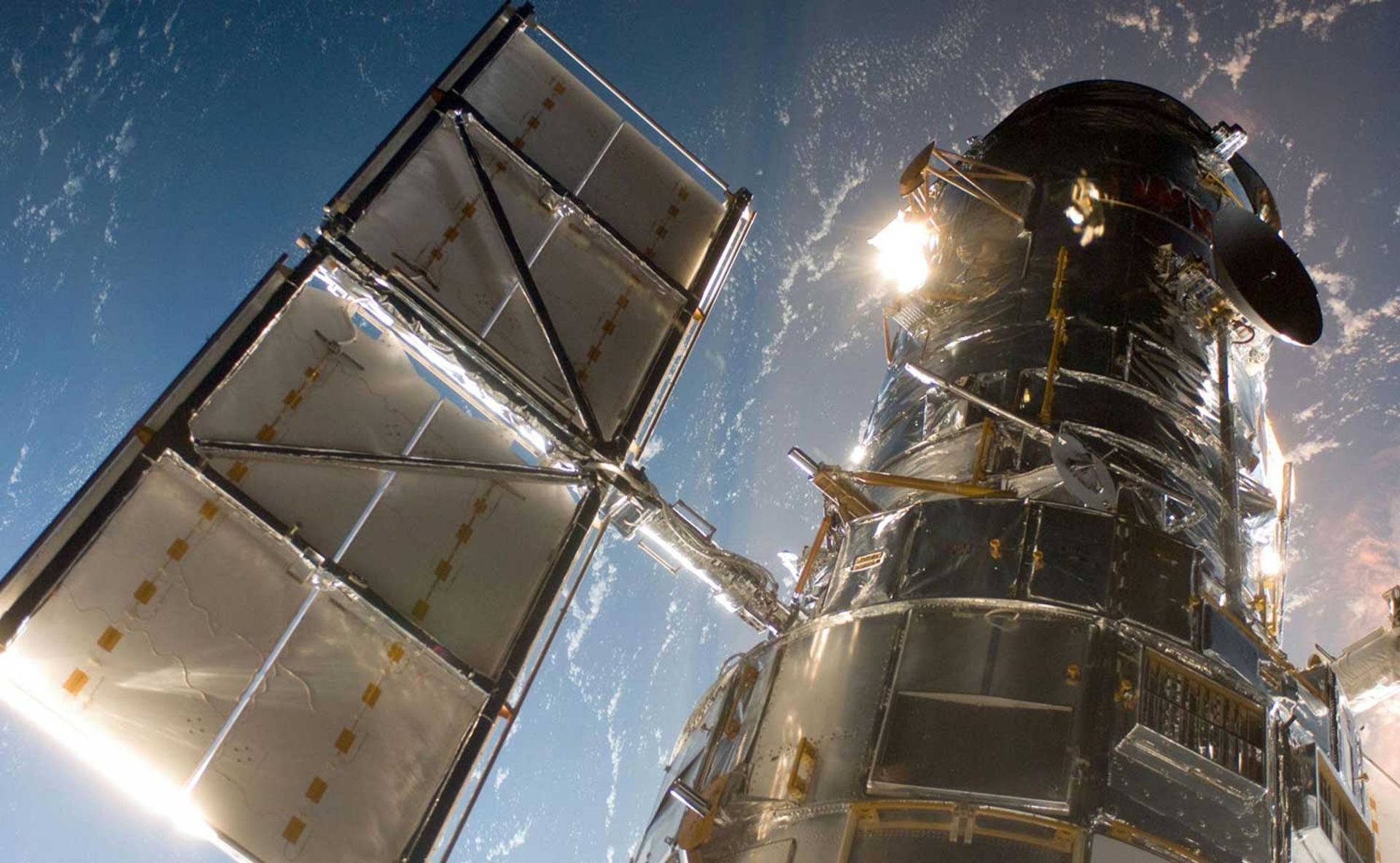
The Hubble Space Telescope (which is often referred to as HST) is an international collaboration project between NASA and the European Space Agency, which was launched into the near-Earth orbit by the space shuttle Discovery on April 24, 1990 (May 4, 1369) and after 31 Sal continues his mission. Hubble was not the first space telescope to successfully orbit, But it was bigger and better equipped than its fellows, and its amazing discoveries completely changed the human vision of the universe.
Hubble is orbiting about 547 km above the Earth’s surface. Its length is 13.2 meters, which is the size of a big bus, and its weight is 12,200 kilograms, which is the size of two adult elephants. Hubble uses solar energy and moves at about 8 kilometers per second to stay in orbit.
The Hubble telescope takes very high-resolution images of celestial bodies such as planets, stars, and galaxies, and has recorded more than 1.5 million galaxy observations. These observations include detailed images of the birth and death of stars, galaxies billions of light-years away, and remnants of comets that hit planets’ atmospheres.
Hubble was developed as a general-purpose space observatory with the aim of exploring the universe and recording images in visible, ultraviolet, and infrared wavelengths. So far, this telescope has studied more than 40,000 cosmic objects and has provided high-resolution and detailed images to astronomers who could not see them from Earth.
In addition to blocking some wavelengths of light completely, the Earth’s atmosphere contains air currents that are constantly moving and cause the stars to twinkle in the night sky. The constant movement of these air currents blurs the images taken by ground-based telescopes; For this reason, it was necessary to place a telescope in an orbit above the atmosphere to record images free of these effects.
Hubble’s mirror is much smaller than that found in the largest ground-based observatories, But the unique position of this telescope above the Earth’s atmosphere gives extraordinary clarity to the recorded images. As this telescope rotates around the earth, the mirror collects the cosmic lights and transmits them to the earth in the form of images and data. To photograph some of the most distant objects in the sky, the telescope stares at a point in the galaxy for days to capture as much of this very faint glow as possible.
Why is a space telescope needed?

Cosmic discoveries
Before the Hubble telescope was launched into space, the age of the universe was estimated to be about 10 to 20 billion years; But Hubble was able to reduce this big difference to about 13.8 billion years by examining a special group of stars that are used in determining the distance. This figure is now considered the approximate age of the universe and is used to understand the condition of stars, galaxies, and more.
Hubble has also discovered large black holes in the heart of galaxies and has shown the existence of dark matter around galaxy clusters, But perhaps one of Hubble’s strangest discoveries was that the expansion of the universe is accelerating due to the presence of previously unknown “dark energy”.
Hubble has also been used to investigate the climatic conditions in the planets of the solar system and the birth of planets in other systems. This satellite has investigated the composition of the atmosphere of these “supersolar” planets and managed to record one of the first images of such a planet with visible light. With its ability to capture pristine images of the universe, Hubble has repeatedly shown humanity that there are still many secrets about the universe. Because of Hubble, we have a better understanding of the solar system and how it works.
Hubble time machine
The vastness of space is so indescribable that even light at its exemplary speed takes considerable time to pass through cosmic bodies. For example, light from the moon takes about 1.3 light seconds to reach our eyes, so when we look at the moon in the sky, we see it as it was 1.3 seconds ago, 1.3 seconds in the past.
The light of the most distant cosmic objects started moving in space billions of years ago, and when it finally reaches the corner of our universe, it shows us the way it was billions of years ago. By recording the faint light that reaches it from the early universe, Hubble can see galaxies as they were billions of years ago and show us how galaxies have evolved over time.
We cannot see the evolution of galaxies or stars, because this evolution happens on a time scale of millions and billions; But by observing them in different stages of their existence, Hubble has been able to draw a picture of how galaxies change and evolve.
History of the Hubble Telescope
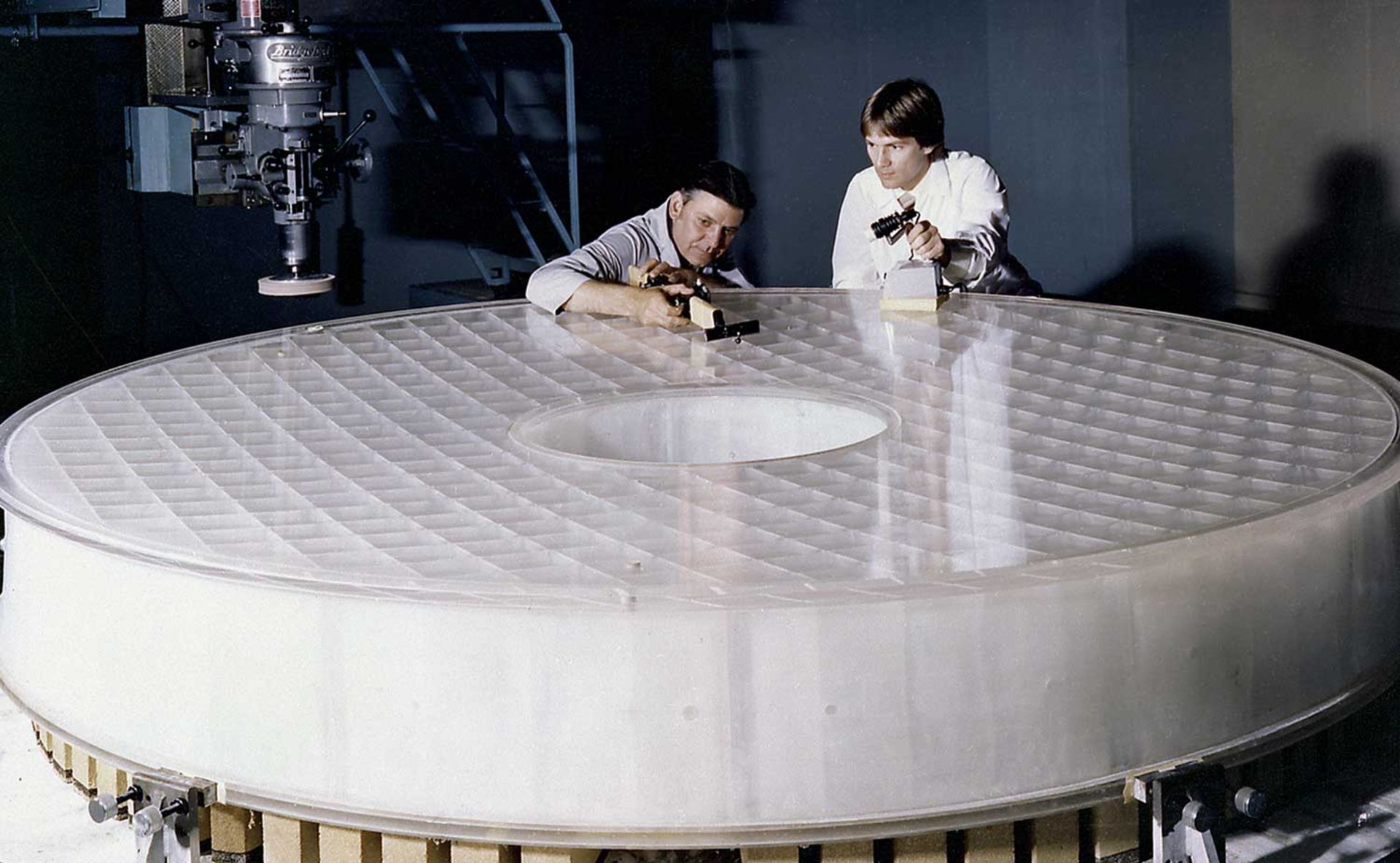
The Hubble Space Telescope takes its name from Edwin Hubble, a famous American astronomer, whose observations showed scientists that there are other galaxies in the universe besides the Milky Way. While working at the Mount Wilson Observatory in 1923, Hubble concluded that Andromeda then considered a nebula, was actually an independent galaxy hundreds of thousands of light-years away from the Milky Way.
Also, in 1929, by discovering that galaxies are moving away from each other at a constant speed, he put a stamp on the “static universe” theory and thus laid the foundation for the Big Bang theory. Edwin Hubble died in 1929, But the telescope that bears his name has since confirmed and modified many of his theories.
Of course, the idea of building a space telescope dates back to 1946; That is, more than 10 years before the establishment of NASA. It was in that year that astrophysicist Lyman Spitzer Jr. wrote an influential paper on the merits of a space-based observatory. In this paper, he argued that an orbiting telescope could observe the sky without encountering the Earth’s atmosphere, which blurs the images and records very high-resolution images.
Spitzer was later instrumental in building the four unmanned Orbiting Astronomical Observatory satellites that NASA launched between 1966 and 1972 and tirelessly petitioned the US government for funding to build a bigger and better space telescope. The huge costs of this project were a big obstacle to its realization, and it was only in 1977 that the American Congress finally agreed to allocate funds for the construction of the telescope, which was named Hubble.
The fledgling Hubble project suffered a major blow in 1986 when the space shuttle Challenger exploded during takeoff, killing seven astronauts. Following this tragic disaster, NASA grounded its space fleet and left Hubble, which needed a shuttle for transportation and repairs, without a vehicle. Of course, scientists made good use of this opportunity and improved the sensitivity of the telescope instruments and improved its ground control software; But these years of delay imposed huge costs on NASA to service and maintain Hubble in a clean and advanced room. When the space shuttle Discovery finally launched Hubble in 1990, the project was seven years behind schedule and over $1 billion over budget.
Unfortunately, this was not the end of Hubble’s problems. That same year, when NASA scientists viewed the first images recorded by Hubble, they discovered that its primary mirror had been polished to the wrong specification. This “spherical deviation” was very small; In fact, less than 1/50 of the width of a human hair; But this slight deviation was enough to blur many Hubble pictures.
Within months, the telescope had become something of a national joke, with one Newsweek magazine even calling it a “$1.5 billion mistake.” NASA had to wait until December 1993 to experience good things; That is when a group of scientists installed a contact lens called COSTAR on Hubble to fix this deviation. Consisting of several small mirrors, Quastar captured the beam emitted by the defective mirror, corrected the defect, and then reflected the corrected beam back to the center of the mirror for analysis.
Hubble’s “space glasses” managed to solve the problem of blurred images, and soon after this telescope began to record amazing images of the universe. Of course, today all the instruments installed in Hubble have internal corrective optics to compensate for mirror defects, and COSTAR is no longer needed.
Where is the Hubble telescope?
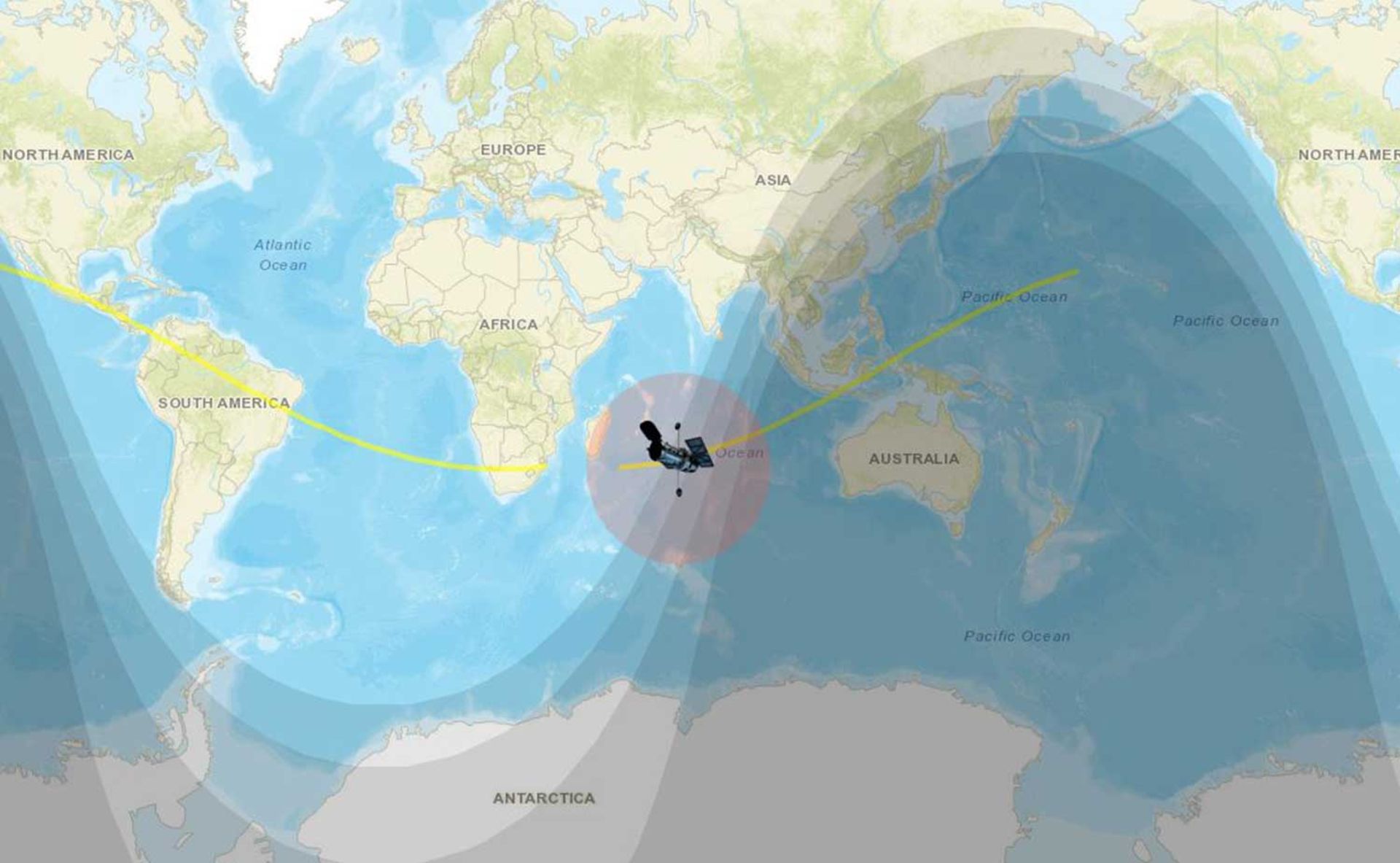
When the Hubble telescope was launched, it was at a height of 547 km from the earth’s surface; But most of the time it orbits the earth at an altitude of 320 km and sometimes it rises to an altitude of 400 km to visit the International Space Station.
Currently, Hubble’s nearly circular orbit is located at an altitude of 550 km from the Earth’s surface, and each revolution of this telescope takes about 96 minutes. In this way, Hubble goes around the earth 15 times a day; But not everyone can see it in the sky.
Hubble is best seen in regions on Earth between latitudes 28.5 degrees north and 28.5 degrees south. The reason is that Hubble is at an orbital deviation of 28.5 degrees from the equator. This orbital deviation is the same as the latitude of Hubble’s launch site, Cape Canaveral in Florida, and was the easiest and most economical orbit to launch the telescope.
It is not possible to watch the passage of the Hubble telescope from the sky in Iran; But if you want to see where the Hubble telescope is above the earth at this very moment, you can visit the website uphere.space, which provides a real-time image report of Hubble’s movement in orbit. It is also possible to watch the passage of other satellites on this website.
Hubble telescope images
Since the Hubble telescope was put into orbit (31 years ago), more than 1.5 million images have been recorded. Here we review 10 examples of the most amazing and iconic images recorded by Hubble:
1- Sombrero Galaxy

The Mexican cap galaxy is very photogenic. Known for its bright white core, this galaxy is located 28 million light-years from Earth in the constellation Virgo.
2- Cat’s Eye Nebula
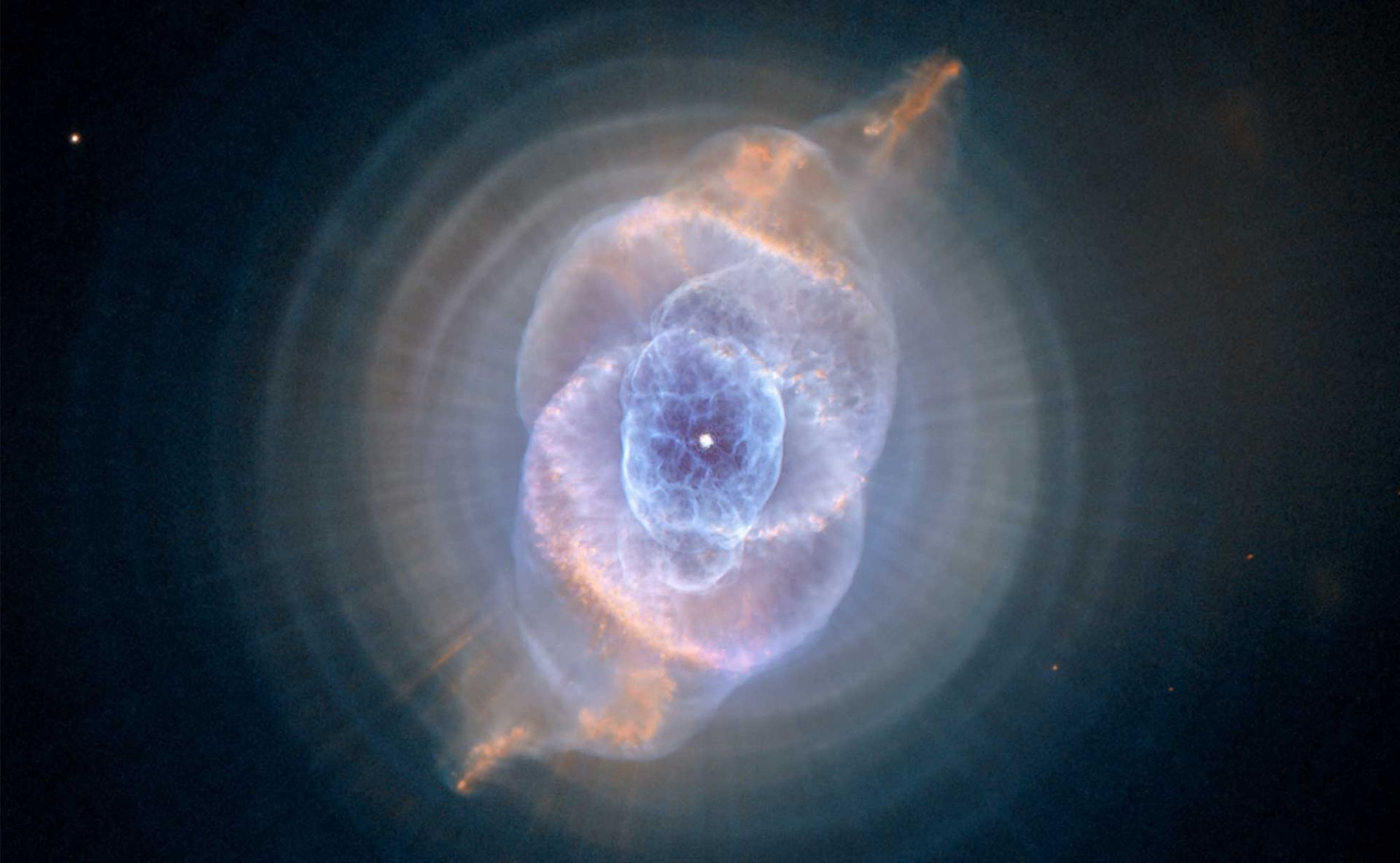
The Cat’s Eye Nebula is located at a distance of about 3,300 light-years in the constellation Dragon and is also called the Sunflower Nebula or the Snail Nebula. In the center of this nebula is a bright and hot star that lost its outer covering about a thousand years ago which led to the formation of this nebula. This nebula was discovered in 1786 by William Herschel, the discoverer of Uranus.
3- Pillars of Creation
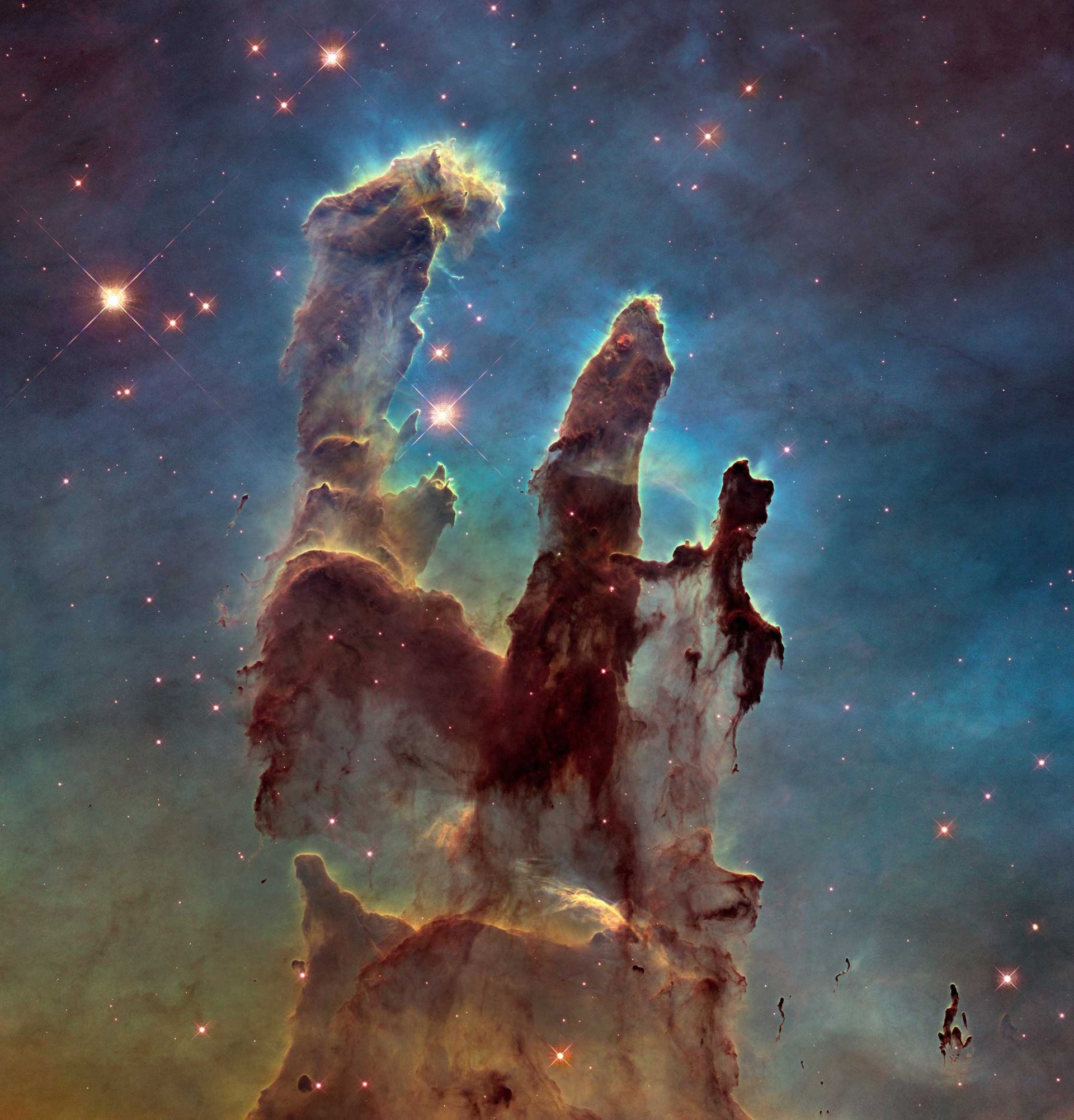
Undoubtedly, the most iconic image captured by Hubble to date is the “Pillars of Creation” taken in 1995. These giant towers consisting of interstellar gases and cosmic particles are located at a distance of 7,000 light years from Earth in the Eagle Nebula.
The reason for choosing the name of the pillars of creation is that a very powerful force of gravity causes these gases and particles to condense and turn them into masses of mass and form a new star system. In fact, the solar system was probably born billions of years ago in the same way. When we look at this picture, it is as if we are looking at the distant past of the earth.
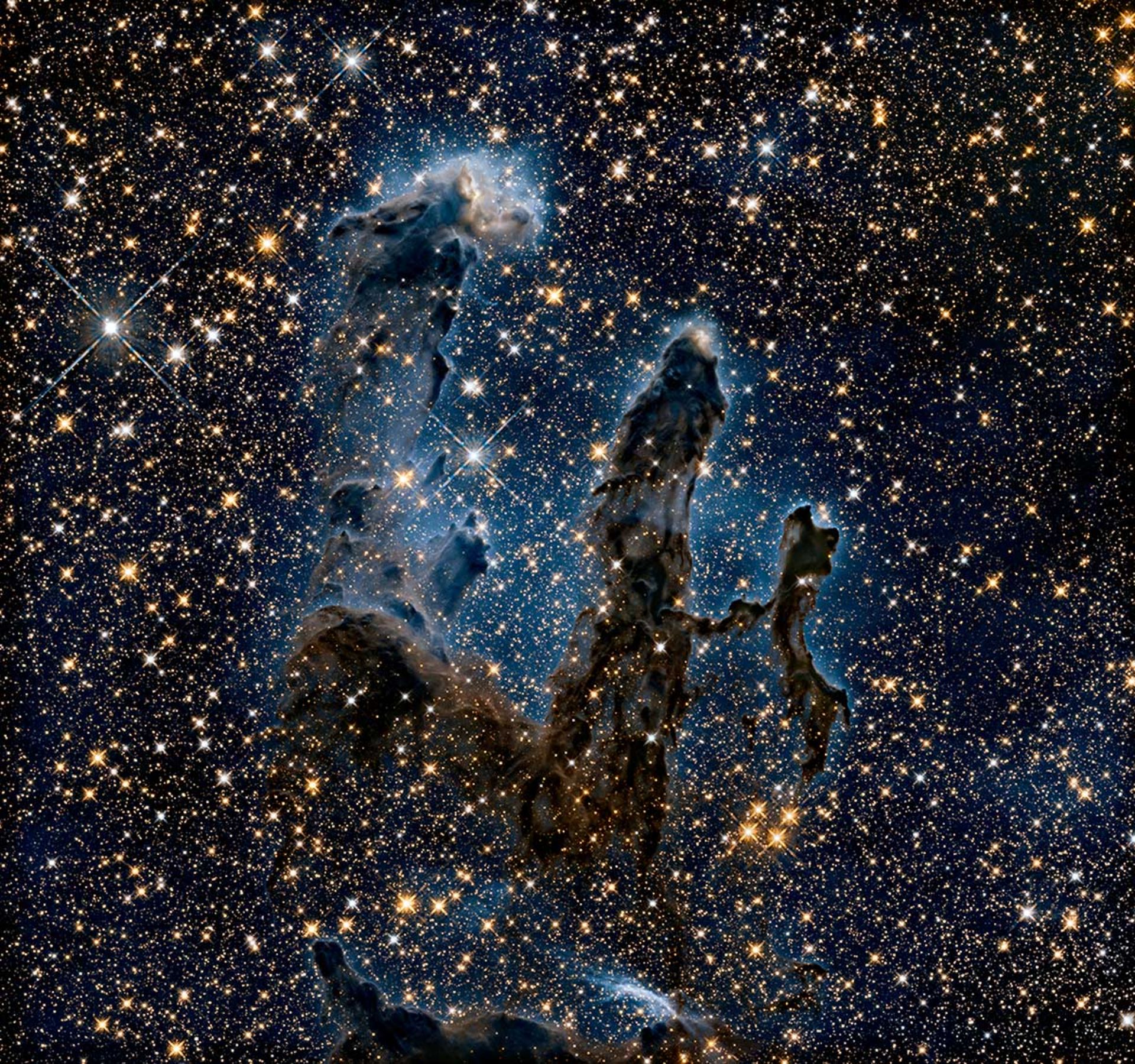
The image above is the same columns of creation recorded with infrared light and as a result, dust and gases can be seen inside. The website space.com has selected the Pillars of Creation as one of the top ten images taken by Hubble.
4- Hubble Deep Field
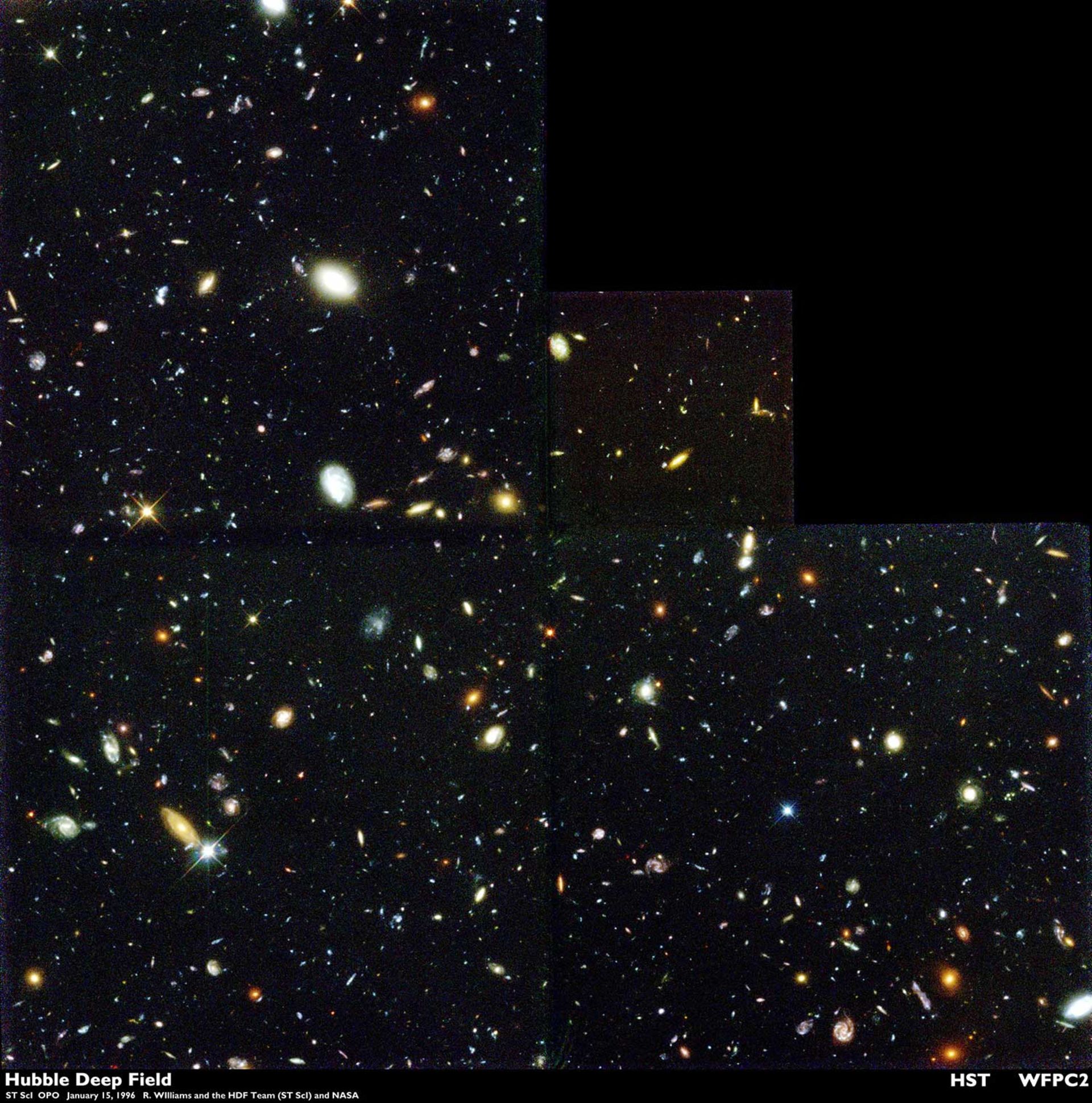
Hubble’s Deep Field is a stunning image of a section of the Ursa Major constellation that changed the science of astronomy forever. This image, taken in 1995, is as wide as a grain of salt; But it has 3 thousand galaxies in its heart. This image is composed of 342 separate pieces obtained by Hubble’s Deep Wide Astronomical Camera 2 during ten consecutive days.
5- Tarantula Nebula
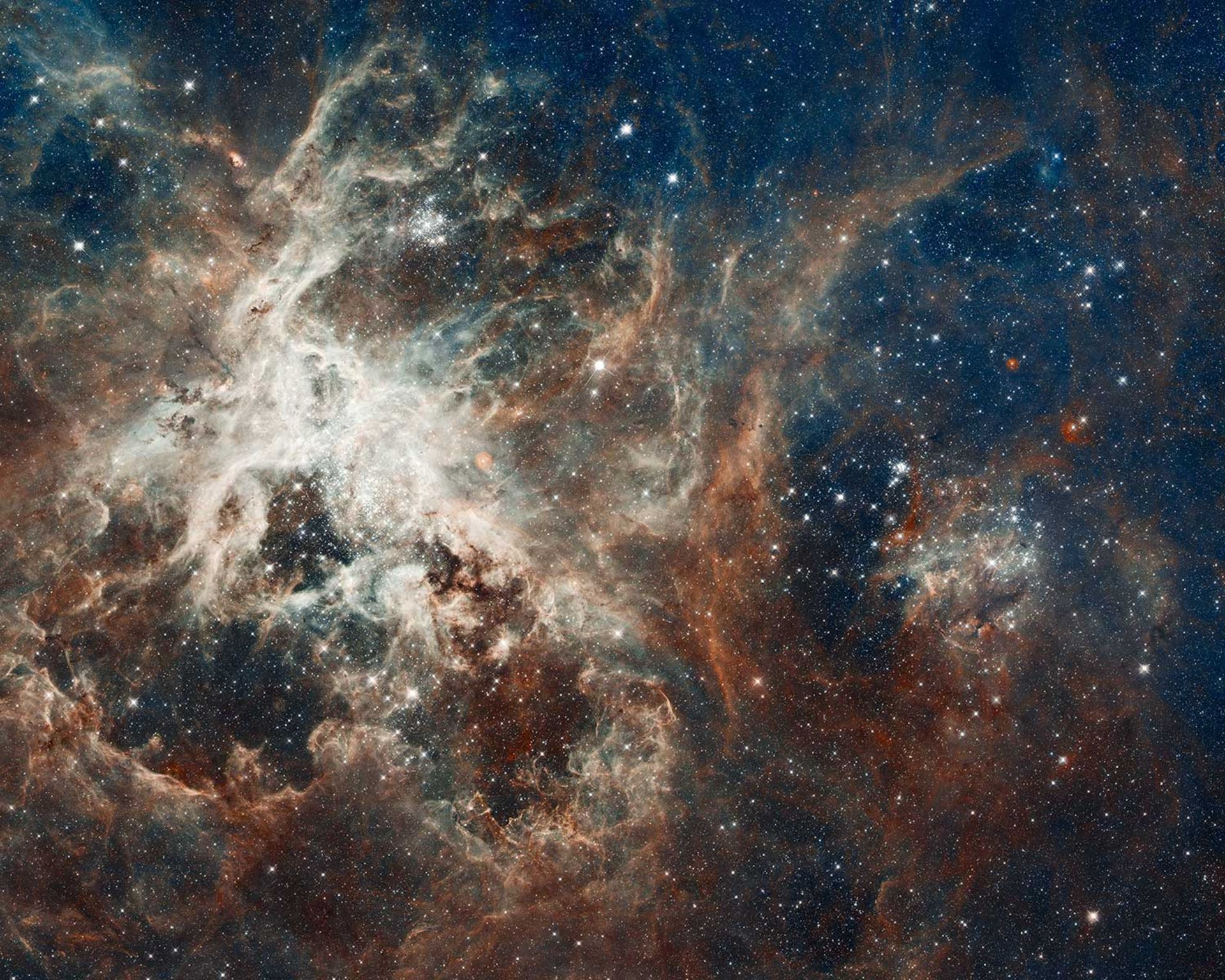
In this incredibly beautiful image, we are watching the birth of half a million young stars in the middle of a cloud of gas and cosmic particles in the Tarantula Nebula, which is located in the constellation of the Golden Fish at a distance of 160 thousand light years from us; But this nebula is not in the Milky Way galaxy but in the Large Magellanic Cloud galaxy.
The Tarantula Nebula is the brightest non-stellar object ever discovered, and if the Orion Nebula were in the Milky Way, its shadow would fall on Earth.
6- The passage of four moons of the planet Saturn
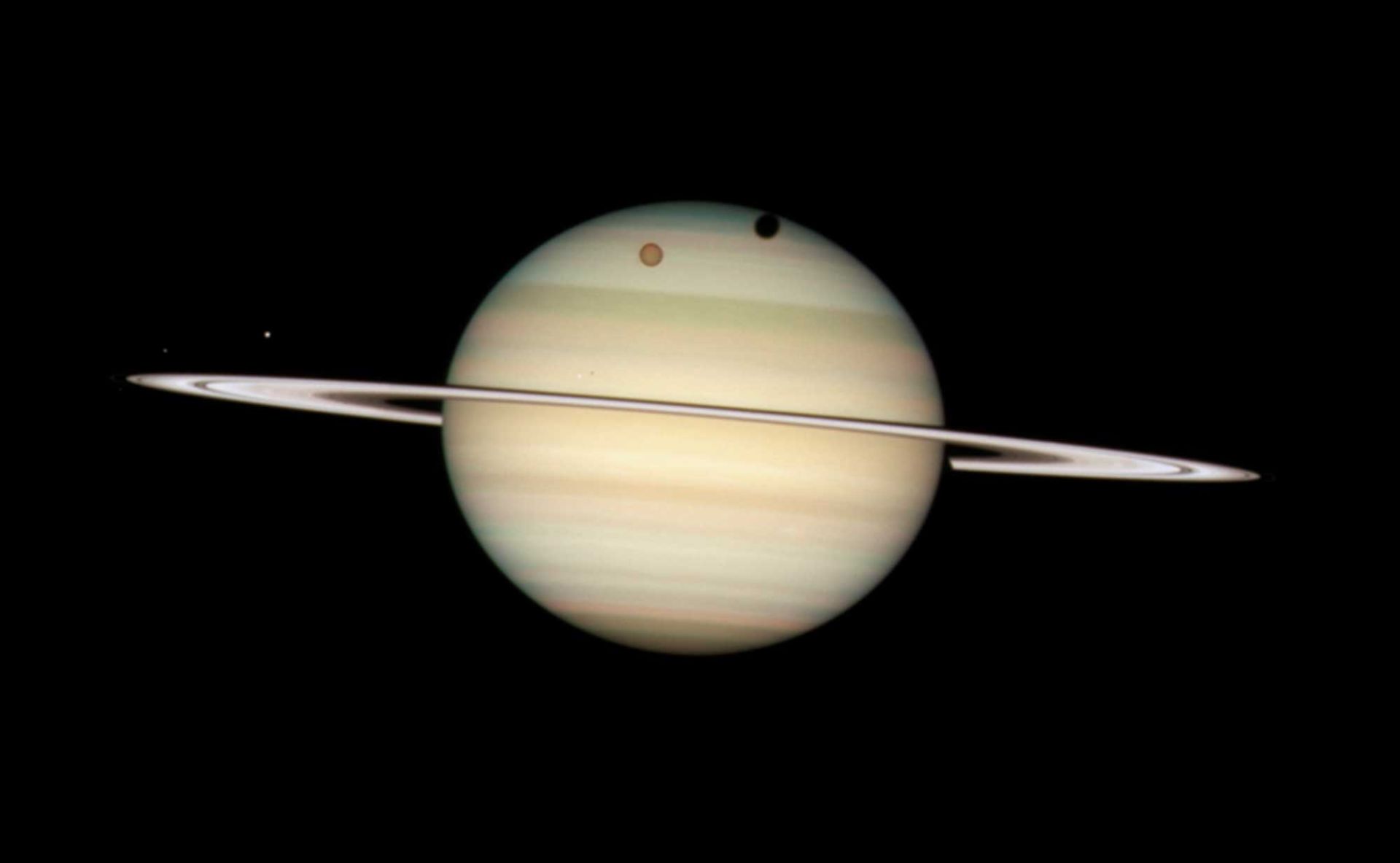
Saturn has 82 moons, But the passage of the moons over this planet can be seen only when the tilt of Saturn’s rings reaches the point where they look edged, and this event happens once every 14-15 years. This image was captured by Hubble’s Deep Wide Astronomical Camera 2 on February 24, 2009.
7- Crab Nebula
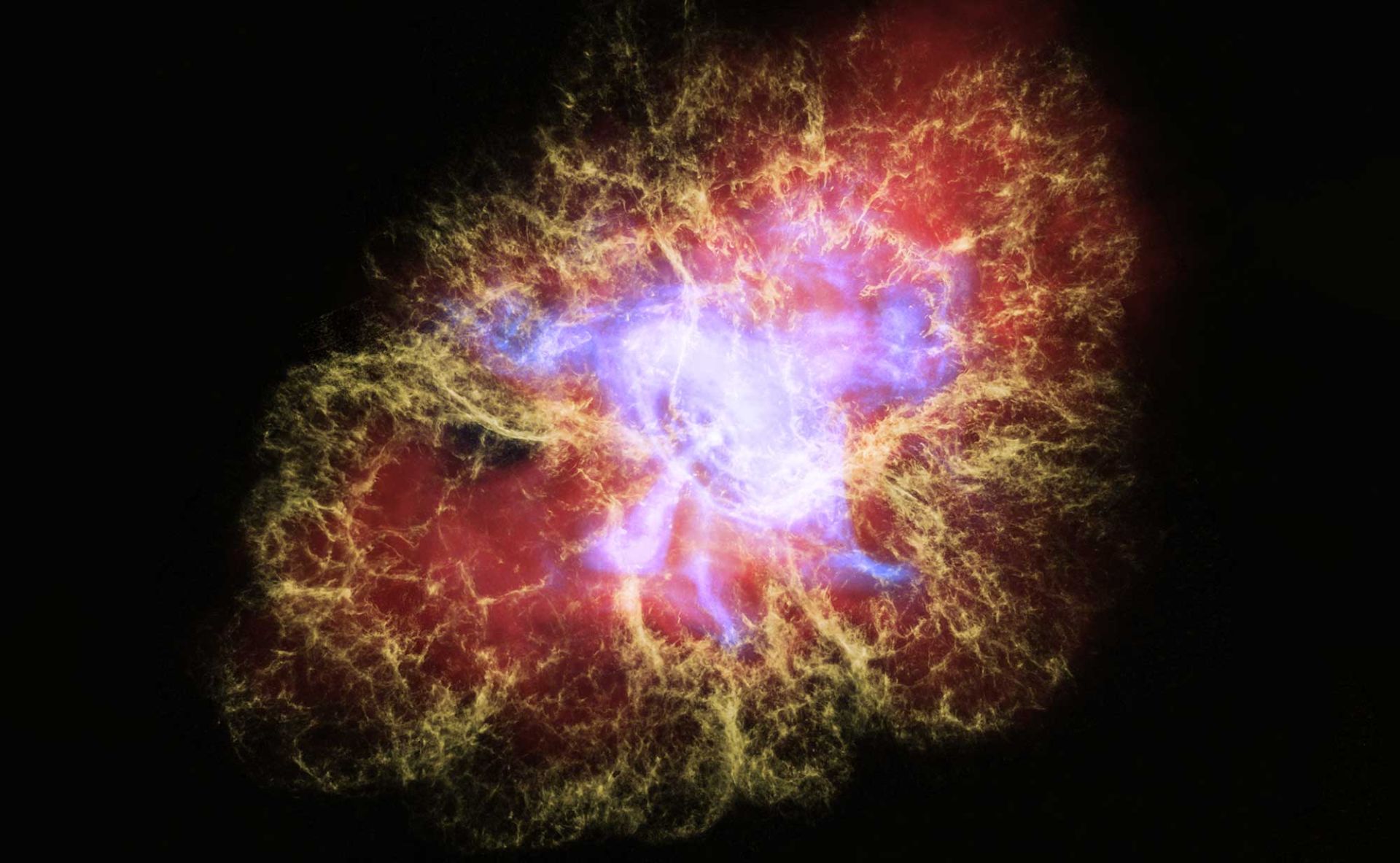
The Crab Nebula is located about 6,500 light-years from Earth in the constellation Taurus and is the only survivor of the supernova explosion that Chinese astronomers observed in 1054 AD. This image is obtained in several wavelengths and from the data of three telescopes, the yellow light belongs to Hubble.
8- Whirlpool galaxy
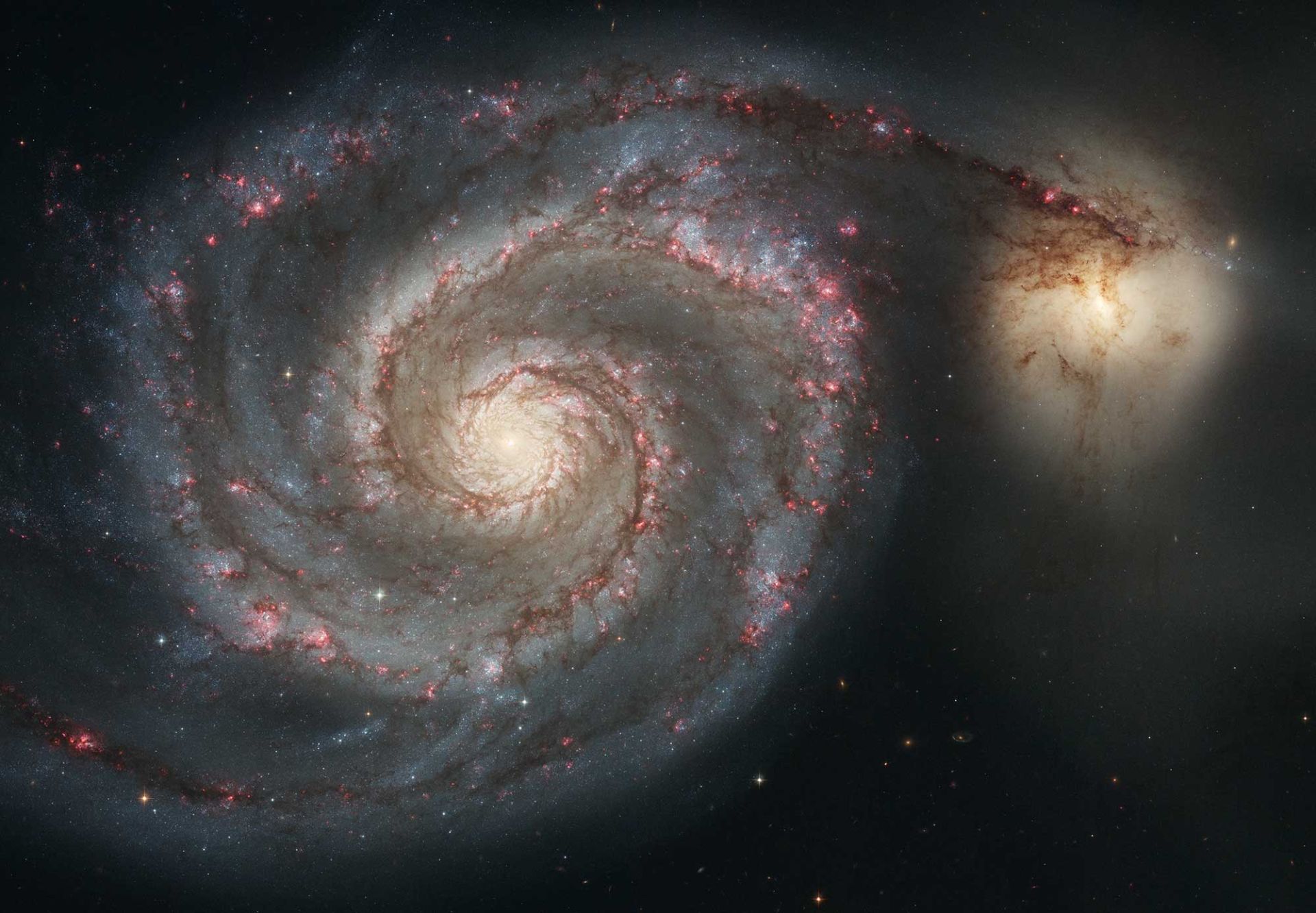
The Whirlpool Galaxy or NGC 5194 is an interacting and spiral galaxy located 31 million light-years from Earth in the constellation of the Hounds. This galaxy and its companion, NGC 5195, are easily visible to amateur astronomers and can also be seen with spotting scopes.
9- Spirograph Nebula

The planetary nebula IC 418, known as the Spirograph (due to its apparent resemblance to Euclid’s magic circle), is located about 2,000 light-years from Earth in the constellation Wolf, near the constellation Orion.
The IC 418 nebula was a Sun-like star a few million years ago and became a red giant a few thousand years ago. With the end of the nuclear fuel of this star, its outer shell was ejected and a planetary nebula was formed. In the center of this image, you can see the white dwarf.
10- The planet Mars is on the verge of confrontation
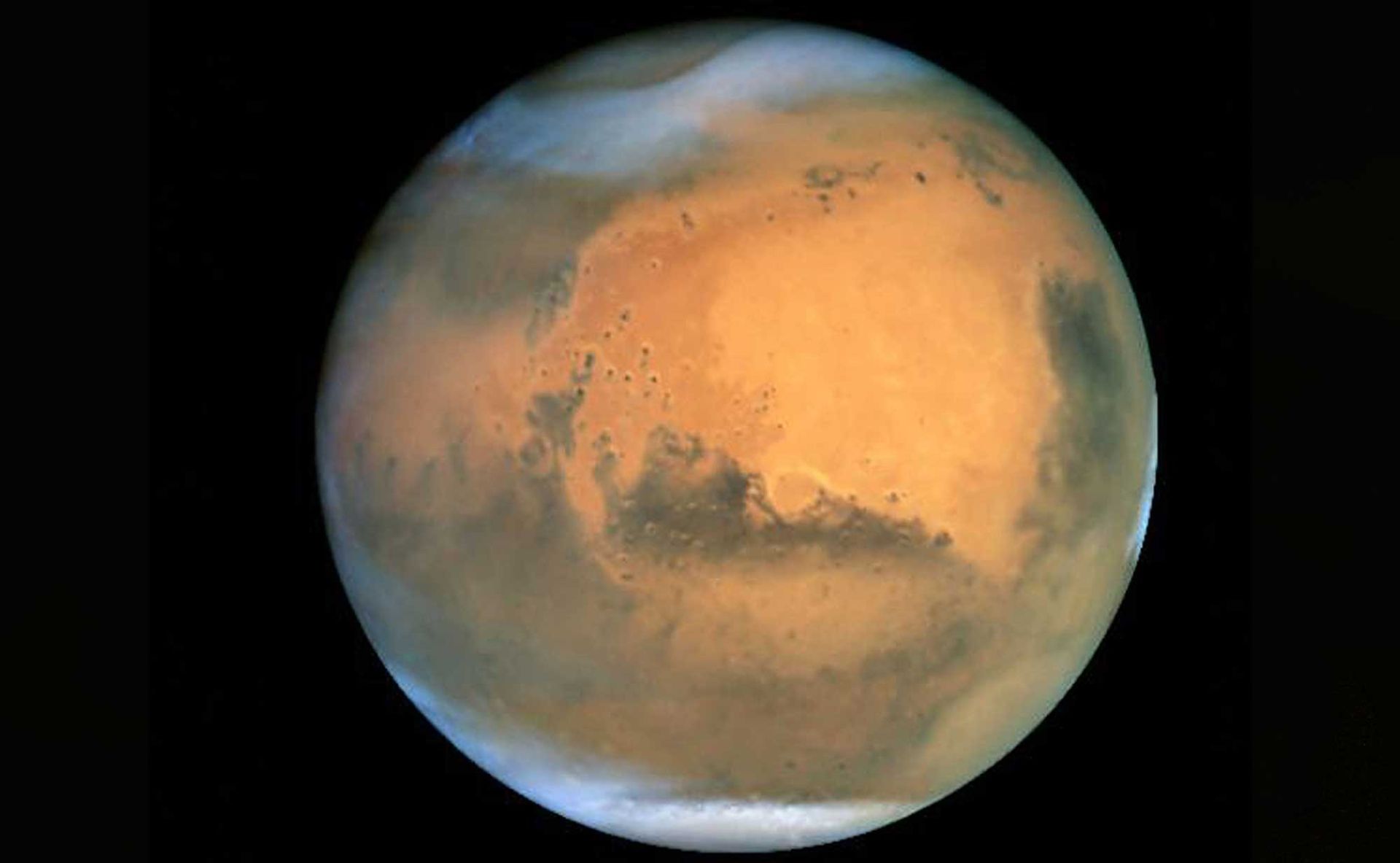
Earth comes between Mars and the Sun about once every two years, causing the red planet to glow spectacularly. Hubble recorded this event, called a collision, in 2001.
How does the Hubble telescope work?
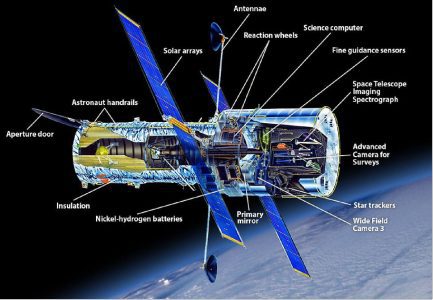

The Hubble telescope, 13.2 meters long and currently weighing 12,200 kg, provides its energy with the help of two 7.62 meter panels from the sun and stores it in 6 nickel-hydrogen batteries with a capacity equal to approximately 22 car batteries. saves This telescope is made up of various instruments, each of which is responsible for recording the highest-quality galactic images.
As the telescope orbits the Earth, its Fine Guidance Sensors lock onto the stars. These sensors are part of the pointing control system and guide the Hubble in the right direction. Hubble can lock onto a target a mile away without moving more than the width of a human hair.
After detecting the target, Hubble’s main mirror begins to collect light. This mirror can collect about 40 thousand times more light than the human eye. Light is reflected from the primary mirror to the secondary mirror. The secondary mirror then refocuses the light through a hole in the primary mirror. From there, light shines on Hubble’s scientific instruments.
Hubble has five scientific instruments, including cameras and spectrographs, each with a different way of reading light. Spectroscopy is a tool that divides light into separate wavelengths.
Hubble’s main camera is called Wide Field Camera 3. The camera studies everything in the universe, from the formation of distant galaxies to the planets of the solar system, and can observe three different types of light: near ultraviolet, visible light, and near-infrared. While the human eye can only detect visible light, the Hubble camera can also observe and record near-ultraviolet and near-infrared. Of course, Hubble can only record one type of light at a time.
The Advanced Camera for Surveys takes pictures of large areas in space and has a very high resolution, quantum efficiency, and powerful emulsion filters. This camera increased the resolution of Hubble’s images by 10 times and showed scientists parts of the universe that had never been seen before.
Hubble’s Cosmic Origins Spectrograph reads ultraviolet light. This spectrograph studies the formation and evolution of galaxies, stars, and planets.
Somewhat like a prism, the Space Telescope Imaging Spectrograph breaks down the light that reaches the telescope from celestial objects into its constituent colors, helping scientists determine the temperature, chemical composition, density, and motion of objects in space. determine This spectrograph is also used to detect black holes.
The Near-Infrared Camera and Spectrograph (NICMOS) can sense the heat emitted from distant objects and observe them and spectrograph multiple targets simultaneously. The sensitivity of this camera to infrared waves has made it very efficient for seeing obscure celestial objects such as gases and interstellar dust, as well as for seeing the deepest parts of the universe.
Where do the colors of the Hubble images come from?

Hubble sends about 150 gigabytes of scientific data to Earth every week. This amount of data is equal to about 45 two-hour movies with HD quality or about 30 thousand mp3 songs. Digital signals are transmitted from Hubble to satellites, then to a ground station, from there to NASA’s Goddard Space Flight Center, and finally to the Space Telescope Science Institute. This institute transforms data into images and information that we can understand.
Hubble’s digital cameras can only take black and white photos; For this reason, astronomers put the recorded image of the object in several exposure modes to record different wavelengths of light using several filters, which are usually red, blue, and green. These images are then superimposed to create a monochrome image. Because Hubble can see in the ultraviolet and infrared ranges, scientists sometimes add extra color to the images to bring out details that are normally invisible to the human eye.
The zoom power of the Hubble telescope
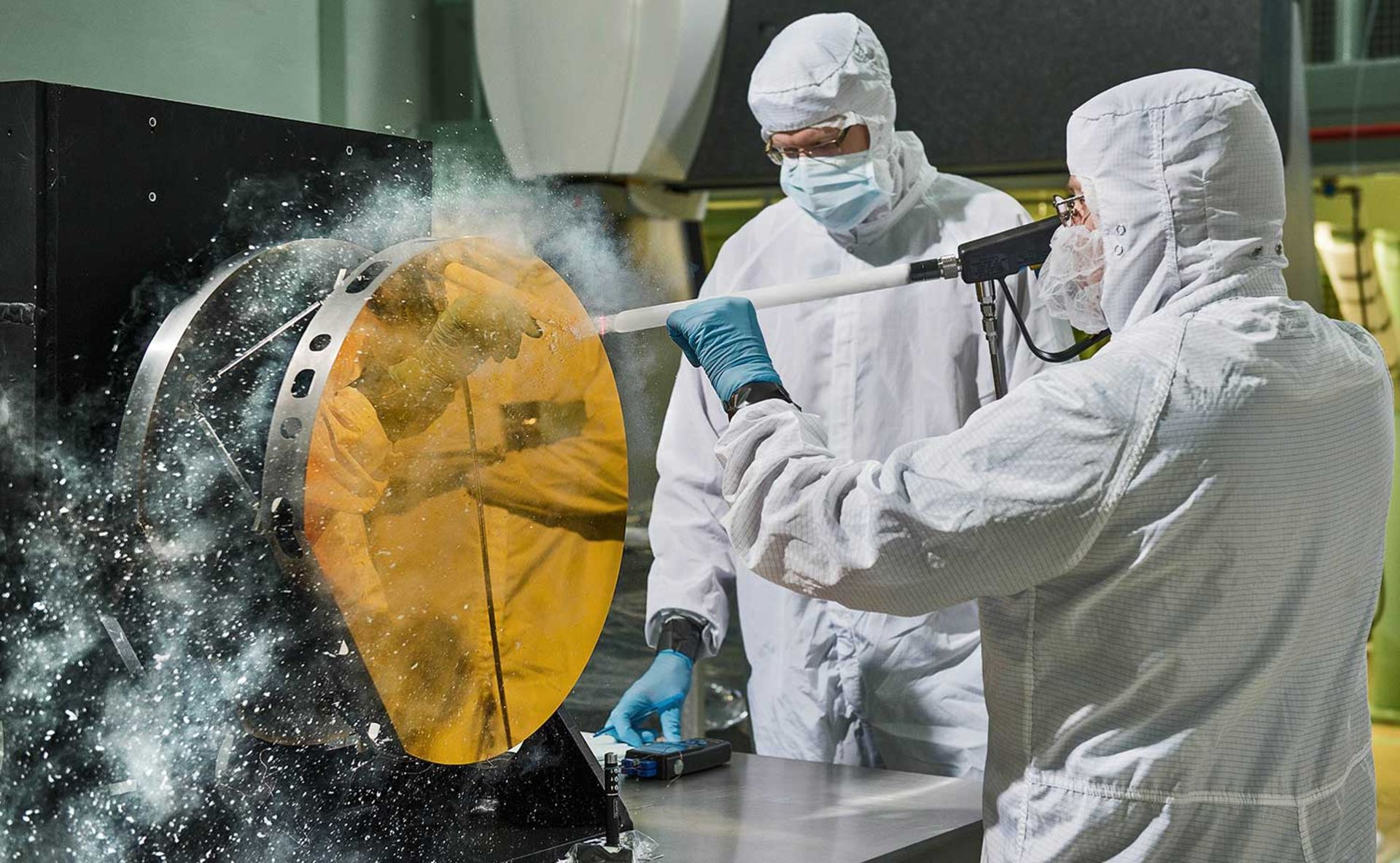
The Hubble telescope is so powerful that it can detect the light of a firefly at a distance of about 11,000 kilometers, and scientists have used this amazing ability to understand many mysteries of the universe. For example, astronomers’ estimates of the age of the universe in the past differed greatly; But Hubble’s observations of old, burned-out stars helped them narrow down the Big Bang to about 13.7 billion years ago.
This telescope was also able to find early signs of supermassive black holes at the center of neighboring galaxies with the help of its high zoom power. The role of this telescope has been very vital in discovering exoplanets that may have suitable conditions for life. Perhaps Hubble’s most important discovery from the study of supernovae was the formation of the theory that a mysterious force known as “dark energy” may be the reason for the acceleration of the universe’s expansion, and this discovery would not have been possible without Hubble’s powerful lenses.
As Hubblesite explains, people often mistakenly think that the power of a telescope depends on its ability to magnify objects; But the fact is that the power of telescopes lies in gathering more light than the human eye can absorb, and the greater the ability of the telescope to gather light, in other words, the larger the surface of the telescope’s mirrors, the greater its power. The Hubble telescope also does this using a technique that was first presented 340 years ago; A technique called Cassegrain reflector, which consists of two convex and concave mirrors. The large, convex primary mirror absorbs light (Hubble’s primary mirror is 2.4 meters in diameter) and reflects it back to a smaller, concave secondary mirror (0.3 meters in diameter on Hubble). The light is then reflected through a hole in the middle of the primary mirror onto the sensors of the Hubble instrument.
Thanks to its large and powerful mirrors, Hubble can look deep into space; But only by looking at the NASA images, you can’t understand the incredible zoom power of this telescope. For this reason, astronomers have published a large number of images recorded by Hubble at different distances in the form of a video that shows off the power of Hubble’s mirrors in the best possible way.
The birthday of the Hubble telescope
On April 24, 1990, corresponding to May 4, 1369, the space shuttle Discovery took off from the earth with its very valuable cargo, the Hubble telescope. The next day, April 25, a team of astronomers put this telescope into space and Hubble’s exploratory journey began. On that historic day, no one could have predicted the wonders that Hubble was going to observe and record in the next 31 years.
In the same way, April 24th is Hubble’s birthday, and every year on this day, NASA publishes a beautiful and new image recorded by Hubble. Last year, on the occasion of the end of three decades of the Hubble mission in space, NASA published a new and amazing image of two nebulae in the Large Magellanic Cloud, which is a small galaxy at a distance of 163 thousand light years from the Milky Way.

The larger, red nebula is called NGC 2014, and the bright, newly formed stars at its heart are 10 to 20 times the size of the Sun. The blue nebula known as NGC 2020 was formed when a star 200,000 times larger than the Sun ejected a large amount of gas. To the eyes of the researchers, this recorded image resembled a rock or a coral reef; That’s why they named it “Cosmic Reef”.
The Hubble telescope explores the world 24 hours a day, seven days a week. That means the telescope has observed and recorded cosmic wonders every day of the year, including your birthday. To find out what image Hubble recorded on your birthday, you can go to this page on the NASA website and enter your birthday month and day in Gregorian.
The most important discoveries of the Hubble telescope
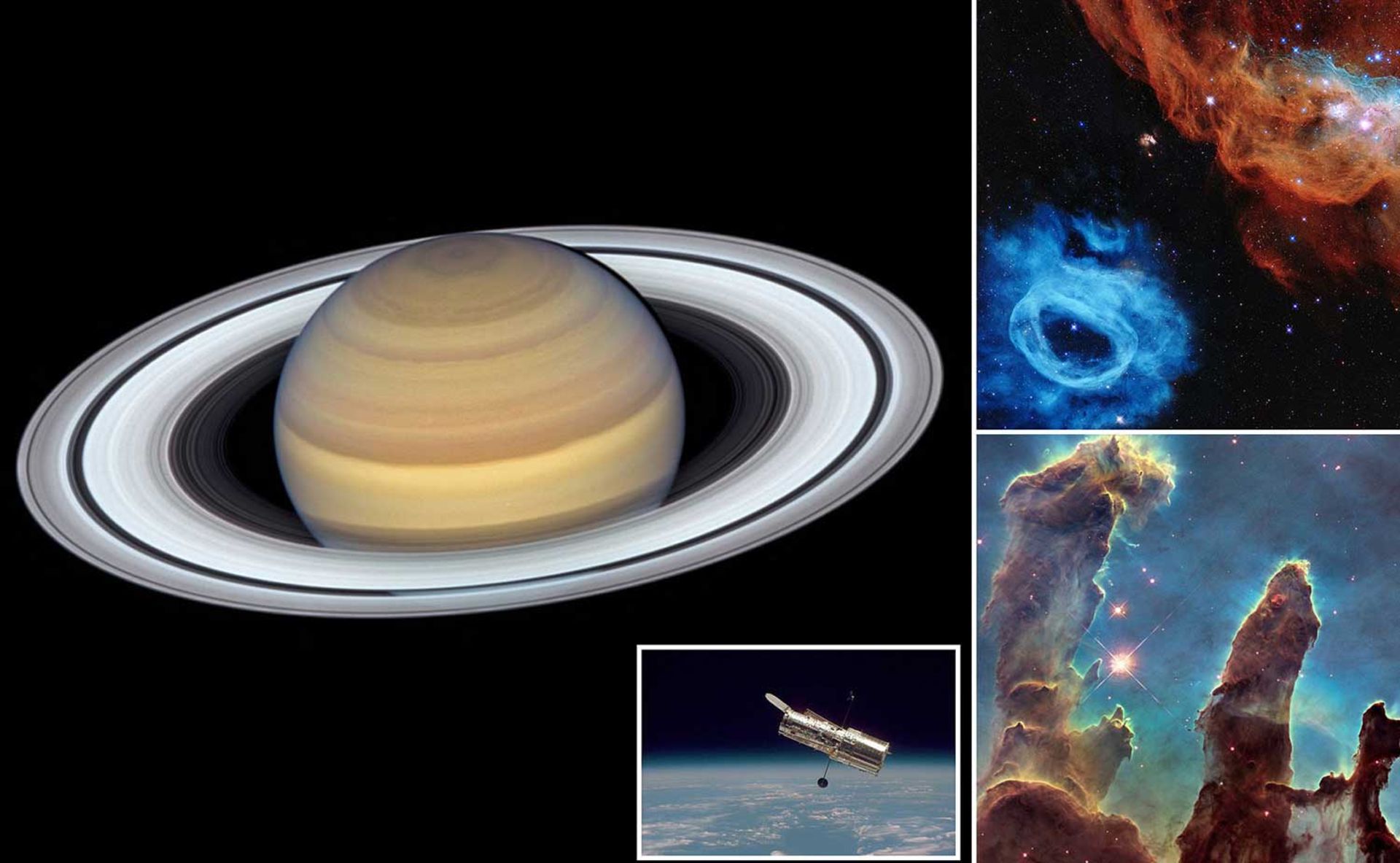
Because of its position in space and its advanced lenses, the Hubble telescope can look at the most distant places that are hidden from the view of telescopes based on the Earth. Since it takes a long time for light to travel long distances, Hubble’s amazing capabilities make it a kind of time machine. The light that Hubble observes from distant objects only shows what the object looked like when the light left it, not what it looks like today; So when we look at the Andromeda Galaxy, which is 2.5 million light-years away from Earth, we see it as it was 2.5 million years ago; It is as if we are looking very far into the past.
Therefore, with Hubble, you can observe very distant cosmic objects that would never be visible without this telescope. For example, in 1995, when astronomers pointed the Hubble telescope at a seemingly empty region in the constellation Ursa Major, not expecting the telescope to capture an image of this region, to their disbelief, after 10 days, images of more than 3,000 observed the galaxy. This image was later named “Hubble Deep Field” (Hubble Deep Field), which you saw in the Hubble Telescope Images section.
Some of the galaxies recorded in the Hubble Deep Field were so young that they had not yet begun to form stars in earnest. A little later, other background observations were made in the same area, each time looking deeper into space. The “Hubble Ultra-Deep Field” image, which was released in 2004 and has four times the resolution of the Hubble Deep Field, is the deepest and most distant point in the universe that the human eye has seen. The galaxies recorded in this image are about 13 billion light years away from us; That is when the universe had spent only 5% of its current life.
By observing the early universe, Hubble helped astronomers calculate the time since the Big Bang, thus estimating the age of the universe in the range of 13.7 billion years. This telescope also examines stars separately in different stages of their evolution; From the clouds of cosmic particles that form newborn stars to the remnants of stars that exploded long ago and those that are at the limit of the distance between these two stages. Hubble has been able to look into the Milky Way, neighboring galaxies, the Magellanic Clouds, and the Andromeda Galaxy.
But more challenging than observing stars is observing planets that orbit other suns outside the solar system. However, in 2008, Hubble captured images of Fomalhaut b, the first time an extrasolar planet had been directly imaged in visible light. Most planets are very difficult to photograph. Most recorded images of planets have been obtained by detecting their atmospheres as they pass in front of their sun; In this way, the atmosphere of these planets filters the light of the stars and Hubble records these changes.
Hubble may spend most of its time looking at objects that are light-years away from Earth, But sometimes it also takes pictures of the planets that revolve around our sun. The images recorded by Hubble of Jupiter, Saturn, and even Pluto are of such clarity and detail that only probes orbiting these planets can capture them better. Hubble images allow scientists on Earth to observe changes in the atmosphere and surface of these planets. When Comet Shoemaker-Levy 9 collided with Jupiter in 1994, Hubble recorded the fatal collision. In fact, this event was the first direct observation of an extraterrestrial collision in the solar system and received extensive media coverage. After this collision, a lot of information about the atmosphere of this gas giant was revealed.
Additionally, in 2014 and 2016, Hubble was able to observe geysers erupting from the icy surface of the moon Europa (one of Jupiter’s 69 moons), thus making it one of the important targets in the search for habitable worlds far from Earth.
With more than three decades in orbit, Hubble has provided scientists with a better understanding of planets, galaxies, and the entire universe. Among the most amazing discoveries and research projects of Hubble, the following can be mentioned:
- Creating a 3D map of dark matter
- Discovery of two moons of Pluto named Nix and Hydra
- Help determine the rate of expansion of the universe
- The discovery that almost all massive galaxies are held firmly in place by a black hole
- Help to more accurately calculate the age of the world
Recent discoveries of the Hubble telescope
Here are some of Hubble’s notable discoveries over the past few years:
2020: Evidence of a mysterious black hole devouring a star at the edge of another galaxy and celebrating its 30th birthday
2019: A close-up view of a spiral galaxy that may be used in solving the mysteries of the black hole; Colorful Death showed us a star and captured incredible images of Comet Borisov.
2018: Observed the massive “El Gordo” galaxy cluster; Watched the disappearance of a huge storm on the planet Neptune and captured the first images of the remnants of the supernova explosion.
2017: Confirmed the existence of a stratosphere on a large exoplanet; discovered superluminous galaxies; observed the most distant active comet known and noticed several asteroids that had accidentally entered the field of view of a galaxy cluster.
2016: Recorded close observations of comet 252P/LINEAR; observed the most distant galaxy known at the time and revealed that the universe may contain 10 times more galaxies than previously thought.
2015: Made new observations of the “Pillars of Creation” to record how they evolved over time; It captured the clearest image of the Andromeda Galaxy at that time; It provided the best 3D view of the deep universe and spotted a mysterious black vortex on the planet Neptune. 2015 was also the 25th anniversary of Hubble’s mission in space.
The future of Hubble
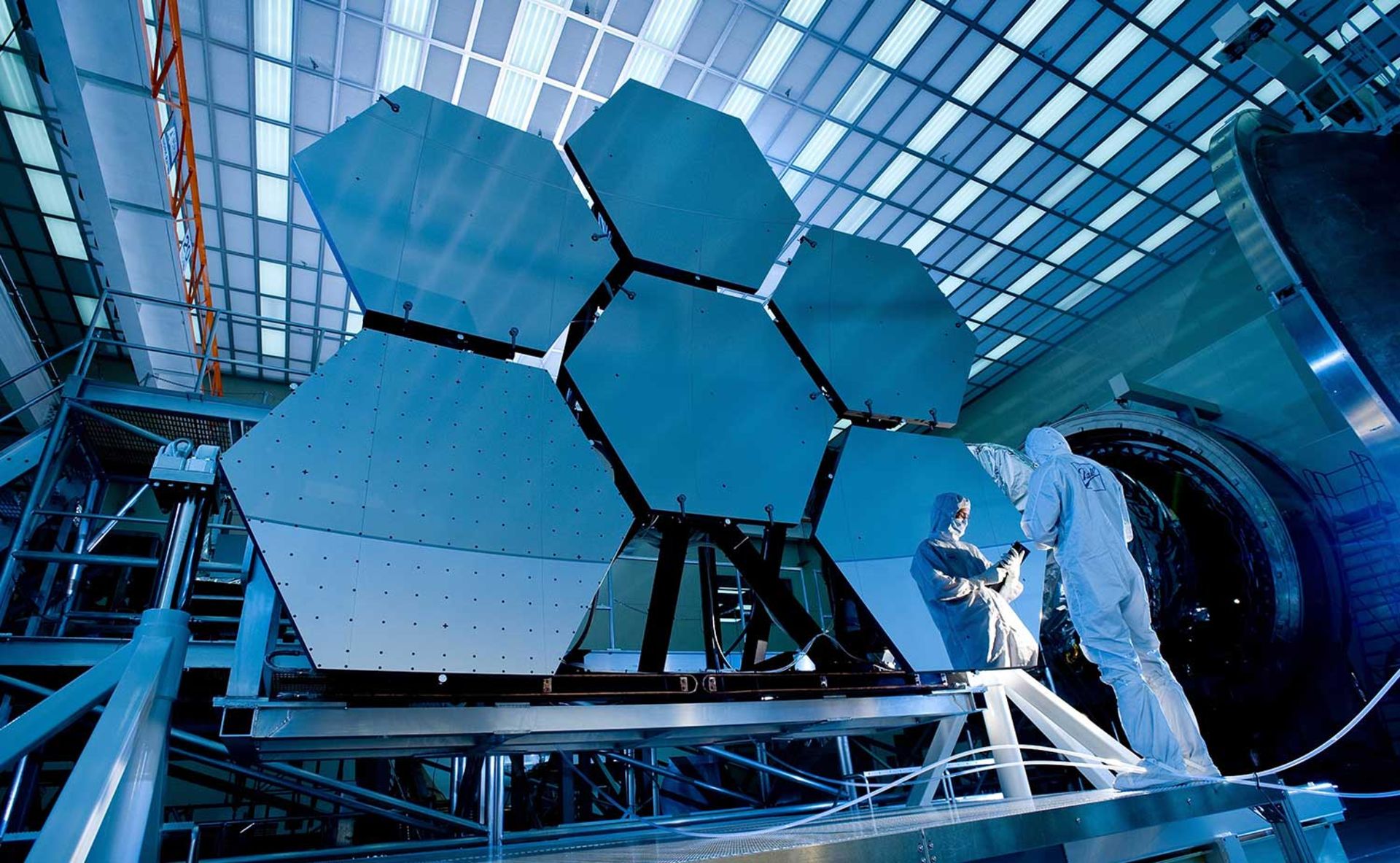
Hubble will be 31 years old in 2021. Engineers have designed Hubble so that it can be repaired and upgraded if necessary. Since Hubble’s launch, five space shuttle missions have taken astronauts near the telescope to repair and upgrade it. The last Hubble upgrade mission was in 2009. This telescope will no longer be repaired or upgraded, But it will continue to perform missions in space.
Meanwhile, NASA and its international partners are preparing the $9 billion James Webb Space Telescope. Named in honor of the NASA administrator (1968-1961) who played an important role in the Apollo space program, James Webb, this telescope is an infrared type that is larger than Hubble and capable of seeing inside clouds and particles in space. This telescope will not need repairs during its 6 to 10-year life. Instead of orbiting the Earth, the Webb Telescope will orbit the Sun at a distance of one million miles from the Earth, and therefore will be able to look much deeper into space, and the light that traveled only a few hundred million years after the Big Bang. had started to observe.
Although the launch of the James Webb Telescope has been regularly delayed, it is currently scheduled to launch in November 2021 (Aban 1400). Astronomers hope to have both telescopes in space at the same time before Hubble retires.
Read more: Involvement of the James Webb Space Telescope in a mission beyond its capacity
Interesting facts about the Hubble telescope
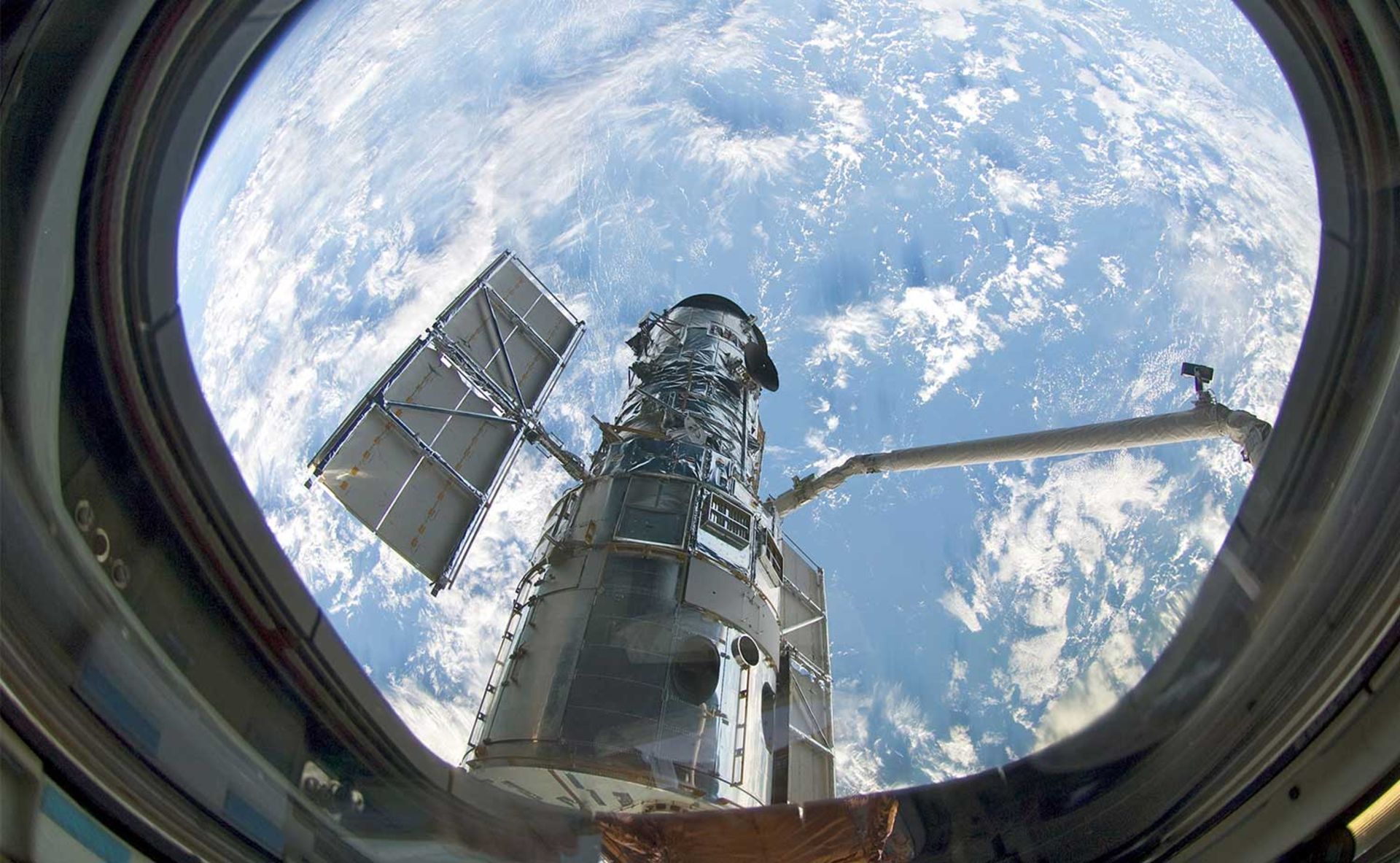
Mission
Launch: April 24, 1990, from space shuttle Discovery
Space deployment: April 25, 1990
First recorded image: May 20, 1990, of the star cluster NGC 3532
First repair and upgrade mission: December 1993
Second repair and upgrade mission: February 1997
Third repair and upgrade mission: December 1999 and February 2002
Fourth repair and upgrade mission: May 2009
size
Length: 13.2 meters
Weight (when launched): about 10,800 kg
Weight (after the fourth mission): about 12,200 kg
Diameter (at widest point): 4.2 meters
Space flight statistics
Near Earth Orbit: Altitude 547 km, 28.5 degrees inclined to the equator
Duration of a complete rotation around the earth: about 95 minutes
Speed: about 27 thousand kilometers per hour
Optical capabilities
Sensitivity to light: from ultraviolet to infrared (115-2500 nm)
Hubble mirrors
Primary mirror diameter: 2.4 meters
Primary mirror weight: 828 kg
Secondary mirror diameter: 0.3 m
Secondary mirror weight: 12.3 kg
Accuracy of targeting
To photograph distant objects with very low light, Hubble must be stable and extremely accurate. The telescope can lock onto a target up to a mile away without drifting more than seven-thousandths of an arc second (about the diameter of a human hair).
Statistical data
Hubble sends about 150 gigabytes of raw data to Earth every week, which is equivalent to about 45 two-hour HD movies or about 30,000 mp3 songs.
Energy consumption
Energy source: Sun
Mechanism: two solar panels of 7.62 meters
Power generation (in sunlight): about 5500 watts
Energy storage
Battery: 6 nickel-hydrogen batteries
Storage capacity: equal to approximately 22 car batteries
Anyone can register a request to use the Hubble telescope
The Johns Hopkins University Space Telescope Science Institute publishes a public call every year for applicants to use the Hubble telescope to register their applications. There is no limit to filing an application, But the competition among the applicants is extremely breathtaking.
Every year, hundreds of aspiring astronomers register their requests following the guidelines in this call, and after reviewing the panel of experts, only about one-fifth of them manage to get time to use the Hubble telescope. Those whose requests are denied can use a large archive of photos that become publicly available after a one-year period


Moons of Jupiter; Features and Explorations
Jupiter is the largest planet in the solar system and the largest gas giant. This planet, also called the king of planets, has 79 confirmed moons. In terms of the number of moons, Jupiter ranks second in the solar system after Saturn (with 82 moons). According to the latest research, Canadian astronomers found evidence of the existence of 45 small moons in the orbit of Jupiter, and based on speculations, the number of moons of this planet can reach 600; But they have not yet reached the verification and monitoring stage.
Overall, among Jupiter’s 79 confirmed moons, the four largest Galilean moons are the most prominent. These moons were discovered independently by Galileo Galilei and Simon Marinus in 1610. As early as 1892, more moons of Jupiter were discovered and named after the lovers or daughters of Jupiter, the Roman god, or Zeus (his Greek counterpart). The Galilean moons are the largest and heaviest objects in Jupiter’s orbit.
Eight moons of Jupiter are regular moons with almost circular orbits. The Galilean moons are nearly spherical due to their planetary mass. If these moons were in the orbit of the sun, they would be classified as dwarf planets. The other four moons are smaller and less distant from Jupiter; These moons are sources for the formation of Jupiter’s rings. Other moons of Jupiter are irregular and their orbits are further away from Jupiter. These moons are probably trapped by Jupiter’s gravity from the solar orbits. Twenty-two of Jupiter’s irregular moons have yet to be officially named.

Formation and origin
Jupiter’s regular moons are thought to have formed from the planet’s rotating disk; A ring of gas and rock similar to a primordial planetary disk. On the other hand, irregular moons are composed of asteroids that are caught in the trap of Jupiter’s gravity. According to many scientists, these asteroids were crushed and then formed the irregular moons of Jupiter due to collision with other small objects.
group of moons
In general, Jupiter’s moons are divided into two categories: regular and irregular. Irregular moons are divided into two groups: internal moons (Amaltia) and Galilean moons.
- Inner moons (Amaltia): Metis, Adrastia, Amaltia, and Thebe are Jupiter’s inner moons; Because they are in close proximity to this planet. Two of the innermost moons complete the orbit of Jupiter in less than a day. The other two moons are the fifth and seventh largest moons in Jupiter’s lunar system, respectively.
According to observations, at least the largest member of this group, Amaltia, did not form on the current orbit but was already farther away from Jupiter.
- The main group of Galilean moons: Io, Europa, Ganymede, and Callisto are among the largest moons in the solar system in terms of mass and size. The diameter of the Ganimeh moon is even greater than the planet Mercury, but its mass is less. These moons are respectively the fourth (Io), sixth (Europa), first (Ganime), and third (Callisto) natural moons of the solar system, and they cover approximately 99.997% of the total mass of Jupiter’s orbit. Jupiter is 5000 times heavier than its moons.
Irregular moons
Irregular moons of Jupiter are small bodies with eccentric orbits and further away from Jupiter. These moons have similarities such as declination, eccentricity, semimajor axis, and chemical composition. According to scientists, these are a group of impact moons that were formed by the collision of larger parent objects with asteroids caught in Jupiter’s gravitational field.
A review of the Galilean moons
The Galilean moons are among the most well-known moons of Jupiter that have been studied during various probes and more information is available. Next, we mention the features and explorations related to these moons.
Moon Io
Io is the fifth largest moon of Jupiter and has the most volcanic activity in the solar system. This moon has sulfur channels that spread up to 300 km. Io’s surface is filled with lava seas and liquid rock flood plains. Astronomers discovered a map of 150 volcanoes on this moon, some of which emit lava up to 400 kilometers into space.
At 4.5 billion years old, Io is the same age as its host planet Jupiter. The average orbital distance between Io and Jupiter is 442 thousand km. It takes 1.77 Earth days for Io to complete an orbit around Jupiter. Io has a tidal lock and always has one side facing Jupiter. The diameter of Io reaches approximately 1820 km, which is slightly more than the diameter of the Moon.
Io is the only object in the solar system with active volcanoes
Io has a relatively oval shape. Among the Galilean moons, Io ranks lower than Ganymede and Callisto in terms of mass and volume and ranks higher than Europa. The average surface temperature of Io is minus 130 degrees Celsius. For this reason, sulfur dioxide snow bodies are abundant on its surface. Io is also called the moon of ice and fire.
Io was discovered on January 8, 1610 by Galileo Galilei. He actually discovered this moon the day before, But he could not distinguish Io and Europe. Galileo’s discovery was the first lunar discovery at that time. Galileo’s discoveries proved that the planets revolve around the sun, not the earth. Galileo initially named this moon Jupiter 1; But in the middle of the 19th century, its name was changed to Ayo. In Greek mythology, Io was the priestess of Hera (wife of Zeus) and the daughter of Inachus, king of Argos. Zeus (the Greek counterpart of the Roman god Jupiter) fell in love with Io; But he turned him into a cow to protect him from his wife Hera.
Features of Io
Io’s interior consists of an iron sulfide core and a brown silicate outer layer. This combination has given this moon a mottled appearance with orange, black, yellow, red, and white colors. Based on data obtained from computer models, Io formed in a region around Jupiter where the abundance of ice was initially high. The heat of Io along with the water on its surface shortly after its formation can be a sign of the existence of ancient life; Even in an environment where Jupiter’s radiation destroys surface water.
The most prominent features of this moon are its volcanoes. After Earth, Io is the only body in the solar system with active volcanoes. Galileo made notes of volcanic activity, and NASA’s Voyager spacecraft confirmed Io’s volcanoes in 1979.
Due to volcanic activity, a large part of the atmosphere is sulfur dioxide. Based on observations from the Gemini North telescope in Hawaii and the TEXES spectrometer in 2018, Io’s atmosphere is likely to collapse. Io’s sulfur dioxide gas mantle freezes in shadow every day. When Io returns to sunlight, the frozen sulfur dioxide turns into a gas once more.

Callisto’s moon
Callisto is one of the largest moons in Jupiter’s orbit. This moon has an ancient surface full of impact craters, which shows that there is no news of geological processes in it. But this moon has an underground ocean and because of its old surface, the existence of life in this ocean is still not certain.
Callisto, like the other four Galilean moons, was discovered in 1610. The name of this moon was originally Jupiter IV, But in the 19th century, it was called Callisto. Callisto was studied by several probes, including the long-duration mission of the Galileo spacecraft to Jupiter in the 1990s and 2000s. The Juno spacecraft has also recorded remote images of the moon Callisto. At 4.5 billion years, Callisto is the same age as its host planet, Jupiter. This moon is the heaviest body with an impact hole in the entire solar system, But its surface has remained untouched since almost 4 billion years ago.
Among the Galilean moons, Callisto is the outermost. This moon is located at a distance of one million eight hundred and eighty thousand kilometers from Jupiter. It takes approximately seven Earth days for Callisto to complete an orbit of Jupiter. Callisto has fewer tidal effects than the other Galilean moons; Because on the other side of Jupiter’s main radiation belt is located. Callisto is tidally locked to Jupiter and always faces Jupiter on one side.
With a diameter of 4800 km, Callisto is almost the same size as the planet Mercury. This moon is the third largest moon in the solar system after Ganymede and Titan (Saturn’s moon). Moon is placed fifth after Io. Callisto’s surface temperature reaches minus 139.2 degrees Celsius.
In 1996, the Galileo spacecraft sent back detailed information about Callisto. The mission mapped much of the moon’s surface and discovered its thin carbon dioxide atmosphere and evidence of a subsurface ocean. Callisto’s effect on the auroral bursts of Jupiter’s atmosphere has been revealed based on a review of images obtained from the Hubble Space Telescope in 2018. The client himself has an aura, But some of Jupiter’s aurora phenomena originate from interactions with its four large moons.
Future missions, including JUICE, which will investigate Jupiter’s icy moons, will reveal more about Callisto and the possibility of life there. Papers have also been published on modeling the interaction of Jupiter’s magnetic field with Callisto (this review provides evidence for Callisto’s subsurface ocean) and finding atomic oxygen in the moon’s atmosphere. Other papers have focused on dimensions such as subsurface water, the number of impact craters, and atmospheric properties.
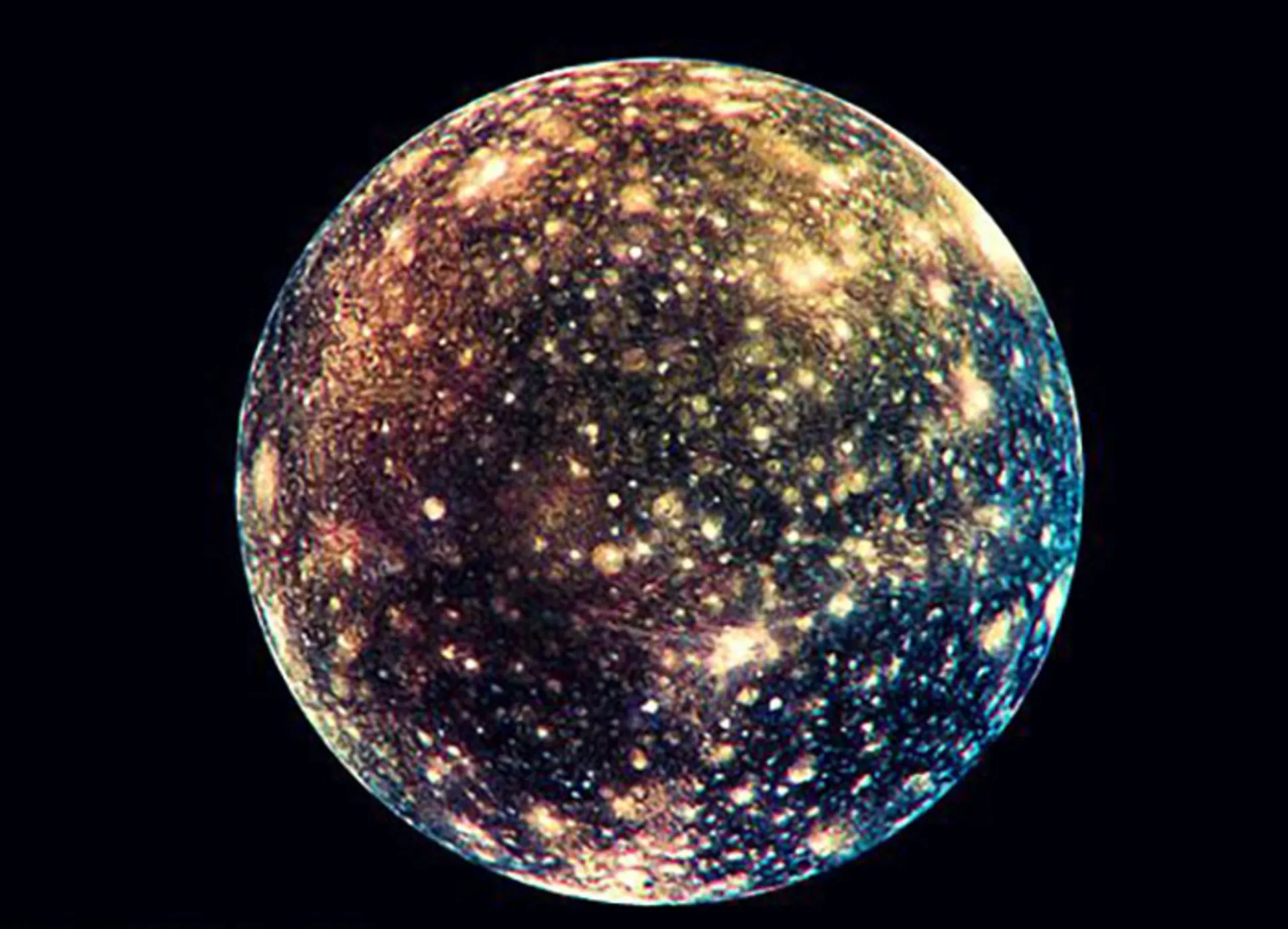
Ganymede
Ganymede is the largest moon of Jupiter and also the largest moon in the entire solar system. This moon is even bigger than Mercury and Pluto and slightly smaller than Mars. As a result, if it was in the orbit of the sun, it would easily be classified as a planet. Ganymede probably has a saltwater ocean beneath its ice surface; As a result, it becomes one of the strong candidates for life discoveries. Ganimeh is one of the targets of the JUICE mission, which will be launched in the 2030s.
The three moons Callisto, Ganymede, and Europa have subsurface oceans of saltwater
Like Callisto and Io, Ganymede is the same age as Jupiter at 4.5 billion years old. This moon is more than one million and seventy thousand kilometers away from Jupiter and completes the orbit of this planet in seven days. The average radius of Ganymede is 2631.2 km. Ganymede is larger than Mercury, but its mass is half that of Mercury, and as a result, it has a low density. The average daytime temperature in Ghanimeh reaches minus 113 to minus 183 degrees Celsius. Astronomers with the Hubble telescope found evidence of Ganymede’s thin oxygen atmosphere in 1996. However, this atmosphere is too thin to support life as we know it, and it is unlikely that life could inhabit Ganymede.
Ganymede is the only moon with a magnetosphere in the entire solar system. A magnetosphere, commonly seen on planets such as Jupiter and Earth, is a comet-shaped region where charged particles are trapped and deflected. Ganymede’s magnetosphere is embedded in Jupiter’s magnetosphere. After discovering Ganymede, Galileo renamed it Jupiter III. With the increase in the number of objects discovered in the middle of the 19th century, the name of this moon was changed to Ganymeh based on Greek mythology.
Loot features
Ganymede has an iron core, a rocky mantle, and a very thick crust, most of which is made up of ice. Also, traces of rock formation can be seen on the surface of Ganimeh. In February 2014, NASA unveiled a detailed map of Ganymede in the form of images and video animation, created using observations from NASA’s Voyager 1 and 2 spacecraft as well as the Galileo orbiter.
The surface of Ganimeh is composed of two main types of surface: approximately 40% of the surface of Ganimeh is dark with numerous impact craters and 60% is light colored with grooves that give a special appearance to Ganimeh. Grooves are caused by tectonic activities or subsurface water release.
According to scientists, Ganimeh has an underground saltwater ocean. In 2015, scientists used the Hubble Space Telescope to study Ganymede’s auroras and the changes between the magnetic fields of Jupiter and Ganymede. Based on the evidence of these auroras, Ganymede probably has an underground saltwater ocean that is even saltier than the Earth’s oceans.
Some scientists have mentioned the possibility of life in Ganimeh. Because of Ganymede’s internal structure, the pressure on the ocean floor is so high that any water that reaches it turns into ice. For this reason, hot water currents can hardly deliver nutrients to the oceans.

Europa’s moon
Europa is the smallest Galilean moon. The surface of this moon is frozen and covered with a layer of ice; But according to scientists, there is an ocean under this ice surface. The icy surface makes Europa one of the most reflective moons in the solar system.
Using the Hubble Space Telescope, researchers detected signs of geysers from the Antarctic region of Europe in 2012. After several attempts, another research team observed the geysers in 2014 and 2016. Europa’s moon formed at the same time as its host planet, Jupiter, about 4.5 billion years ago. On average, the distance between Europe and Jupiter is 670,900 kilometers. It takes Europa three and a half Earth days to complete an orbit of Jupiter. Europe has a tidal lock to Jupiter; Therefore, one side is always facing the customer.
With a diameter of 3100 km, Europa is smaller than the Moon and larger than Pluto. The temperature of Europe’s surface at the equator never rises above minus 160 degrees Celsius, and at the poles of this moon, it never rises above minus 220 degrees Celsius. Galileo discovered the Europa moon on January 8, 1610. Of course, he had observed it the day before on January 7; But he could not distinguish this moon from Io. In Greek mythology, Europa is stolen by Zeus (a counterpart of Jupiter, the Roman god) and takes the form of a white bull to seduce Europa. He decorates the cow with flowers and sends it to the city of Crete. Zeus returns to his normal form in Crete and seduces Europa. Europa was the queen of Crete and bore Zeus several children.
One of the prominent features of Europa is its high reflectivity due to its ice crust. According to scientists’ estimates, the surface of Europe is 20-180 million years old. Images and data from the Galileo spacecraft show that Europa has a composition of silicate rock, an iron core, and a rocky mantle just like Earth. Unlike the Earth’s interior, Europa’s rocky atmosphere is surrounded by a layer of water or ice that is 80 to 170 km thick. Based on the fluctuations of Europa’s magnetic field, there is probably an ocean under the surface of this moon that can host life. The possibility of extraterrestrial life has made Europa an attractive destination for space exploration.
The surface of Europe is full of cracks and fissures. According to many scientists, these cracks are the result of the tidal forces of the ocean beneath Europa’s surface. As Europa approaches Jupiter, sea levels under the ice rise above normal. In this situation, the continuous tide of the sea causes cracks in the surface of the moon. In 2014, scientists discovered that Europa could host tectonic plates. In the solar system, only the Earth has a variable crust, which is useful for the evolution of life on Earth.
Life in Europe
The presence of water under the frozen crust has made the moon Europa one of the possible candidates for hosting life in the solar system. The icy depths of this moon probably have channels to the mantle like Earth. These channels provide the warm environment necessary for the evolution of life. According to a 2016 study, Europa’s oxygen content was estimated to be ten times that of hydrogen, which is similar to Earth’s. In this way, the ocean under the surface of Europe becomes a better environment for life.

Exploration programs and missions
Jupiter is one of the most visited planets in the solar system. Not only Jupiter itself is a valuable exploration target, but its gravity can be used to send spacecraft to the outer part of the solar system and more distant targets.
NASA’s Pioneer 10 spacecraft passed by this planet in 1973 and Pioneer 11 a year later. The destination of both was the outer parts of the solar system. (Pioneer 11 also visited Saturn). Pioneer 10 was the first spacecraft to closely observe Jupiter. The spacecraft covered Jupiter’s intense magnetic field and radiation and showed that Jupiter’s interior could be liquid.
The twin spacecrafts Voyager 1 and 2 passed by Jupiter in different months of 1979. Both spacecraft are still in contact with Earth; Voyager 1 passed Saturn in 1980 and entered interstellar space in 2012, while Voyager 2, after examining Saturn, explored Uranus and Neptune and entered interstellar space in 2018. Both spacecraft captured more than 33,000 images of Jupiter and its large moons. Among the major discoveries of these two spacecraft, Io’s volcanic activity and signs of Europa’s ice crust can be mentioned.
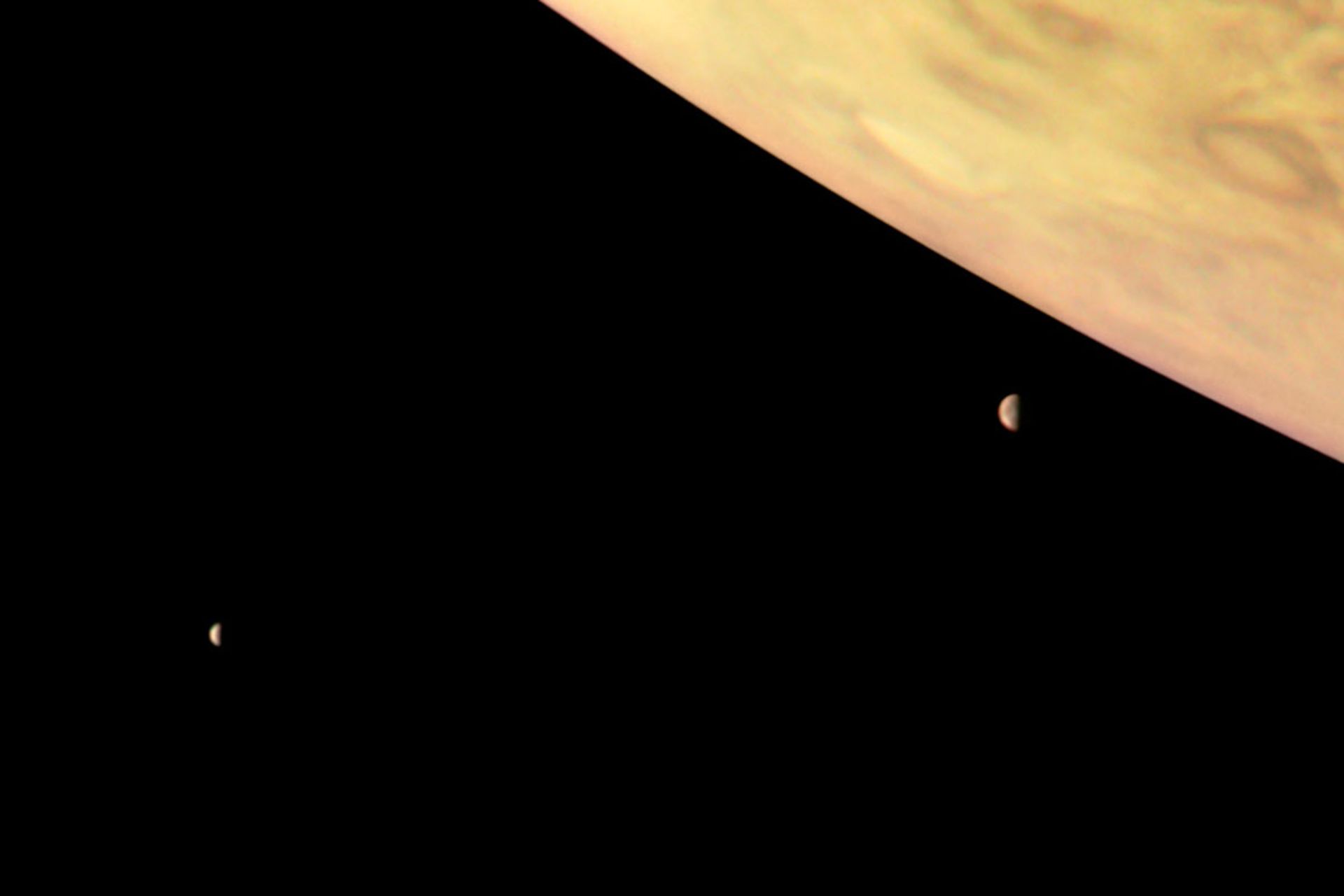

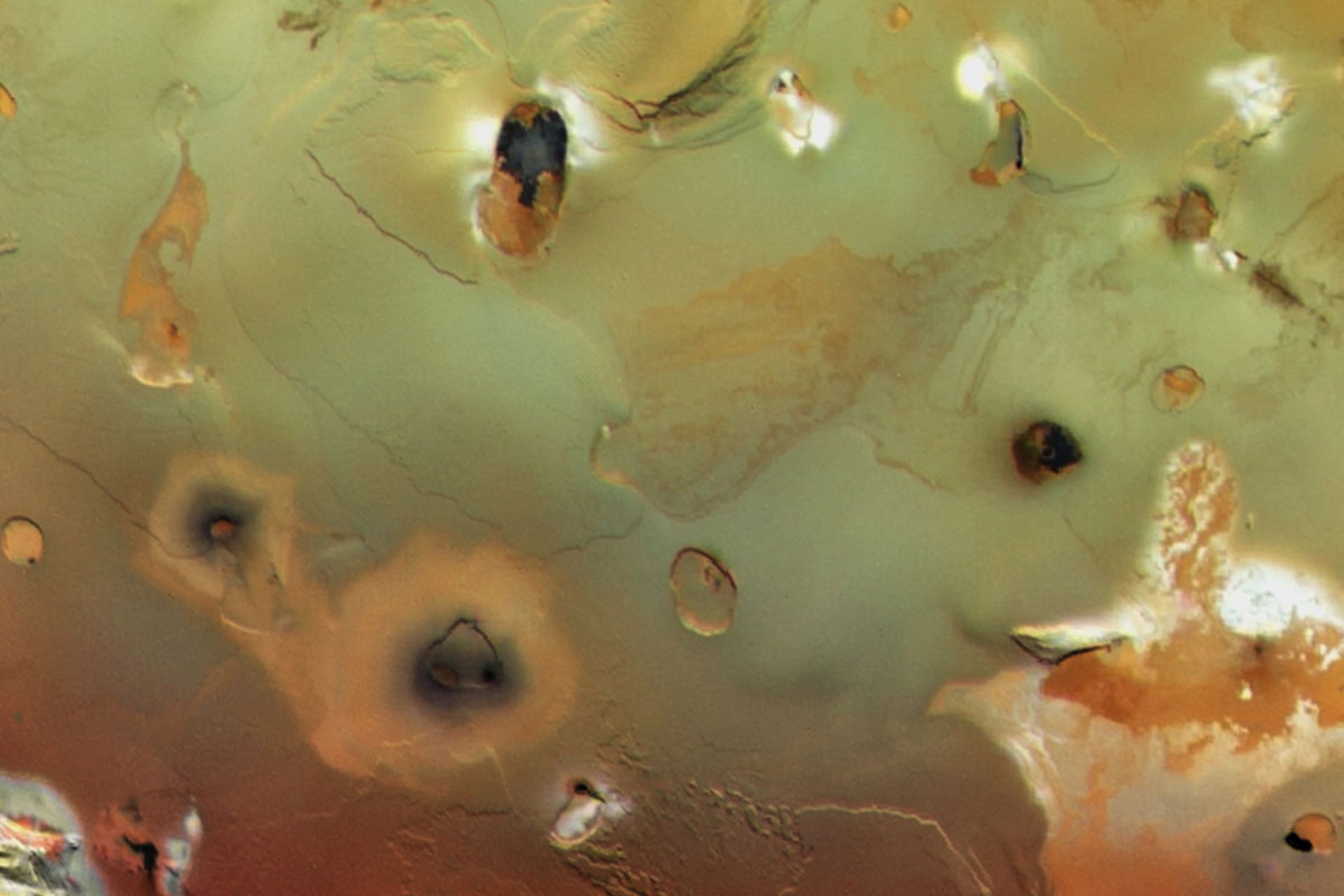
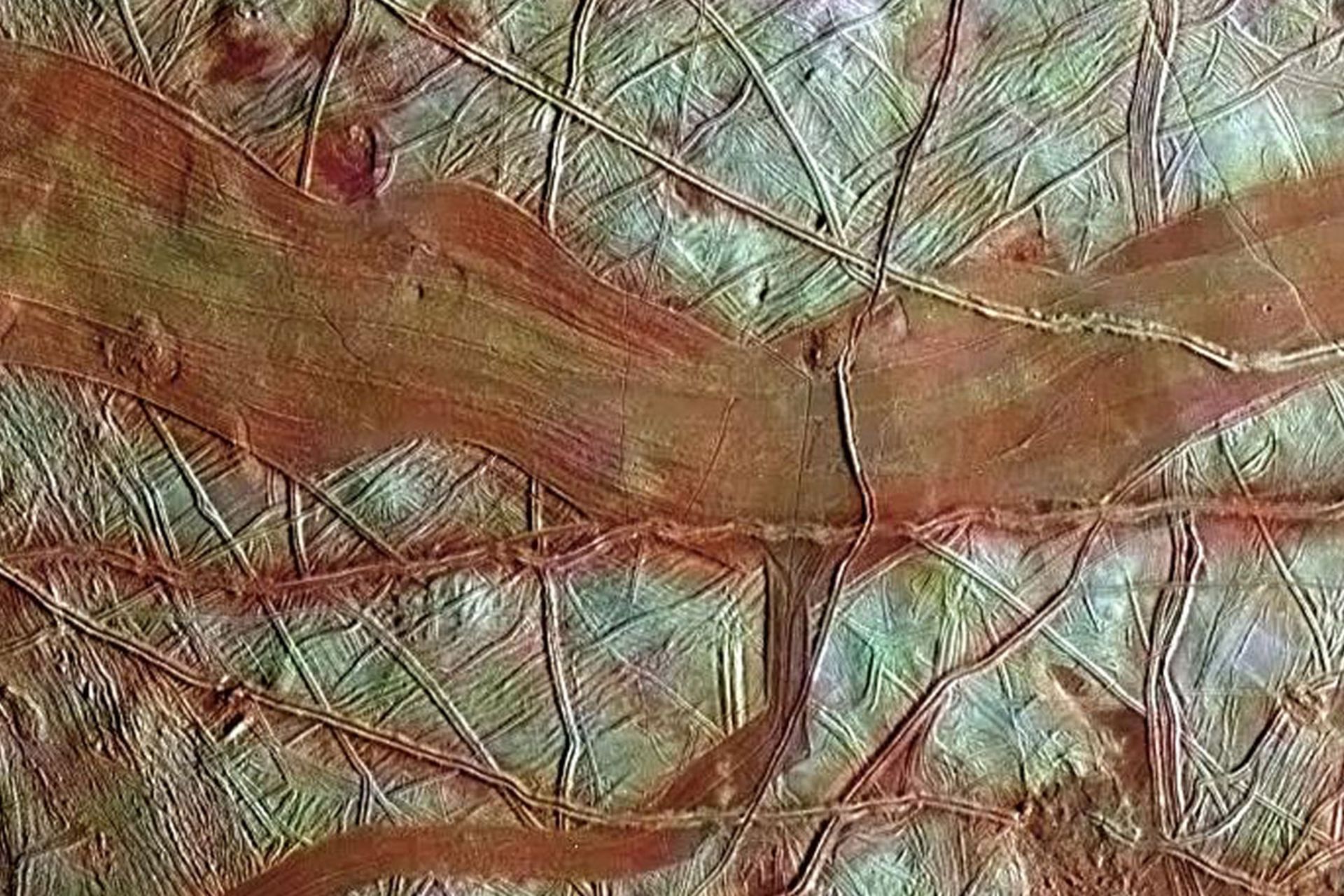

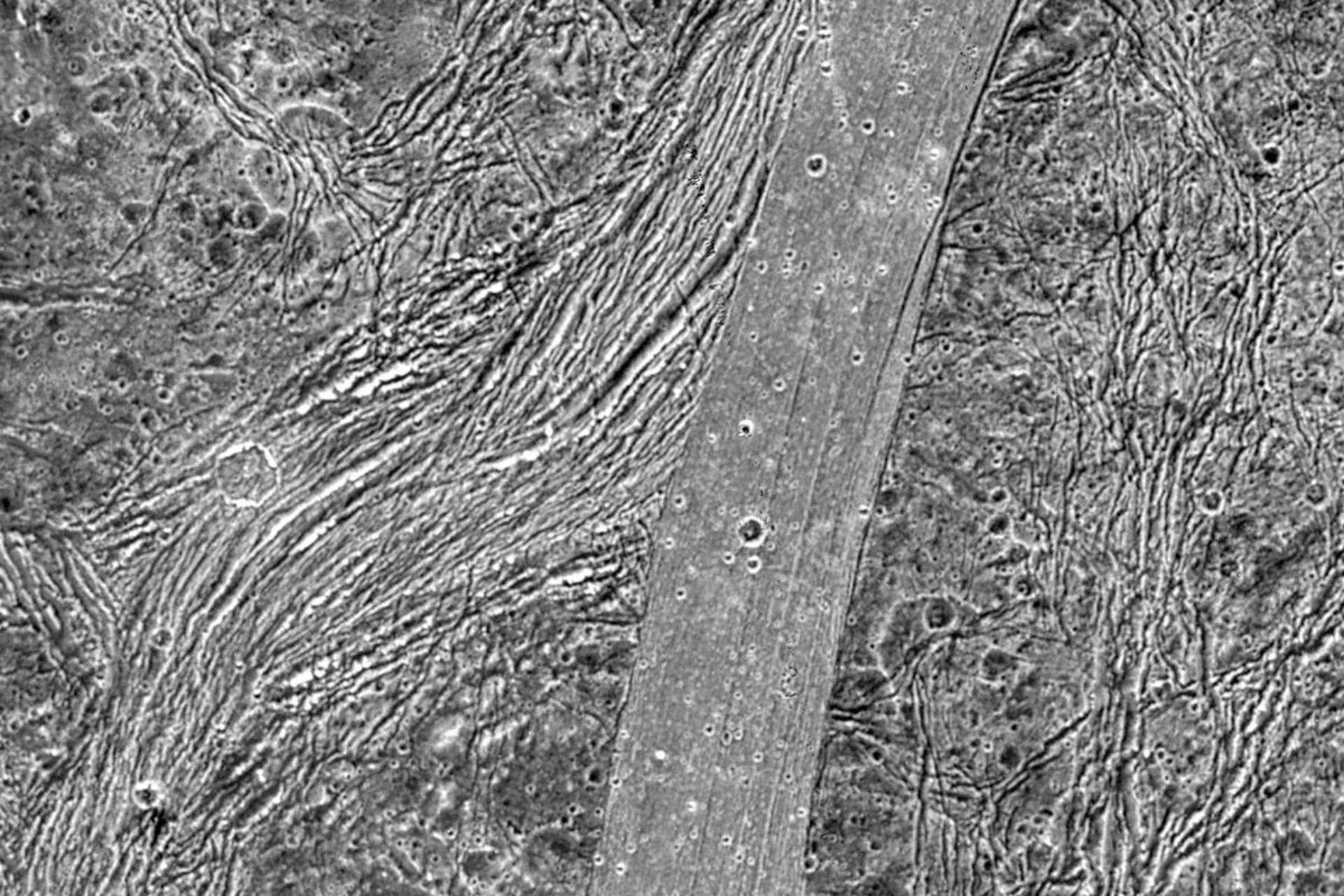
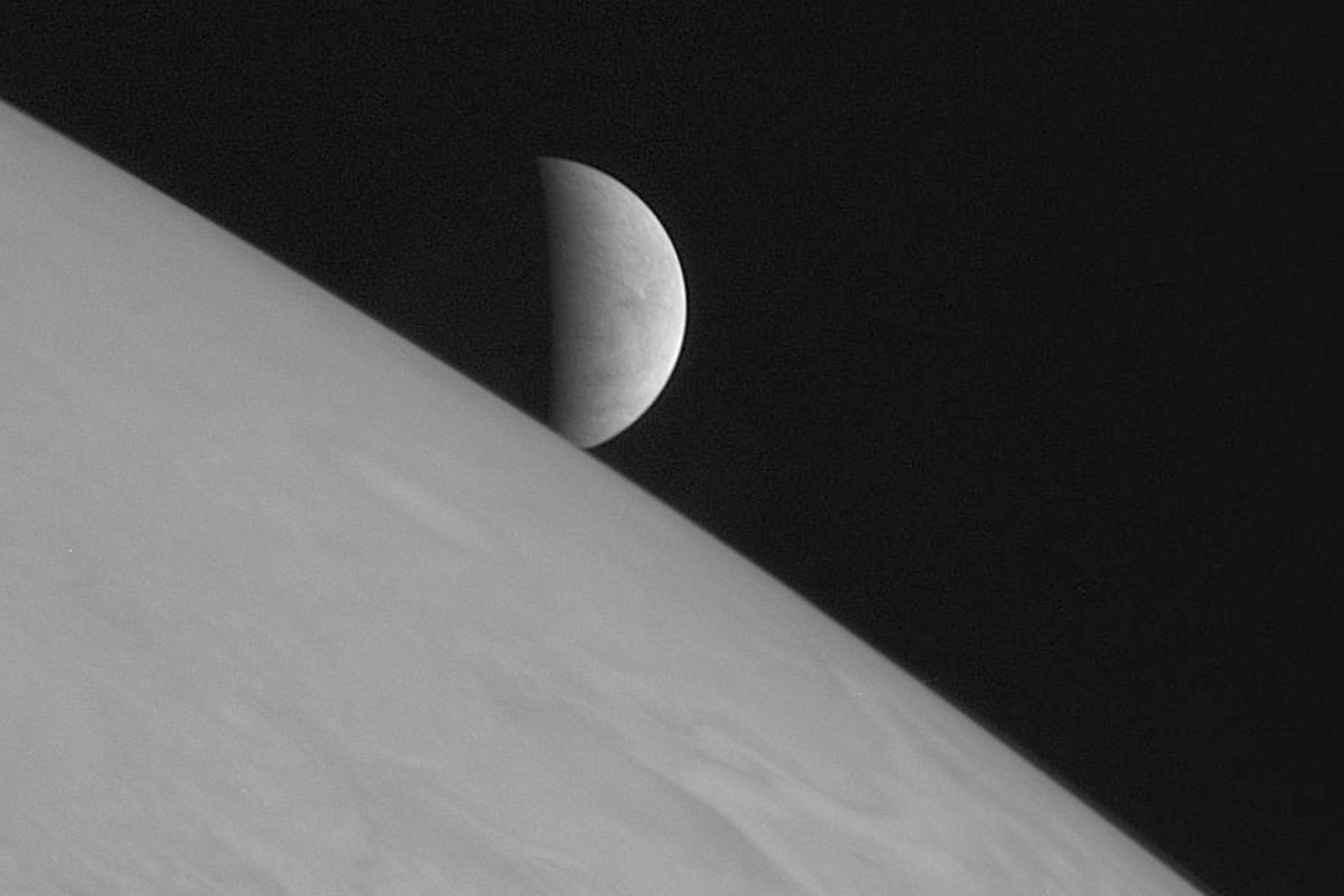

Images that have been recorded during various missions of Jupiter’s moons
NASA’s Galileo spacecraft was the first spacecraft dedicated to visiting Jupiter and its moons. This spacecraft entered Jupiter’s orbit in 1995 and entered the planet’s atmosphere in 2003 to end the mission. Some of the major discoveries of this spacecraft include the discovery of salty water under the surface of the icy moons Europa, Ganymede, and Callisto, and Jupiter’s storms. The spacecraft also sent back detailed images of Io’s volcanic activity.
Other probes that have passed Jupiter include NASA’s and the European Space Agency’s Ulysses solar probe (this probe passed Jupiter in 1992 and 2004), NASA’s Huygens spacecraft and the European Space Agency (2000), and the New Horizons spacecraft (2007). These spacecraft recorded various images of the Jupiter system and Io’s volcanic eruptions and also observed Jupiter’s radio waves, charged particles, magnetic field, and the effect of the solar wind on this planet.
Juno is another spacecraft that entered Jupiter’s orbit in 2016 and its mission is still ongoing. The scientific goals of this spacecraft are to investigate the amount of water in Jupiter’s atmosphere, map the composition and properties of Jupiter’s atmosphere, and obtain more information about Jupiter’s gravitational and magnetic fields. This spacecraft carries a camera called JunoCam.
Future missions
Jupiter’s future missions are dedicated to investigating its icy moons and the potential for life on these moons. JUICE (Jupiter’s Icy Moon Probe) was selected as one of the European Space Agency’s science programs. The spacecraft will study Jupiter’s three icy moons: Europa, Callisto, and Ganymede.
JUICE will be launched on an Ariane 5 rocket in June 2022. It will take more than 7 and a half years for this spacecraft to enter Jupiter’s orbit. JUICE uses the gravity of Venus and Earth to accelerate and reach the outer part of the solar system. The spacecraft is expected to enter Jupiter’s orbit in January 2030 and begin a 2.5-year mission of Jupiter’s moons, as well as Jupiter’s atmosphere and magnetosphere.
Europa Clipper is a proposed NASA mission focused on Europa, Jupiter’s icy moon. The proposed spacecraft will be launched in the early 2020s and will reach Jupiter in a journey of 6 and a half years. This spacecraft will investigate the possibility of life in the subsurface ocean of Europa’s moon. China will also launch its first spacecraft to Jupiter in 2036.
Human discoveries
Galilean moons are a great opportunity for future human exploration. Europa due to the possibility of life and Callisto due to low radiation are the main human exploration targets. In 2003, NASA proposed a program called Human Exploration of the Outer Planets (HOPE), which would include sending astronauts to explore the Galilean moons, possibly in the 2040s.


The James Webb Space Telescope; A look at the vastness of the universe


Hubble Space Telescope; A portal to the mysterious depths of the universe
Moons of Saturn; Features and Explorations


Moons of Jupiter; Features and Explorations


Ten strange moons of the solar system


Apple Aesthetics; A look at the history of iPhone design


5 exciting features of Windows 11 2024 update


What is a nebula? Everything you need to know about it


Canopus; What do we know about the second brightest star in the sky?


What causes sleepwalking? Checking signs and symptoms
Popular
-



 Technology1 year ago
Technology1 year agoWho has checked our Whatsapp profile viewed my Whatsapp August 2023
-



 Technology1 year ago
Technology1 year agoSecond WhatsApp , how to install and download dual WhatsApp August 2023
-



 Technology1 year ago
Technology1 year agoHow to use ChatGPT on Android and iOS
-



 AI2 years ago
AI2 years agoUber replaces human drivers with robots
-



 Technology1 year ago
Technology1 year agoThe best Android tablets 2023, buying guide
-



 Technology1 year ago
Technology1 year agoThe best photography cameras 2023, buying guide and price
-



 Humans2 years ago
Humans2 years agoCell Rover analyzes the inside of cells without destroying them
-



 Technology1 year ago
Technology1 year agoHow to prevent automatic download of applications on Samsung phones
